





































Alan Singer’s beautifully restored Bultaco Metralla at Riding Into History. See Page 60.








































Alan Singer’s beautifully restored Bultaco Metralla at Riding Into History. See Page 60.

2 SHINY SIDE UP
Plan to visit The Quail Motorcycle Gathering.

4 READERS AND RIDERS
Readers chime in with feedback on bikes they’ve recently purchased, along with the identification of the Indian from last issue, and a request for a mentor.


34 A TON OF FUN: SUPER METEOR 650 Royal Enfield debuts Cruiser and Tourer models powered by the 650 twin.
40 POWER DOWN UNDER Alan Cathcart tests a Suzuki Katana P5 Racer.
48 VELOCETTE VIPER
Originally a Viper Scrambler, now a Viper Endurance.
54 JUST RIGHT: GILERA 175CC SPORT
The Gilera 175 exemplifies form following function.
60 COLLECTING BULTACOS
Collector Alan Singer walks us through a few of his more unusual models.
8 ON THE RADAR
We look back at the 19581986 Honda Super Cub, along with its contenders, the Suzuki M30, and Yamaha MF-1.
66 BLACK SIDE DOWN Old Bike Mechanizing.
68 CALENDAR
Where to go and what to do this spring and summer.
70 DESTINATIONS

Visit The Franklin Auto Museum in Tucson, Arizona.
80 PARTING SHOTS Pocketbike Racing.
Remember the classics through the Street Bikes of the ’50s, ‘60s, ‘70s, and ‘80s series, Pre-War Perfection and the magazine archive. Also included in this package are the MC 2023 calendar and hat. Enter for a chance to win this package valued at $130 at MotorcycleClassics. com/sweepstakes/treasures

More than just a bike show, The Quail Motorcycle Gathering is something special. An ever-changing lineup of bikes in a beautiful setting on the greens of the Quail Lodge & Golf Club in Carmel, California, The Quail is the highlight of many a motorcyclists’ event calendar. This year the event takes place on Saturday, May 6.

One day earlier, on Friday, May 5, things kick off with The Quail Ride, a 100-mile jaunt from the Quail Lodge through the gorgeous scenic back roads of the Monterey Peninsula. It includes laps around WeatherTech Raceway Laguna Seca, followed by lunch mid-day, and ends with an included evening dinner.
The ride is open to antique, vintage and modern motorcycles, and is limited to just 100 participants. Applications to participate can be found on the event website at peninsula.com/en/signatureevents/event-overview
Saturday is the big day, as the event opens at 10 a.m. More than 300 bikes are expected to be on the lawn competing in 11 regular classes including American, British, Italian, Japanese and more, plus the three featured classes this year: Italian and Single, 1970s Vintage Muscle, and Bring on the Baggers.
Another big highlight this year will be the participation of Flat Track legend Bubba Shobert, as he will be honored as the events' 2023 Legend of the Sport. Shobert is a three-time AMA Grand National Flat Track champion (1985-1987). He earned 20 dirt track wins during that three-year period, and also his first AMA Superbike victory in 1987 at Laguna Seca Raceway. Continued success on the road courses led to him winning the 1988 AMA Superbike Championship. According to the AMA Motorcycle Hall of Fame, to which Shobert was inducted in 1998, “Shobert was considered the most versatile rider in AMA racing during the late 1980s. He won in all forms of Grand National competition: mile, half-mile, TT steeplechase, short track and road racing.”
During The Quail, attendees will get to enjoy an onstage chat with Shobert, which surely will lead to some interesting stories about his many successes in motorcycle racing.
I hope this is an event that all of our readers get a chance to attend someday. It’s one not to miss!
Cheers,
LANDON HALL, EDITOR-IN-CHIEF lhall@motorcycleclassics.com

CHRISTINE STONER, ASSOCIATE EDITOR
RICHARD BACKUS, FOUNDING EDITOR
CONTRIBUTORS





JOE BERK • DALE BERMAN • HECTOR CADEMARTORI ALAN CATHCART • JASON CRITCHELL
DAIN GINGERELLI • RUSS MURRAY • ALAN SINGER
ROBERT SMITH • JOHN L. STEIN • PHILLIP TOOTH GREG WILLIAMS • CHIPPY WOOD
ART DIRECTION AND PREPRESS
MATTHEW STALLBAUMER, ART DIRECTOR
ADVERTISING DIRECTOR








BRENDA ESCALANTE; bescalante@ogdenpubs.com
WEB AND DIGITAL CONTENT
TONYA OLSON, WEB CONTENT MANAGER
DISPLAY ADVERTISING (800) 678-5779; adinfo@ogdenpubs.com
NEWSSTAND
BOB CUCCINIELLO, (785) 274-4401
CUSTOMER CARE (800) 880-7567
BILL UHLER, PUBLISHER CHERILYN OLMSTED, CIRCULATION & MARKETING DIRECTOR
BOB CUCCINIELLO, NEWSSTAND & PRODUCTION DIRECTOR
BOB LEGAULT, SALES DIRECTOR ANDREW PERKINS, DIRECTOR OF EVENTS & BUSINESS DEVELOPMENT
TIM SWIETEK, INFORMATION TECHNOLOGY DIRECTOR ROSS HAMMOND, FINANCE & ACCOUNTING DIRECTOR
MOTORCYCLE CLASSICS (ISSN 1556-0880)
May/June 2023, Volume 18 Issue 5, is published bimonthly by Ogden Publications, Inc., 1503 SW 42nd St., Topeka, KS 66609-1265.

Periodicals Postage Paid at Topeka, KS and additional mailing offices. POSTMASTER: Send address changes to Ogden Publications, Inc., 1503 SW 42nd St., Topeka, KS 66609-1265.

For subscription inquiries call: (800) 880-7567
Outside the U.S. and Canada: Phone (785) 274-4360 • Fax (785) 274-4305
Subscribers: If the Post Office alerts us that your magazine is undeliverable, we have no further obligation unless we receive a corrected address within two years.
©2023 Ogden Publications Inc. Printed in the U.S.A.
In accordance with standard industry practice, we may rent, exchange, or sell to third parties mailing address information you provide us when ordering a subscription to our print publication. If you would like to opt out of any data exchange, rental, or sale, you may do so by contacting us via email at customerservice@ ogdenpubs.com. You may also call 800-880-7567 and ask to speak to a customer service operator.

Talk about serendipity! Right after I finished proofreading Requiem for a Big Bear (March-April 2023), a random ad popped up on the "Yamaha Two Stokes 1955-1979" Facebook group. It was for this 1965 Yamaha YDS3-C (aka Big Bear Scrambler), a complete, original-paint bike like that which had carried me up the West Coast 38 years ago. The seller was Dave Kolbo, founder of KDI Reproductions (kdirepros.com), a manufacturer of repro parts for early Yamaha Enduros. He’d acquired the scrambler in a lot of NOS parts and bikes purchased from the family of a collector and had no use for it. But I did! Eerily like in 1985, this Big Bear needed a battery, fuel-system cleaning and fresh oil to run. The first ride was spellbinding. The powerband is way more peaky than I’d remembered, and the bike faster. I now recall why, in general, it would be fully capable of touring. And I might just do that, after fine-tuning Big Bear No. 2. But first I must attend to — you guessed it — a badly slipping clutch!
 John L. Stein/via email
John L. Stein/via email
No sooner did I get my new-to-me 1967 Honda Super Hawk home, and my March/April 2023 issue of Motorcycle Classics arrived with an article on a Super Hawk. I had been searching for one in the right condition at a decent price for quite a long time. While the frame on mine is not chromed, the fenders are. I’m told Honda did that with the last 250 or so as the CB350 was on the way. A Super Hawk was my first bike. Riding this one makes me feel 50 years younger. Thanks for the great article and karma.
Bruce Isaachsen/via email




Reader Bruce Perry from Montana called in to share some info with us regarding the Indian on Page 5 of the March/April 2023 issue. He believes the bike to be an Indian Big Chief, probably from 1923 or 1924. It appears to be the 74 cubicinch (1,200cc) Powerplus engine. The unusual front wheel points to the bike being a military model from World War I, as the solid disc wheels were used during the war rather than spokes, which broke easier. The bike also appears to be set up for a sidecar and wears a companion seat, or pillion pad, on the back. His guess is that they were getting ready for a Fourth of July parade. Bruce, thanks for the feedback! — Ed.


“A Super
was my































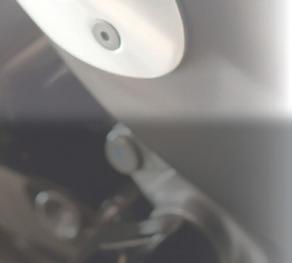






















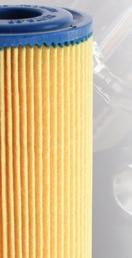

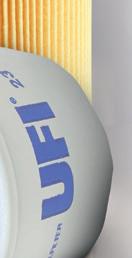









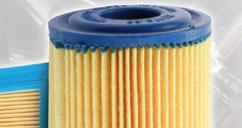


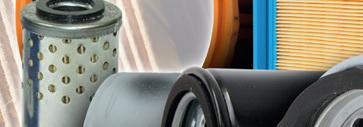









My name is Kameron Cross. I’ve been messing around with bikes and mopeds for a few years now by myself. I have a 1977 Honda NC50 Express, a 1977 Sparta Buddy with a Sachs 504 in it, and a 1984 Honda CB650SC Nighthawk that I restored (my favorite). I’m 22 years old and I’ve been interested in antique motorcycles and restoring them, learning everything about them and talking about them. It’s been hard to find anybody to learn from near me. No mechanics want my help even if it is for free. No one in my family has any particular interest in my 30-plus-year-old motorcycles. I guess where I’m going with this is where should I start? It feels like I’m looking for a mentor that doesn’t exist.
I would like to find someone who doesn’t mind having some help and maybe giving a few pointers along the way so I can learn from them. I don’t want any pay. I read the shop manuals for my bikes and I do all the research I can, but in the end I feel I’d get a lot more out of helping somebody work on their bikes and learning from them. I’m located in Portland, Maine.
Kameron Cross kameroncross1017@gmail.com
Who out there can be a mentor for Kameron, or can suggest someone for him to contact in the Northeast area of the country? Email Kameron directly with your suggestions or feedback. Let’s help this young motorcyclist find a friend to wrench with. — Ed.

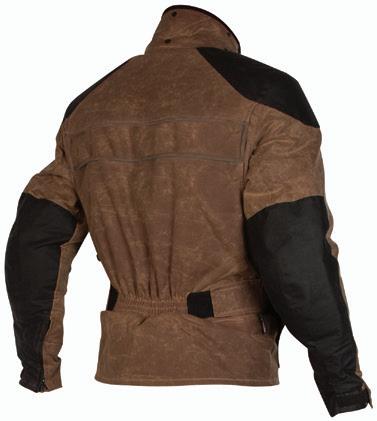
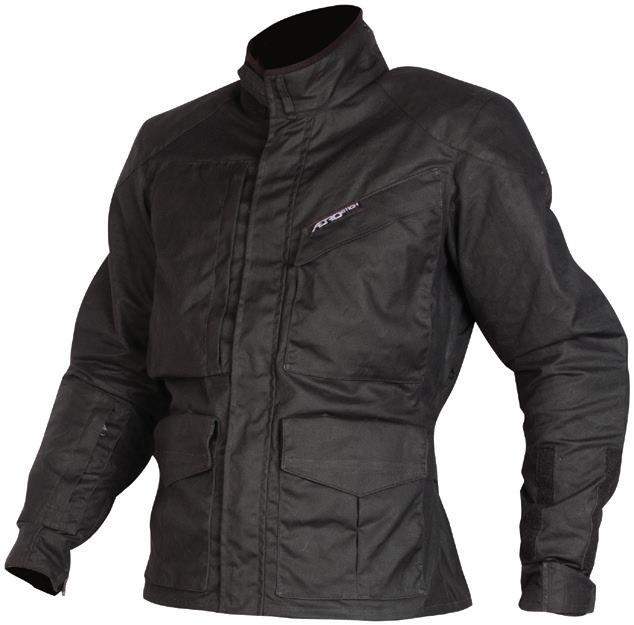

Classic waxed cotton and modern design merge in a serous riders’ jacket. The CJ’s details and features have been refined across thirty years of rider input and experiences. There are over sixty off-the-rack in-stock sizes for a precise, professional fit and unmatched all-day comfort. Waxed cotton provides extreme all-weather performance over any distance and to every destination. It’s proven waterproof and breathable technology that is literally from another century and it still works great and looks amazing today. Additional features include the ergonomic pockets, vents, and rain flaps.


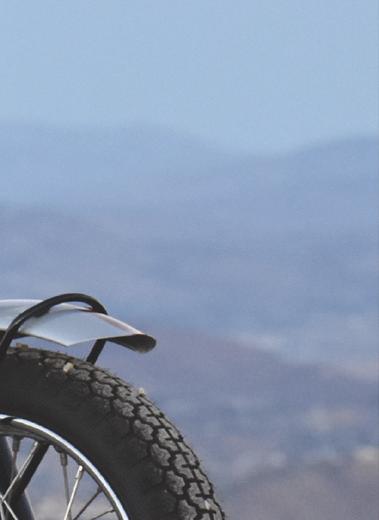















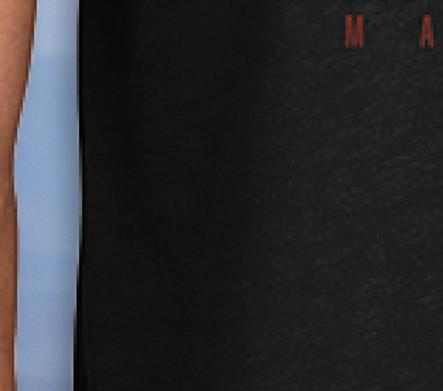








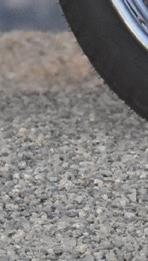

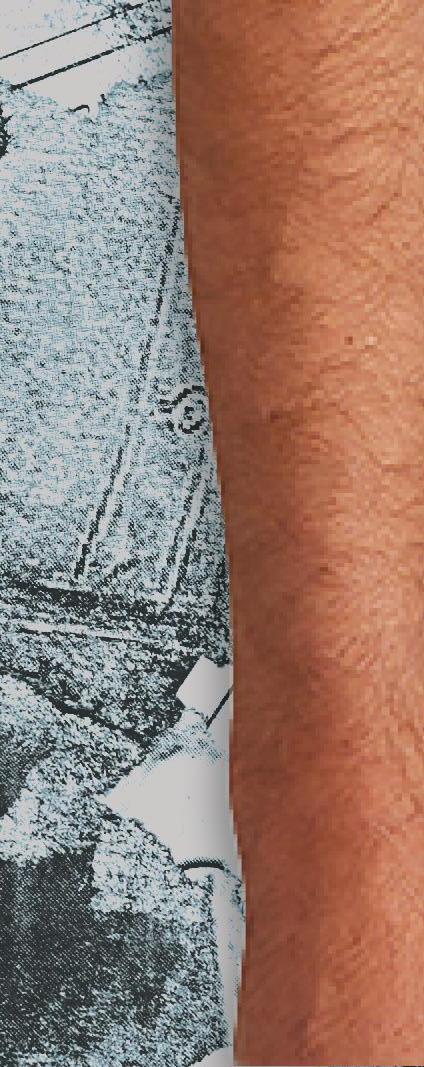









It was a trip to Europe by Soichiro Honda and company finance director Takeo Fujisawa that led to the development of the Super Cub. While Honda-san was more interested in European race bike technology, Fujisawa was looking for a killer product that would sell in vast numbers. He would have noted the success of Vespa, NSU and Kreidler: between 1953 and 1958, NSU sold more than a million of its 50cc Quickly mopeds, while in 1959, a third of all German motorcycles were Kreidlers, principally the 50cc Florett. 15 million Vespas were reported to have been built between 1946 and 1964. Fujisawa saw an opportunity and the company grabbed it.
Honda designed a step-through motorcycle around a hybrid frame combining steel pressings and a single downtube. The engine sat low and was centrally located in the frame with large 17-inch diameter wheels for stability. Power initially came from a 49 pushrod air-cooled 4-stroke engine with splash lubrication and a washable oil screen: (“Not more complicated than the engine in a lawnmower,” noted moto-guru Kevin Cameron). The semi-automatic 3-speed transmission used a centrifugal clutch which was also disengaged by the footshift lever.
These features were said to have been required by Fujisawa-san so a soba delivery rider had a spare hand to carry a tray of noodles! Cables and wiring were hidden behind a combined legshield/fairing molded in polyethylene, and the final drive chain was fully enclosed for cleanliness.
crete! The Super Cub, like that famous watch, still kept on ticking.
Years produced 1958-1986
Claimed power 4.5hp @ 9,500rpm – 8hp @ 8,000rpm
To say that the Super Cub changed the course of motorcycling is an understatement. For the first time, there was a reliable, family- and user-friendly commuter motorcycle that also spoke quality and economy. And unlike most of its contemporaries (to say competitors implies there were any), it used a quiet, efficient four-stroke engine that didn’t require mixing oil with the fuel — a fiddly, smelly, onerous, and potentially dangerous task. The Super Cub was the antithesis of bad-boy biker culture.
Top Speed 43mph – 68mph
At first ignition was by flywheel magneto and only a kickstarter was fitted. Curiously, the Super Cub eschewed moped-style pedal-assist, presumably to indicate that it had sufficient power of its own — but this choice restricted sales in some European markets where pedals would have meant no motorcycle license was required. (A moped version, the C310S was produced during the 1960s) The bike’s name incidentally, was derived from Honda’s clip-on engine of 1952, the Cub F.
Engine 49cc (40mm x 39mm bore and stroke) – 97cc (50 x 49.5mm) air-cooled, OHV(OHC) four-stroke single.
Transmission Three- (later four-) speed semi-automatic with centrifugal clutch
Weight 143-205lb
MPG Up to 200mpg
Price then/now $215 (1962)/$1,500-$5,500
And Honda didn’t stop developing the Super Cub (which became the Passport the U.S. after 1980). The launch model 50cc C100 was produced to the mid-Sixties alongside the C102 with electric start and coil ignition. The C50, 71.8cc C70 and OHC 89.5cc C90 ran from 1966 to the 1980s, replaced in 1986 by the 4-speed 97cc C100EX with CDI ignition. The 2000s introduced the Super Cub 50 and 110. The latest Super Cubs are available in 50 and 125cc with programmable fuel injection. Power has gone from 4.5 horsepower in 1958 to more than 9 horsepower.
The durability and utility of the Super Cub have become legendary. In a feature for Discovery TV, Charley Boorman tried to destroy one, swapping out the engine oil for cooking fat, seriously overloading it, and, ultimately dropping it from 70 feet onto con-
The Super Cub’s success has generated some staggering production and sales numbers. Over 50 years from 1958-2008, Honda built more than 60 million units in at least 15 factories around the world. When completed in 1960, Honda’s Suzuka factory alone could produce 50,000 units a month running two
shifts. Correctly anticipating income growth and the need for inexpensive transportation in developing countries, Honda has kept in step with demand. Total production is now estimated at over 100 million! And that‘s without the further millions of knock-
offs built around the world. Ironically, given the numbers produced, early Super Cubs are becoming quite collectible, with a restored 1966 C100 selling for $5,500 at the January 2023 Mecum auction in Las Vegas. MC
1963-1984 Suzuki M30, F50 Suzy, F70, F80, FR50, FR70, FR80
If imitation is the sincerest form of flattery, Suzuki paid Honda one of its greatest compliments in emulating the Super Cub. First came the M30 with kickstart and its 2-stroke engine using 15:1 fuel/oil premix lubrication. Like the Honda, It featured an underbone step-through frame (but in pressed steel) with plastic legshields and 17-inch wheels. Similarly, it used a 3-speed transmission with automatic clutch, leading link front suspension and swingarm rear. It was followed by the reed-valve U50 dual-seat Suzy and single-seat F50 and F50 deluxe models in 1969 with Suzuki’s CCI oil injection system. The larger displacement F70 was launched in 1969. Revised versions of the F-range (FR50 and FR70) arrived in 1973, with the FR80 replacing the FR70 in 1976. FR50 and 80 production continued into the 1980s.
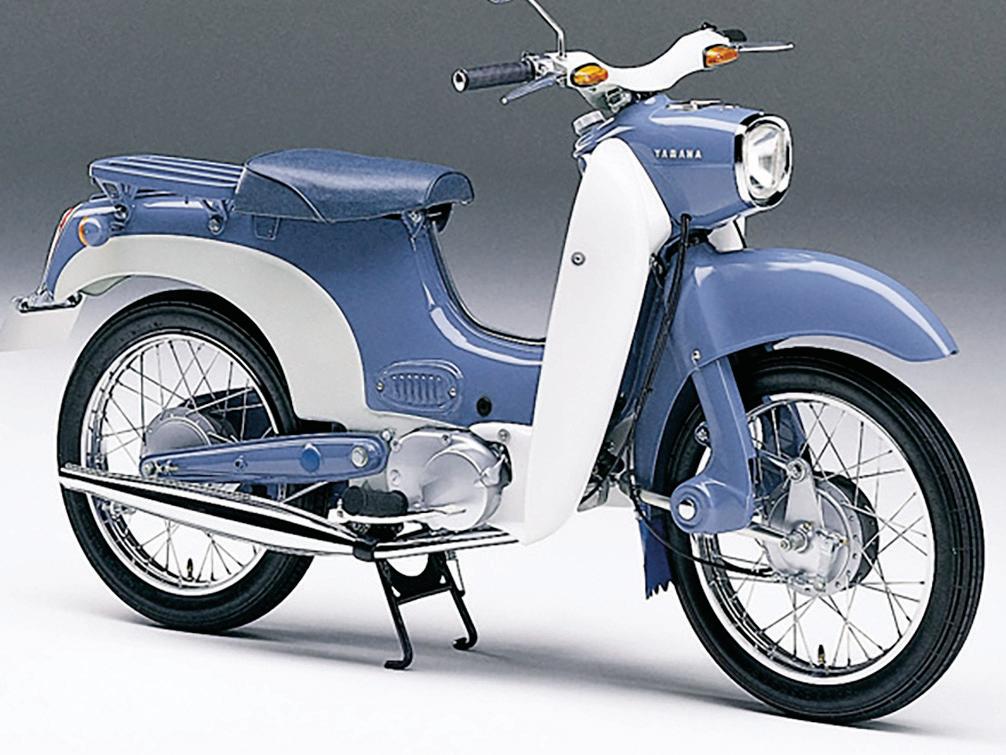

1960-65 Yamaha MF-1, 1965-1972 Yamaha U5 and U7 Mate, 1971-86 Yamaha V50, V70, V80, V90
Like Suzuki, Yamaha’s offerings in this class followed Honda’s lead closely, though with some notable differences — a 2-stroke reed-valve engine instead of Honda’s 4-stroke, for one. Most visibly, Yamaha put the electrical controls including the turn signal switch on the left handlebar — not so convenient for soba delivery! It seems the U7 model was available either with 6-volt electrics and kick starter, while the U7-E had 12-volts and electric start — depending on market. For example, a U.K.-market 1972 V90 test bike was fitted with 12-volt electrics yet was kickstart only. No front brake light switch was fitted either, so riders had to remember to use the rear brake to activate the stop light.
• Years produced: 1963-1984
• Claimed power: 4.5hp @ 6,000rpm – 6.8hp @ 6,500rpm

• Top Speed: 46mph (FR80)




Such was the apparent similarity with the Super Cub that a glance could persuade a casual onlooker that it was a Honda. Layout and functionality were similar, and performance comparable, though one tester found the FR80 delivered “appreciably more acceleration” than the Honda 90. It easily climbed a test hill cresting the ridge at 45mph, having “hardly slowed at all.” Brakes had “more than adequate performance,” and the Suzuki “rode comfortably enough on its suspension and seems to steer OK.”
• Engine: 79cc (49mm x 42mm bore/stroke) reed-valve 2-stroke single (FR80)
• Transmission: 3-speed semiautomatic with centrifugal clutch
• Weight: 161lb
• MPG: 85mpg
Production numbers are difficult to find, but based on the number of survivors, it seems likely Honda handily outsold its competition in the U.S. at least.
It seems the Yamaha U and V models were sold sporadically in the U.S. over the years. The V-range was discontinued in 1985, replaced by the 4-speed, 4-stroke T-80 Townmate with shaft final drive.
• Years produced: 1960-1982
• Claimed power: 4.5hp @ 6,000rpm (V80)
One tester found the V90 “had good brakes,” with “strong acceleration and good usable power on tap,” and “absolutely stormed” the test hill. However, the tester also reported that the suspension was “diabolical … it handles like a La-Z-Boy armchair, with soft and bouncy springs and no effective damping: watchout, it’s all over the road!” The tester also thought the V90 was under geared and would probably pull a higher ratio with ease
• Top Speed: 52mph (V90)
• Engine: 89cc (50mm x 45.6mm bore/stroke) reedvalve 2-stroke single (V90)
• Transmission: 3-speed semiautomatic with centrifugal clutch
• Weight: 156lb
• MPG: 85mpg
“Ironically, given the numbers produced, early Super Cubs are becoming quite collectible.”A 1960 Yamaha MF-1. A 1963 Suzuki M30.
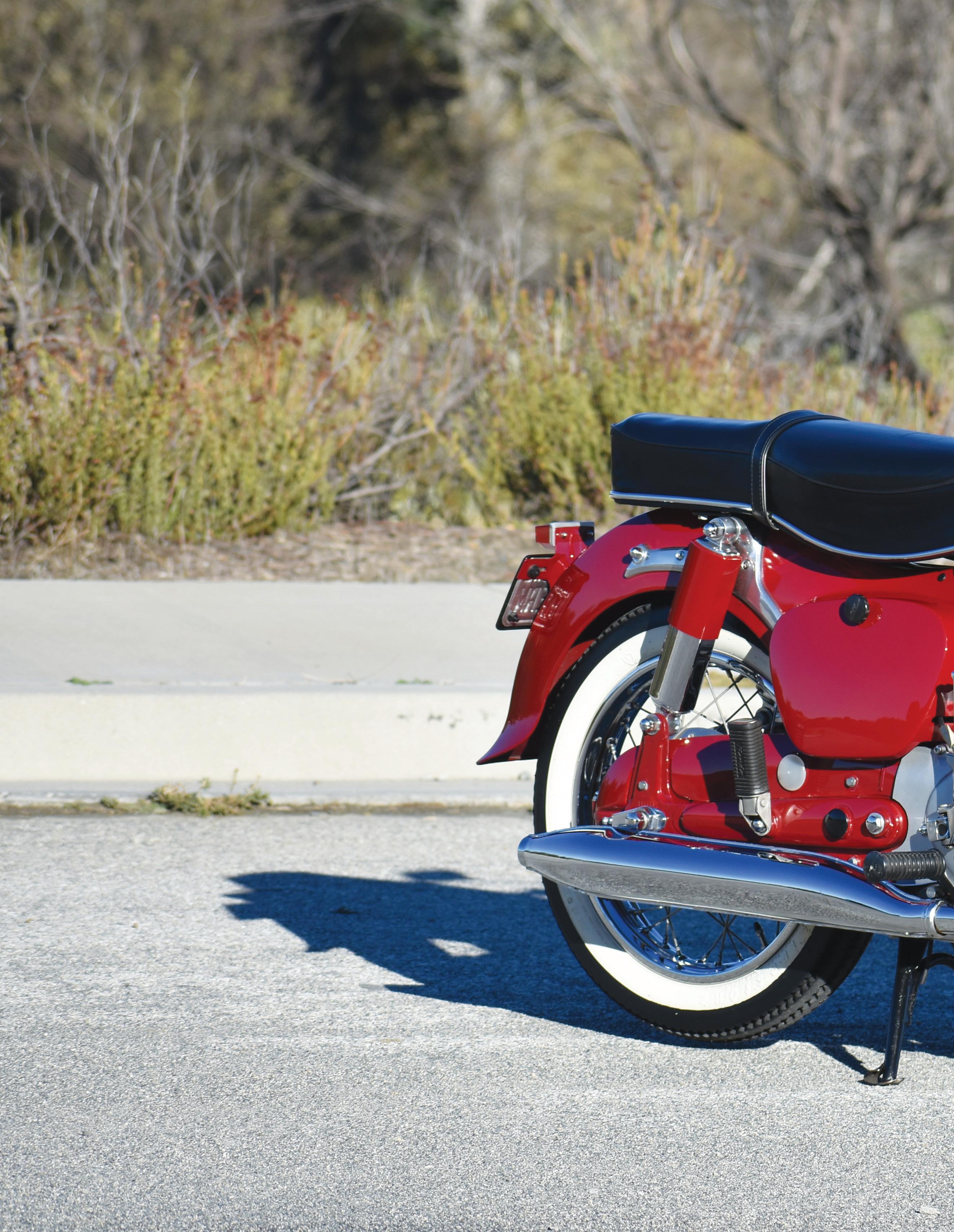 Story and photos by Dain Gingerelli
Story and photos by Dain Gingerelli


DDecember 1958: “This new product from Japan will have, no doubt, a great appeal among the medium-weight motorcycle devotees of America.”
So began Cycle magazine’s Road Test No. 99 featuring a new Honda motorcycle that the report described as “one of the first Honda Dream 300cc OHC to be imported to the States.” In a subsequent issue, the editors acknowledged that the Dream 300 (Honda referred to the model as a 300, although actual engine displacement was 305cc, which in turn, was based on a 247cc twin) tested was “the very first Honda to land on the West Coast from its country of origin, Japan.”
No other model designation was given throughout that threepage magazine article, although the bike was probably an early C76, which, according to some sources today, represented the second year of the Dream C71/C76 (250cc/305cc engines respectively) models that first appeared in 1957. Those early Dreams featured dry sump engines with remote oil tanks. Their engines had the clutch assemblies affixed to the left end of the engine’s crankshaft, and a 6-volt electrical system fed an electric starter for fire-up. This was an engineering novelty for the time and a feature that continued, along with an auxiliary kick-start lever, throughout the Dream’s production cycle into 1967.
Fact is, inconsistency often becomes an irritating commonality among Honda aficionados when deciphering specific model designations for those first Dream models. For instance, while researching material for the Dream featured here, and according to its owner Mike Freitas, the bike’s VIN and engine number stamping (prefix of C77, coupled with an “A” in the bike’s specific number sequence) suggest it to be a 1960 model. At that point the records tend to get cloudy, even contradictory, as records indicate that American Honda had Dream bikes in its American inventory listed as C77 (but with no A in the number sequence) for 1961.
Discombobulated might be another descriptive for the Dream model lineup’s lineage because, depending on what source you tap, model descriptions can overlap or contradict each other, based on a bike’s year of manufacture, VIN and engine number and so on. For instance, one source dates the first dry-sump variant as non-electric start, while another says

NOS gas tank emblems and the proper Yazaki speedometer found their way onto Mike’s Dream. Below, Mike takes his trophywinning bike for a Dream ride.
Engine: 305cc air-cooled, OHC 4-stroke parallel twin, 60mm x 54mm bore and stroke, 8.2:1 compression ratio, 23hp @ 7,500rpm
electric starters were on all Dream models throughout their history (which is more likely). There’s also overlap about when the A was added to the model designation (that is, from C77 to become CA77). In any case, the A indicates the Dream as a U.S. or American model (while domestic Dreams retained the single C designation, and so on). Given that, Mike’s C77 preceded the CA77 designation that came by (according to some sources) mid-1960, or 1961. In fact, this bike’s VIN began with C77-A1xxxx (the A signifying it as an American model). It’s generally accepted that the 1961 bikes were marked CA77-1xxxx (plus the small batch of C77-xxxx).

Top speed: 86mph (period road test)
Carburetion: Single Keihin 22mm
Transmission: 4-speed constant mesh, wet multiplate clutch
Electrics: 12v, battery and contact points ignition
Frame/wheelbase: Pressed steel frame w/engine as a stressed member/51.5in (1,308mm)
Suspension: Leading link front fork, swingarm with shock absorbers rear
Tires: 3.25 x 16in front and rear
Brakes: Single-leading shoe drums front and rear
Weight: 356lb (161.5kg)
Price then/now: $595/$6,000-$13,000
Another source citing American Honda documentation shows that CA77 models were “released” (made available) to U.S. dealers
on 08/01/1960, and were sold from 1961 through 1963. Those models purportedly had chromed tubular-steel handlebars, and shared the same “roundish” gas tank design with chrome side panels, but with rubber knee grips as found on subsequent Dream models. The waters continue to remain murky until about 1963 when the CA77 Dream (along with the CA72 Dream 250), by now favoring styling that most enthusiasts today are familiar with, composed the lineup. Production for all Dream models ended in 1967 (although dealers continued to clear their Dream inventories into 1968 and ’69, reportedly selling some bikes as … 1968 and ’69 model years!). You get the picture.

Regardless of the nightmare that this confusion caused, all Dreams were based on a stamped-steel frame that utilized the engine as a stressed member, eliminating the need for a front down tube. Styling beyond the squarish headlight included flared fenders, 16-inch wheels (often wrapped with whitewall tires), and

adequate chrome trim and parts to catch the eye. Two downswept mufflers helped give the bike a semi-contemporary appearance (stainless steel mufflers were used one year, and up-swept pipes were found on domestic and various International-market CS77 Dream Sport models that often featured a solo seat, luggage rack and pressed-steel handlebars among other noticeable differences).
Interestingly, too, Cycle’s 1958 Dream test report was written in future tense because throughout that year Honda Motor Company (Japan) was still in the process of setting up its U.S. distributorship for exporting to America. According to Cycle magazine, no other Hondas were known to be available in the country at the time of its December road test. Finally, and after adhering to the Japanese business practice known as sogo-shosha that melded international marketing, law, financing and export/import trade relations into a single factor, Honda Motor was in a position to establish its U.S. headquarters in Los Angeles, California, on June 11, 1959. Total investment capital was $750,000.
At that point the Dream name game became a little less confusing, and sources say that the dry-sump engine design had been shelved, replaced by the new, and much better, wet-sump system that also freed space (gone was the remote oil tank) for the bike’s new large-capacity 12-volt battery to better spark an improved electric starter into duty.
More to the point, establishment of Honda headquarters in America meant that it was game on for the aspiring Asia-based company, backed by its U.S. satellite, to become the world’s
dominant motorcycle company. Oddly, though, Honda’s big weapon for worldwide domination and U.S. conquest proved to be the venerable, and little, Super Cub C100, launched in 1958 and powered by a new, and rather competent, 50cc OHV engine. That model, Honda Motor Company’s two movers and shakers Mr. Soichiro Honda himself and his crafty business partner Mr. Takeo Fujisawa calculated, could — and would — sell more than 30,000 units every month, a phenomenal sales figure for the time.
Honda’s 1959 U.S. lineup also included the C92 Benly (later known as CB92), a spunky sport model powered by a perky 125cc twin-cylinder engine that touted the company’s racing ambitions, and that model was backed by the 250 and 300 Dreams. As noted, the original Dream engine relied on a dry sump with remote oil tank for lubrication. Its constant-mesh transmissions had a rotary-shift pattern (tap down for first through fourth gears, and down again to return to neutral), and the “big” twin-cylinder engine was fed by a single, and rather small, 22mm Keihin carburetor. The transmission for U.S.-bound Dreams featured the one-down/ three-up return-shift pattern more familiar to American and European riders. It’s worth noting that the 305cc engine delivered a claimed 23 horsepower at 7,500rpm. CA77s were known to have their speedometer dials nervously quiver in the mid-to-upper 80mph range during top-speed runs, depending, of course, on prevailing conditions.
Now might be a good time to talk about that Dream moniker. Through the years some enthusiasts have suggested that the big (by Japanese motorcycle standards) twin-cylinder bikes rode so

well that it was like riding a dream. Perhaps. But according to Tetsuo Sakiya, author of Honda Motor: The Men, The Management, the Machines, the name came about quite by accident when, in August, 1949, Honda completed its first motorcycle, officially designated the Type D or Model D. Prior to that Honda Motor was known for making small clip-on engines sold to bicycle companies for their customers to attach onto their personal pedal bikes for power assist. As Sakiya wrote about that first true Honda to roll off the assembly line, “a celebration party was held in the office, with all the desks pushed into one corner [to make room for the bike]. President Honda and his twenty employees had reason to be satisfied as they drank home-brew sake and ate sardines and pickles. Someone said, ‘It’s like a dream!’ And Honda shouted, ‘That is It! Dream!’” The name stuck, and given Honda’s phenomenal growth through the years, the company has yet to fully awaken from its dream-like state.
Through the 1950s many subsequent models shared the Dream moniker, but by decade’s end only the press-steel-framed 250/300 models (soon joined by the CA95 Benly 150 that’s often misconstrued as the “Baby Dream”) carried the Dream designation into the 1960s. Since that time, and as Honda Motor Company grew, boasting a wide range of models, only certain and, generally speaking, special models have perpetuated the honor.
The original Dream line, with its twin-cylinder engines and complimented by smaller-displacement Benly models with 125cc and 150cc engines, soldiered on. But those bikes, sharing similar pressed-steel frames and bulbous fenders as on the Dreams — and all with squarish and clunky styling — never really caught on with American enthusiasts, as did their CB and CL stablemates that were to come in 1961 and ‘62. However, enough Dreams were sold on an international level that Honda engineers and styl-

ists continually updated and improved upon what they already offered. For instance, in 1961 the engine oil breather was relocated on the engine case, later to be moved again to the engine’s cylinder head. The Keihin carb changed from a round bowl to a square bowl in 1964, and the cam chain tensioner was relocated from the left to the engine’s right. Even the engine numbers were changed in 1963, extending the number to eight digits. There was more, and that continual updating (through 1967), as much as anything, also helped create the confusion concerning model specifications and part numbers, leading Honda Dream aficionados to eventually coin two phrases: “Early Dreams” and “Late Dreams,” the invisible line of demarcation helping owners (according to many Dream experts) distinguish between the model’s first run from 1960-‘63, and subsequent models of 1963-’67.
Honda collector Mike Freitas learned about that Dreamfilled confusion when he acquired a rather pristine Black 1964 CA77 survivor in 2020. Showing a dream-like 3,500 miles on the odometer, only the bike’s two-up seat needed reupholstering. Otherwise the bike was all original, all there and certainly all right. He took delivery of the North Carolina bike in May of that year. A few months later another Dream 300 showed up on Cycle Trader. Mike checked it out, too.
That Dream turned out to be a rather rare 1960 C77, its paint a rich maroonish-red. This bike was an Early model, as evidenced by the VIN and engine serial number, each displaying an A within their sequence (engine showing: C77E-Axxxxx, frame VIN with no E). The odd-placed A signified the bike as being an early model destined for American Honda dealers back in 1960.

Note the compact size of the 1960 taillight. The personalized license plate matches what was found back in the ‘60s. The evening’s soft sunlight underscores the richness of the maroon paint.
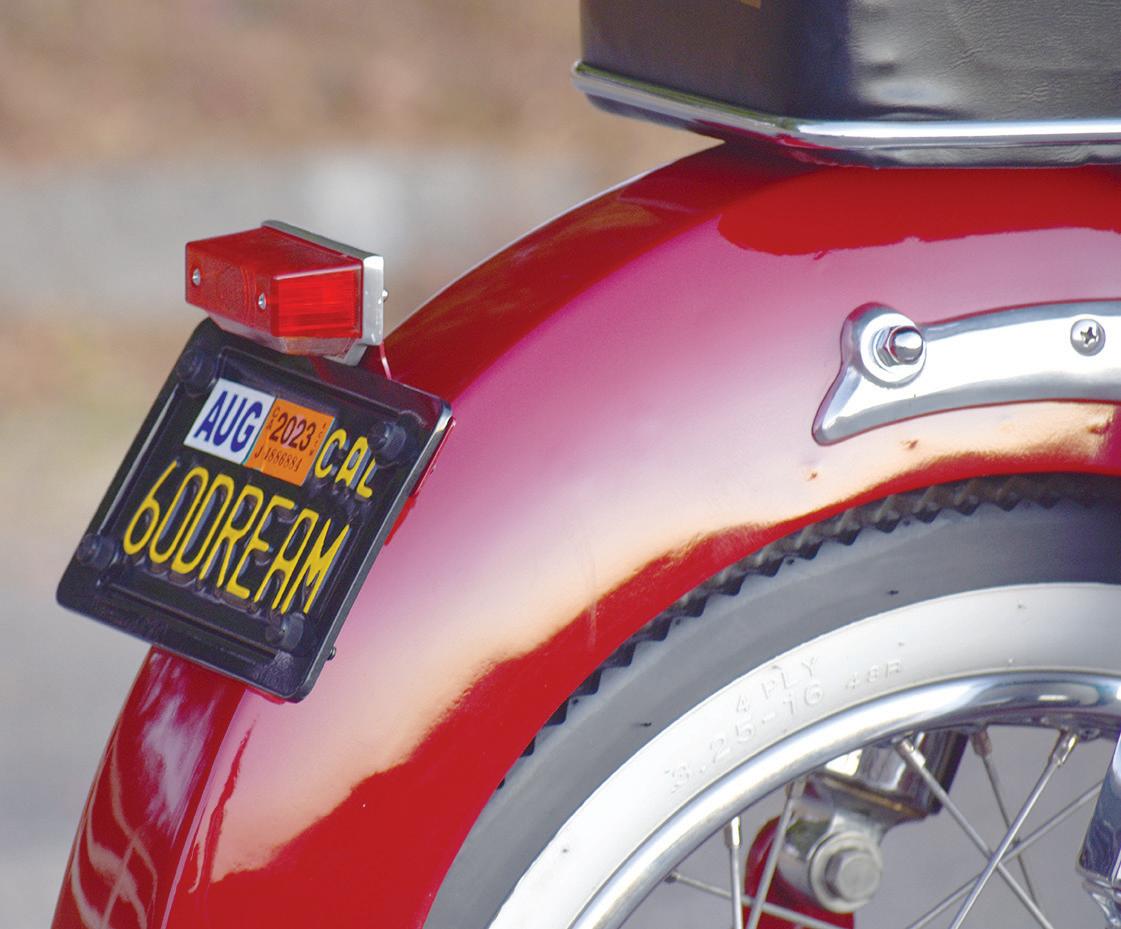
Mike points out that his maroonred bike was one of, as he states, “an estimated 300 built in 1960 for the U.S. market.” As noted, by 1961 model year the C77 prefix was destined to become CA77, the CA indicating North America delivery.
Even though Mike’s maroon C77 appeared to have been aptly restored in 1995 by its previous owner, a few questions remained concerning some of its parts, prompting Mike to do additional detective work to sort out its history and authenticity. Further complicating matters, the owner who restored it had passed away about 12 years prior to his widow selling the bike to Mike, so he had nobody to confer regarding the bike’s various parts and components.
“The bike had been advertised for several weeks,” explained Mike, “but nobody bid on it so I made an offer, and she [the widow] accepted it.” The bike was shipped from Colorado to Mike’s home in Southern California, and thus began his second Dream adventure. “When it rolled off the delivery truck I realized I had made a really good buy,” added Mike. The Honda was in much the condition shown here. Mike shod it with fresh Firestone whitewall tires from Coker, and he began his quest to locate the correct (and rather tiny!) taillight that was proper for the 1960 model year. He also located a suitable headlight nacelle with its integrated Yazaki speedometer without a high beam indicator, plus perfect-condition NOS Honda tank badges found their way onto the chromed flanks. Result when finished: The bike scored a perfect 100 points at the Concours d’ Elegance in Huntington Beach, California, and, to date, has scooped three Best of Show trophies elsewhere.
But what really sets this 1960 model apart from Late-model Dreams is the paint. “The color Maroon on this bike is shared with the CE71 (250cc) model from 1959-‘60,” says Mike. “There were four red colors that Honda ‘experimented’ with — Maroon, Tokyo Rose, Watermelon and Scarlet Red.” Mike also reveals that,


to this day, American Honda won’t officially acknowledge any of those red-tone colors except the now-familiar Scarlet Red, but his research says otherwise, “and I’m sticking to my story!” he says. Regardless, the Maroon, when viewed in soft light, and coupled with the clean whitewall tires, gives his bike a rather seductive, even opulent, look. Coupled with the C77’s smooth-top gas tank (more about that later), you wonder why Honda didn’t sell more of these bikes during the Dream era. Parked side by side, Mike’s Dream 300s offer a revealing comparison of the Early and Late configurations, as shown in some of the accompanying photos.
Indeed, by mid-1963 Honda had elevated the Early Dream CA77 to what became Late Dream CA77 status. The transformation included a reconfigured gas tank with reshaped chromed side panels and matching rubber knee grips, and each rear fender had cast aluminum seal plates with “Honda” script to fill the gap where turn signals for Japanese domestic models otherwise could be found. Later new tank badges, their script changed from “Honda Dream 300” to read “Dream,” were added, and more changes were to come. Sadly, though, gone was the gas tank’s smoothly curved, even supple, top surface, replaced by an unsightly weld seam because Late Dream gas tanks were made using a two-piece process that required the scarring pass of an arc welder to seal them together. Both the Late 250 and 300 Dreams shared essentially the same updated styling features from that point on.
In fact, according to Bill Silver’s book, Classic Honda Motorcycles, “after 901 of the 1962 bikes were built, the styling was changed to the type seen on all later [Dream] bikes.” Silver’s book points out that many other detail changes were made throughout the Dream’s production run, with variations sold in other countries and Japan often featuring sheet-metal-type handlebars, rotary gearboxes and turn signals similar to those on the C100.
Even though Honda had “Americanized” the Dream, some things hadn’t changed — their performance, ride and handling. As Silver, (aka, Mr. Honda by his customers and readers) noted, “the 250-305 Dream engines are really quite smooth runners,
especially in this chassis. Having high bars and reasonable seat height, they are quite comfortable around town too.” However, the ride itself remained a little harsh. As Silver points out, the “leading link front suspension has two limp dampers in front that match the pair at the rear,” offering “about 2.5 inches of [suspension] travel.” Most Dream enthusiasts also harbor a love/hate relationship with the model’s styling, especially concerning the rear shock absorbers’ squared bell covers (matching the squared headlight). There’s also a trade-off with the engine’s single carb, necessary due to the peculiarities of the twin-cylinder engine’s 360-degree crank throws when coupled with a dual intake tract. Silver also agrees the carb’s 22mm venturi opening restricts “top-end power potential,” but the trade-off is “strong midrange power and … great gas mileage.”




But fuel mileage wasn’t a concern for three Dream riders back in 1960 who set out aboard a trio of Hondas to establish a 3-Flag Run record for small-displacement motorcycles. Their feat was celebrated in the July 1960 issue of Motorcyclist magazine. The Dream Team included a C76 Dream 300, a CE71 Dream Sport 250 sporting a gas tank similar to that on Honda’s CB92 Benly (125cc), and a new CA95 Benly 150. Riders included Jack McCormack (who had been instrumental in helping Honda establish its U.S. distributorship in L.A.), Roxy Rockwood (a Los Angeles PD motor patrol officer who also had established a name for himself as a motorcycle racing announcer) and another young LAPD motor cop, Doug Woodward, each piloting the 300, 250 and 150 respectively. The trio rolled across the Canadian border into Washington
Honda made its mark on the motorcycle world with small, affordable bikes, and grew well beyond that to create some of the most important performance machines ever built. This guide to the collectible Hondas gives prospective buyers a leg up on the current market for groundbreaking classics like the CB77 Super Hawk, CB92 Benly, Dream 300, CB750, CB400F, as well as 1970 to 1979 models that are quickly becoming classics in their own right. Photographs of the models are accompanied by complete descriptions of specifications, components, paint codes and serial numbers. A five-star rating system rates the bikes on collectibility, parts availability, two-up touring compatibility, reliability and power. The author also highlights common repair and restoration needs, and looks ahead at future collectible models. This title is available at store.MotorcycleClassics.com or by calling 800-880-7567. Mention promo code: MMCPANZ5. Item #6428.
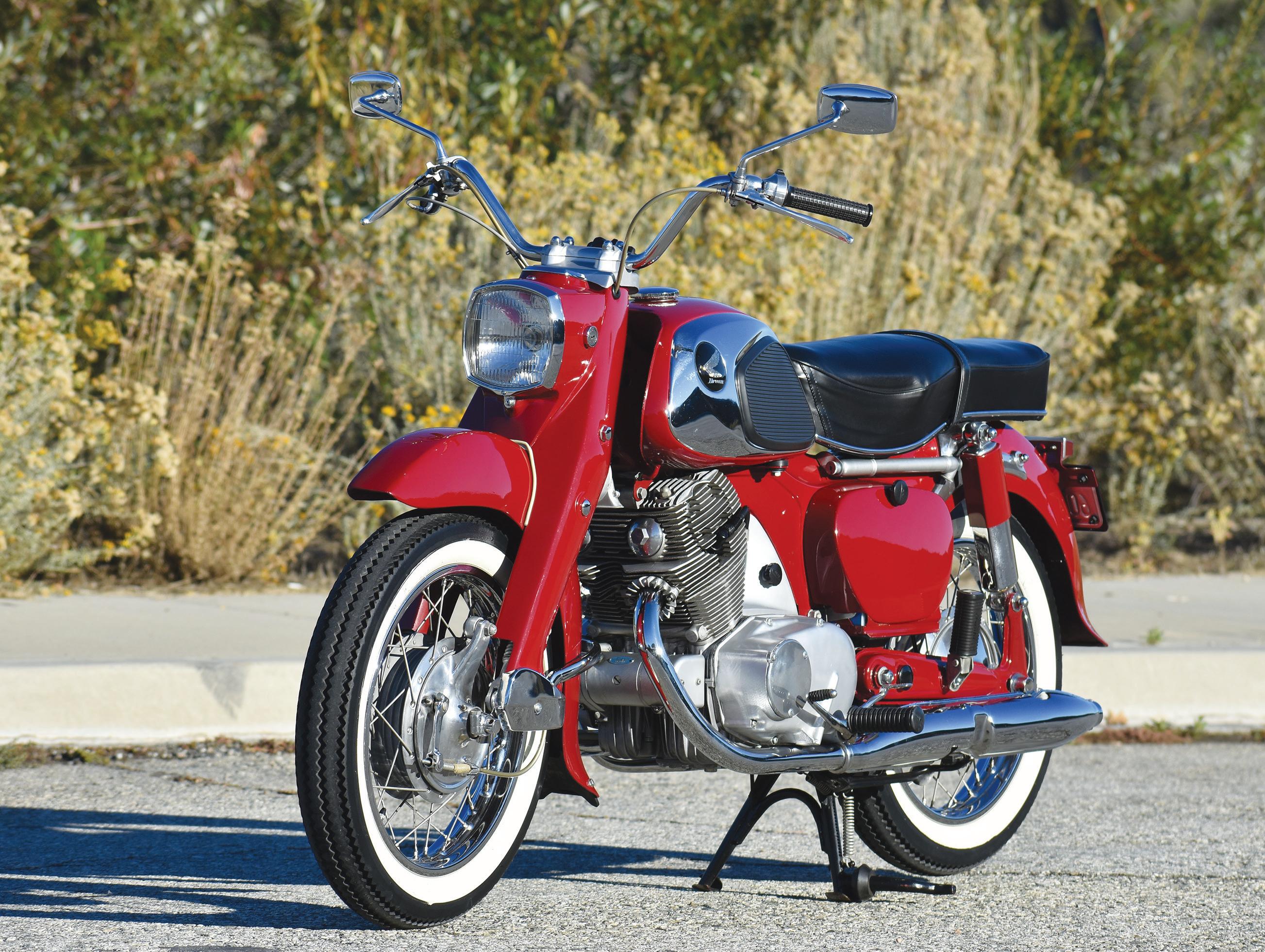

state at 2 a.m., May 11, 1960, heading for Mexico. As events unfolded, McCormack experienced a minor crash early on, forcing him and the wadded CA77 to drop out. After Roxy helped upright the battered Honda, their chase vehicle arrived, allowing him to resume his own chase for Woodward, who, while in the lead, was unaware of what had happened behind him. Eventually the 150 suffered its own problem, (later found it to be a fouled spark plug), forcing Woodward to wait for his teammates. Several hours later only Roxy on the 250 appeared. At that point Woodward, fresh from his unplanned rest stop, took the CE71 Dream 250 to the finish. He rolled into LA during the morning rush hour, which impeded his pace, but


Some classic motorcycle enthusiasts might contend that Mike Freitas lives in a Dream World. Here he stands between his Early Dream and Late Dream bikes.

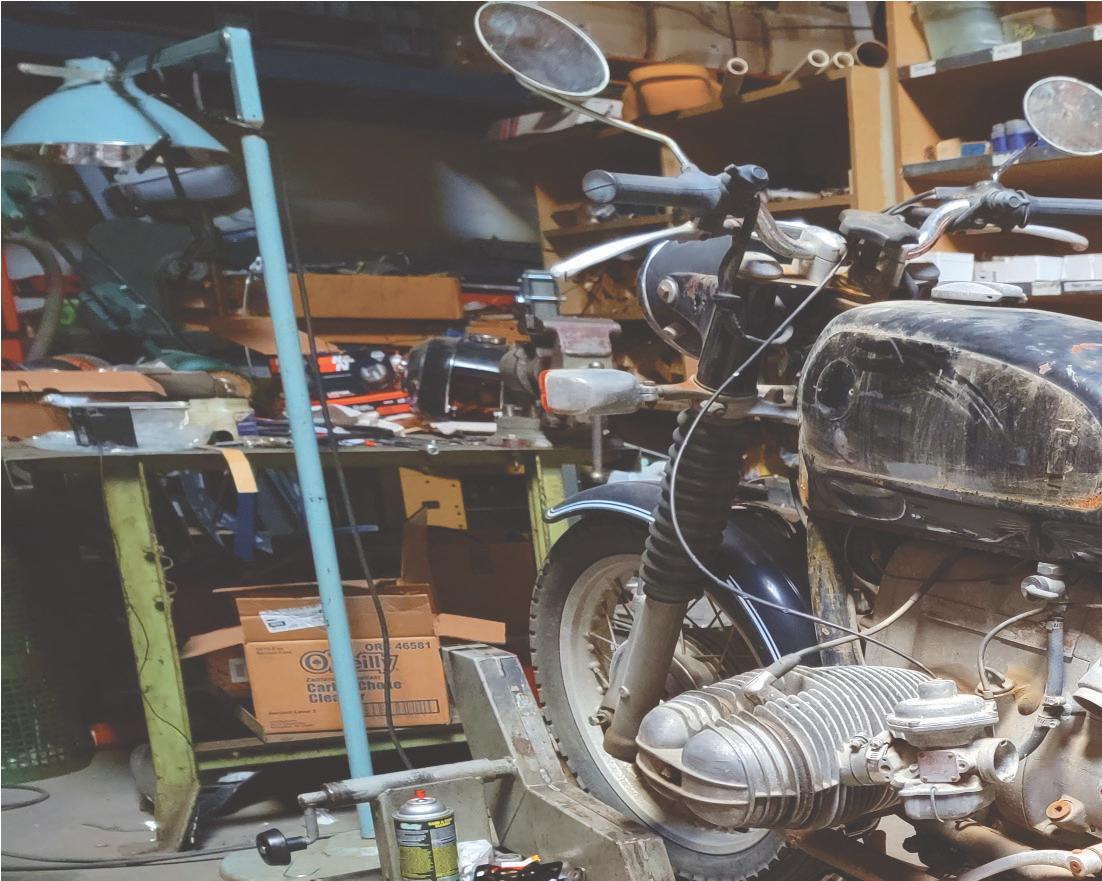
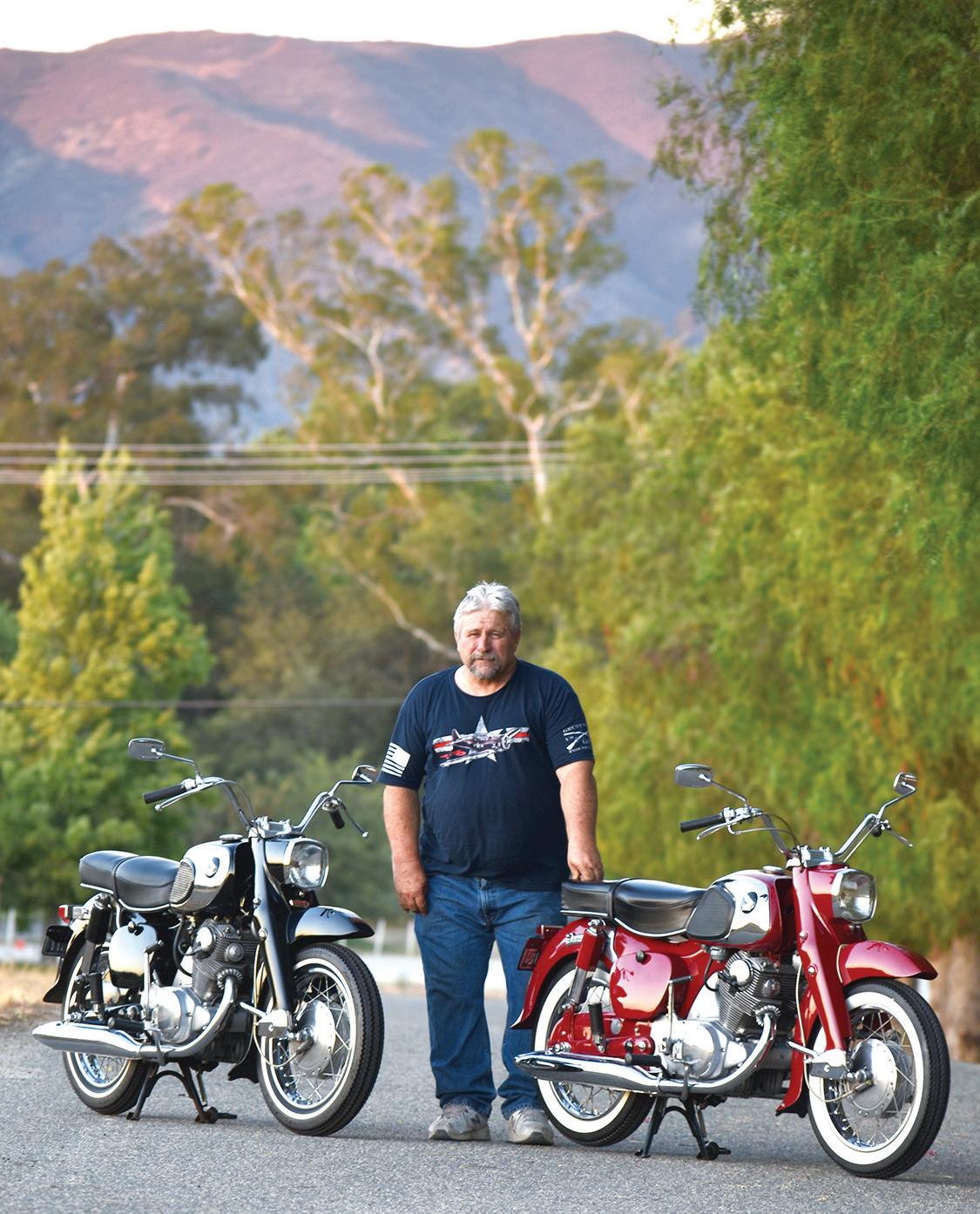
eventually he touched the Mexico border at precisely 10 a.m., setting a new 3-Flag Run record of 32 hours flat for lightweight motorcycles. The CE71 averaged 46mph, traveling 1,475 miles in the process. Some bigger bikes of that era could only dream of matching that pace …
In 1961 Honda introduced the CB77 Superhawk (305cc) to market, the following year joined by the CL72 Scrambler (250cc). And with that the motorcycle landscape in America, and around the world, changed forever. Meanwhile the Dream (both 250 and 300 iterations) was eventually put to bed, its usefulness surpassed by Honda’s two new models, plus countless others yet to come.
MC



TThe 1913 Thor Model U gracing these pages resides at the Franklin Automobile Museum in Tucson, Arizona (see this issue’s Destinations, Page 70). It is an original motorcycle with a fascinating history. During its 110-year life it has been a running motorcycle, a bicycle, a barn bike, a resurrection project, and now, a museum display piece. Over the last century (plus one decade), this Thor has had only three owners.
The story begins with Arthur O’Leary, a Butte, Montana jewelry store owner, aviator, and combat veteran (a man who survived being gassed in World War I). O’Leary purchased the Model U new and in 1913 Montana, that must have made quite an impression (any ride in those days would have been an adventure ride). Ken Mulholland, a Montana high school teenager who knew O’Leary, bought the Thor in 1947 for the princely sum of $40.
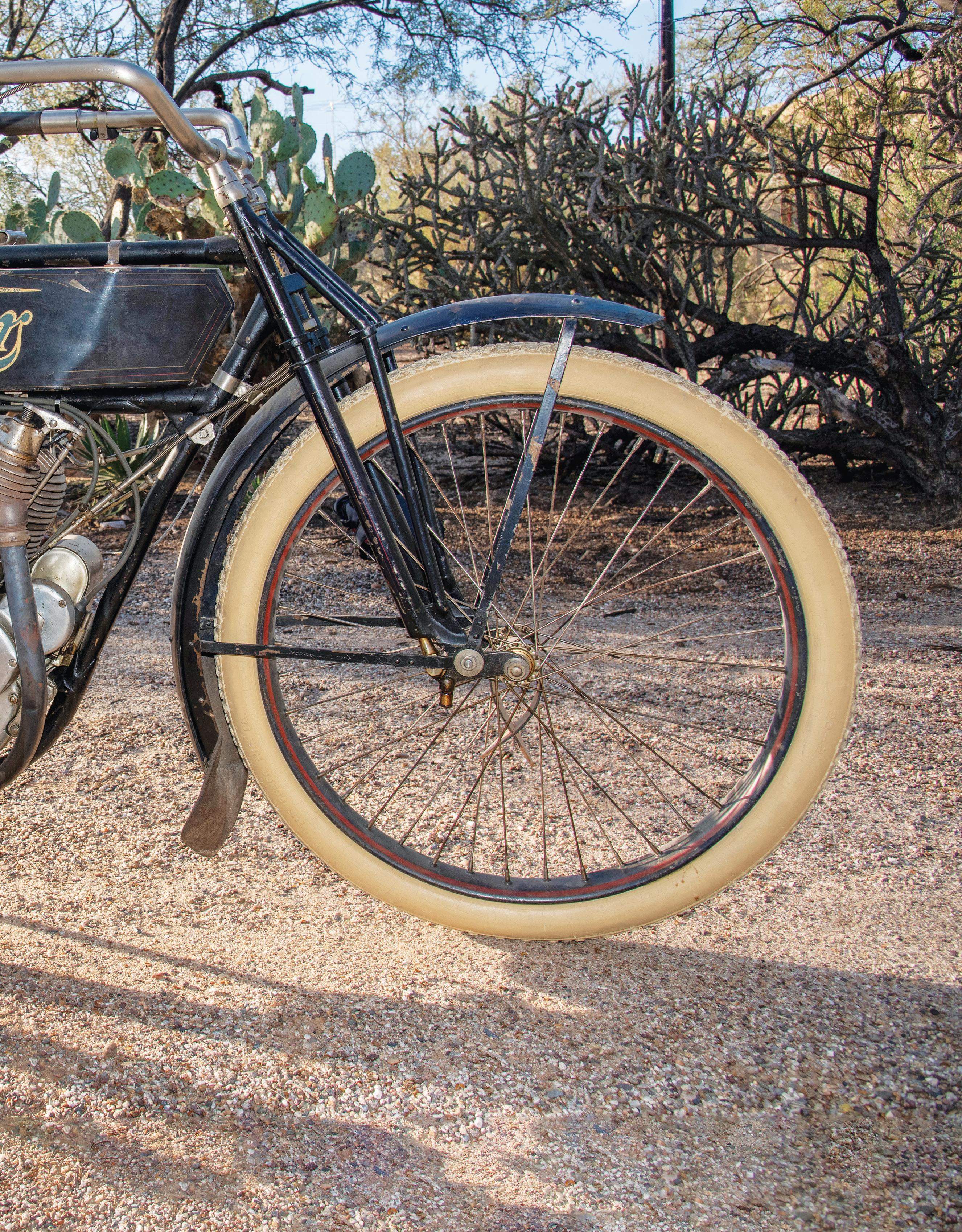
The original leather seat sits on a set of springs. It and the rigid truss spring front end are the only suspension on this hard-tail classic.


Engine: Air-cooled 61ci OHV 50-degree V-twin, 3.25in x 3.6in bore and stroke, 7 horsepower
Transmission: Undergeared internal with 1/2in x 5/8in pitch chain drive, 2.85 to 1 reduction ratio, optional 2-speed rear mounted transmission ($40 option)
Clutch: Oil wetted multiple steel disk Thor ball bearing clutch with large disk surfaces, lever operated
Ignition: Bosch high tension magneto
Carburetion: Thor improved double throttle carburetor
Frame and body: “Highest grade imported Manisman extra heavy tubing,” per the Thor manual. Extra-large one piece sheet steel fenders with wide side splash on each side of both wheels, 2-inch tire clearance to fenders, extra heavy nickel plating, pinstriping, color options included blue or white (both with pinstriping)
Wheelbase: 55.5in (1,410mm)
Suspension: Improved Thor rigid truss spring fork front, rigid rear
Wheels and tires: 28-inch front and rear wheels and tires, 2-3/4-inch tires, buyer selection of United States, Federal, Goodyear, or Empire tires
Brakes: No front brake, Thor coaster brake, pedal operated, at rear
Saddle: Troxel new improved large eagle seat, 29-inch seat height, Thor spring steel seat post
Controls: Thor improved positive double grip control (left side throttle, right side spark advance/retard), lever-operated clutch on left side, compression release on right handlebar, pedal-operated rear coaster brake
Capacities: 2.75gal fuel, 1gal oil
Weight: 225lb (102kg)
Price then: $290, plus optional 2-speed hub-mounted transmission, $40
When Mulholland acquired the Thor it had not run for several years, and he didn’t get it running during this first ownership stint (we’ll get to the second one in a bit). Young Mulholland was undeterred; with the Thor’s pedals and compression release he used it as a 225-pound bicycle. He pushed and pedaled the Thor up Montana’s hills and coasted down.
Mulholland joined the Navy, became an aircraft maintenance tech, and befriended Ray Paxson (a career Navy noncommissioned officer and fellow motorcycle enthusiast). After the Navy, Mulholland moved to Phoenix and in 1957 he sold the Thor to Paxson. Mulholland regretted that decision almost immediately, and he tried to buy the Thor back from Paxson for the next 32 years. During that more than three decade span, the Thor literally became a barn bike (Paxson stored it in a Montana barn; he didn’t get it running, either). Mulholland enjoyed a career in the aerospace industry and pursued his sports car and motorcycle interests, displaying and riding his motorcycles at vintage events. Mulholland restored and sold a 1926 Harley-Davidson single and a 1913 original paint Indian twin; both now reside in Arizona’s Buddy Stubbs Museum. But Mulholland never forgot the Thor stored in Paxson’s barn. When Paxson passed away in 1989, Mulholland was finally able to resume ownership, purchasing the Thor from Paxson’s family (this time for $8,800, a bit more than the $40 he paid O’Leary in 1947).
After reacquiring the Thor, Mulholland embarked on a mission to resurrect it. His objective was to return the machine to running, original condition. Ever the engineer and enthusiast, Mulholland left notes, correspondence, and drawings, frequently
noting that he was “not restoring, only repairing.” His repairs included replacing a cylinder and its piston with original Thor parts, replacing one of the pedal spindles, and numerous other bits and pieces. The Thor’s rear wheel was toast; Mulholland fitted a non-original rear wheel but later found a Thor original with matching blue paint and pinstripes. Mulholland rebuilt the Bosch magneto to factory specifications and he did the same with the Thor carburetor using original Thor parts. Incredibly, when he bought the Thor from Paxson’s family, it still had its original Firestone “No Skid” tires (Mulholland removed those and replaced them with Coker reproductions). Other wear items and soft parts were replaced. Other than these changes, the 1913 Thor you see here is unrestored. The paint is original, as is the optional rear-mounted aluminum two-speed transmission (a $40 option in 1913). In Mulholland’s later years, a hip injury kept him from working on, starting, or riding his Thor, but the Thor remained his prize possession. Mulholland passed away in September 2018 and ownership of the Thor passed to his family.
The Aurora Automatic Machine Company played a key role in early American motorcycle development starting with Indian, extending to other manufacturers, and culminating in the production of Thor motorcycles. Aurora, founded in 1886, initially produced forgings, coaster brakes, and other parts for an emerging American bicycle industry. In 1899 Aurora’s Oscar Hedstrom built a
gasoline engine that was noticed by bicycle racer George Hendee. Hedstrom and Hendee’s interests and personalities clicked, and in 1901 they formed the Indian Moto Cycle Company in Springfield, Massachusetts.
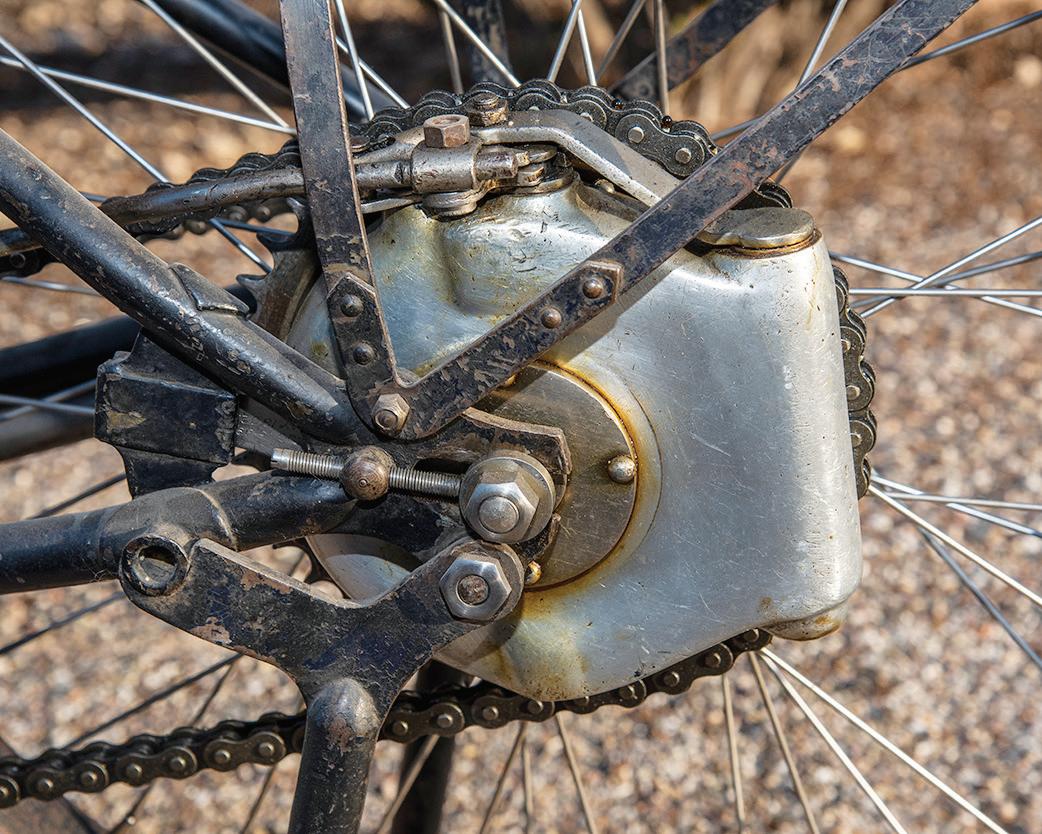
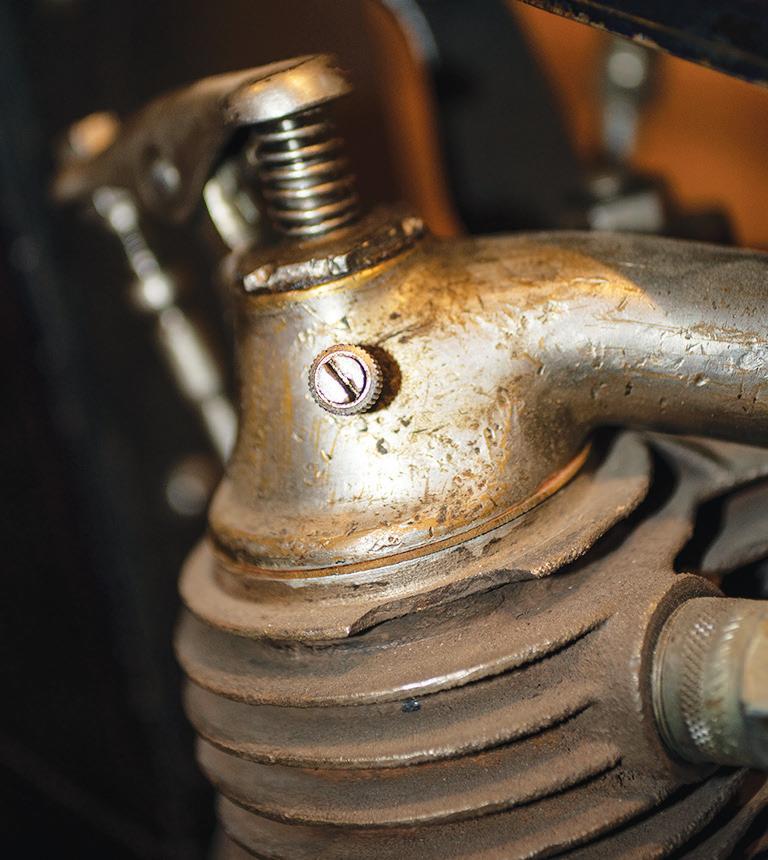

Indian initially subcontracted their castings, forgings, machined parts, and engine production to Aurora. In 1902 Indian built 137 motorcycles; Aurora manufactured all Indian engines that year and continued to do so until 1906. The contract between Aurora and Indian allowed Aurora to sell engines to other motorcycle manufacturers (with royalties to be paid to Indian). It prohibited Aurora from selling complete motorcycles but allowed Aurora to sell kits using Aurora engines. As a result, at least six other motorcycle manufacturers (including Sears) used the Aurora engine and other Aurora components, with all looking very much alike (the cover of Thor’s 1913 Directions - How To Operate Thor Motorcycles notes “There are now 65560 Motors in use”).
The emerging motorcycle market was big and promised to get bigger, and the vertical integration draw was more than Aurora or Indian could resist. In 1903 Aurora formed the Thor Moto Cycle and Bicycle Company. Indian took casting and machining operations in-house, and by 1906 Indian was building its own engines. With the loss of Indian as a customer, Aurora started selling complete Thor motorcycles, and by 1908 they had opened their own dealerships. The first Thor was a single (Charlie Chaplin owned one), followed in 1910 by an odd-looking 1,000cc V-twin (the rear cylinder stood straight up and
the front cylinder inclined forward). Thor added a redesigned clutch in 1911 and they changed the V-twin design in 1912 to incorporate push rods and thinner rockers. That same year, Thor oriented the cylinders symmetrically along a vertical axis (similar to today’s American V-twins, and as you see in the photos accompanying this story). In 1913, Thor offered the 625cc Model W single and the 1,000cc Model U twin. 1914 arrived with an optional 76-cubic-inch V-twin that could be ordered with a Schebler carburetor and the addition of floorboards (prior to that year the bicycle pedals served at footrests). Along the way, Thor motorcycles incorporated automatic intake valves, optional battery or magneto ignitions, lights, and different colors. The 1913 Model U 1,000cc twin was available in either blue or white.
The world was changing in the early 1900s and the changes did not bode well for Thor. Thor moved manufacturing from Aurora to Chicago and in the process lost many of their dealers. Thor added a more complex hub transmission in 1914; the added weight induced rear wheel spoke failures. Thor developed a three-speed transmission with reverse for sidecar applications hoping to secure a military contract but failed to win that business. Finally, World War I took too many potential customers to battlefields in Europe. By 1916, Thor Moto was no more.



Thor’s manual for the 1913 Model U makes for good reading. With no shortage of hyperbole, Thor described the Model U as the “most powerful Motor-cycle yet known, with unlimited speed. It will be the boss of the road and the pride of the boulevard.” It continues with “Several of the most noted gasoline experts in the United States have pronounced this new 7 H.P. Twin
Cylinder Motor, positively the most mechanically perfect internal Combustion engine of the age.” As a guy who has written ad copy, I knew this was good stuff. Who wouldn’t want to be the boss of the road and the pride of the boulevard, riding the most mechanically perfect internal combustion engine of the age? Beyond the salesmanship and hyperbole, Thor’s manual included detailed instructions for assembling the motorcycle, adjusting the valves and several other maintenance actions, and how to start and operate the motorcycle. I thought the maintenance descriptions were great; very few motorcycle manuals today include this information.


To start a modern motorcycle, we turn on the ignition, touch the starter button, and go. Turn back the clock 15 years or so and we had to open fuel petcocks, close chokes, turn on ignition switches, and hit starter buttons. Back up 60 or 70 years and, for the most part, we would have to add kickstarting to the mix. Go back a century or more (and for this 1913 Thor, it would be a cool 110 years), and starting a motorcycle was a far more complex activity.
A Thor motorcycle had to be on its stand to get the rear wheel off the ground (why will become clear shortly). A rider had to put the bike in gear by pushing the clutch lever forward (the large lever along the engine and fuel tank). If equipped with the optional 2-speed transmission, the bike had to be in second gear (accomplished by turning the T-handle on top of the clutch lever to align it with the direction of travel). The ignition had to be retarded with the right twistgrip and the throttle opened slightly with the left twistgrip (both stayed where set; there were no return springs). The compression release, mounted forward of the right twistgrip, had to be locked open. The engine had to be primed, the choke closed, and petcocks opened to allow fuel and oil flow. Priming involved taking a small amount of gasoline (from either the tank’s forward fuel access port or the fuel filler cap extractor) and pouring it directly into two intake domes (one on each cylinder; the intake domes have threaded ports for this purpose). Closing the choke involved rotating an air adjustment stem above the big tomato can carburetor’s float chamber and turning a throttle valve adjustment thumbscrew behind the carburetor. Having accomplished all that, a Thor rider would now be ready to crank the engine. The Thor has two chains (one on each side of the motorcycle) and a set of bicycle pedals that did double
duty as footrests. The rider would mount up and pedal like Lance Armstrong charging the Col du Tourmale. Pedaling spins the rear wheel, which then transmits rotational inertia through the rearhub-mounted transmission, which drives the chain on the Thor’s left side, which spins the 61-cubic-inch V-twin.
Once the process outlined above attained sufficient rotational inertia, the rider could release the compression release. If Thor and the other Norse gods were smiling (Thor was the Germanic god of thunder and lightning, which somehow seems appropriate), the engine would awaken and the opening chords of a delightful V-twin symphony would follow. Then, the rider had to pull the clutch lever back to disengage it and reverse pedal to stop the rear wheel (there’s a coaster brake back there, the only brake on this motorcycle). While the engine warmed, the rider would advance the ignition with the right twistgrip, open the choke (again, requiring two separate actions as explained earlier), and then (as Thor wrote with Aurora engineering precision) apply “a trifle” of throttle with the left twistgrip. If it was a cold day, Thor recommended holding a rag soaked in warm water around the carburetor’s float chamber.

The Thor’s copper fuel and oil tank has four fittings on the top left rear just forward of the seat, and three fittings below the fuel tank (also on the left side). The fuel filler cap is the first of the fittings on top. The Franklin Automobile Museum’s Thor has the optional fuel extraction device to withdraw gasoline for priming. The second filler cap is for oil, with a short oil vent tube behind it. The last fitting on top is an oil flow needle valve, which could be used to regulate the amount of oil routed to the Thor’s total loss lubrication system. Thor recommended any “standard grade gasoline,” but advised straining it through a chamois. They made the same recommendation for oil, noting, “Oil is more necessary than gasoline, as suitable oil cannot be obtained along the road as easily as gasoline.” Two fittings and a sight glass are underneath the tank. The first is a fuel access port where the rider could draw fuel, as Thor noted, “for any purpose.” The second is a petcock that allows fuel flow to the carburetor. The oil sight glass shows the presence of oil, and a few inches below it, an oil line petcock on the oil line allows oil to flow to the engine. Presumably, failure to open this valve would void any warranty that might have existed, but not to worry. Thor’s manual stated “The Chief of the Service Department is a man of Skill and Discrimination. The service Department makes PROMPTNESS its aim. It is the plan of the Service Department to render PROMPT SERVICE rather than to ask questions.”
The Thor’s total loss lubrication system would consume a quart of oil every 50 to 300 miles depending on conditions and riding style. The oil tank holds one gallon. With a top speed somewhere between 50 and 65mph (depending on conditions and if the motorcycle was equipped with the optional two-speed
gearbox), a Thor wasn’t likely to run out of oil. “They smoke a lot,” Paul Jacobson told me, “so as long as you see blue smoke, you’re good.” Paul is a man who would know; he rode his 1914 Thor V-twin 2,000 miles in the 2018 Cannonball Run.
As the throttle had no return spring, it could maintain a high idle (or any other setting, for that matter). With the Thor engine percolating satisfactorily, the rider would roll the motorcycle off the stand, put it in first gear by twisting the T-handle atop the clutch lever (such that it was perpendicular to the motorcycle), and feather the clutch lever forward to start moving. Once underway, both the throttle and the timing could be adjusted to suit riding conditions. Shifting was accomplished in accordance with Thor directions (“in shifting gears it is advisable to have motor speed as low as possible”). One can imagine that operating the throttle, the clutch, and the shifter (all with the left hand) kept a rider busy.
Vintage Thor riders have described the ride as spirited, with “adventurous” braking. A Thor motorcycle averages around 30 miles per gallon. If that seems like poor fuel economy compared to today’s motorcycles, recognize that gasoline was about 15 cents per gallon in 1913.
The 1913 Thor gracing these pages was last ridden in 2019 in Tucson’s Richland Heights neighborhood near the Franklin Automobile Museum. The Museum had a special event, and the Thor you see here was joined by previously-mentioned Paul Jacobson and his 1913 Thor. On that 2019 Tucson ride, the Thor’s fuel petcock mount failed, and it has not been repaired yet due to concerns about damaging the copper fuel tank’s original paint, but the current owners tell me it will be repaired and the bike will run again. MC


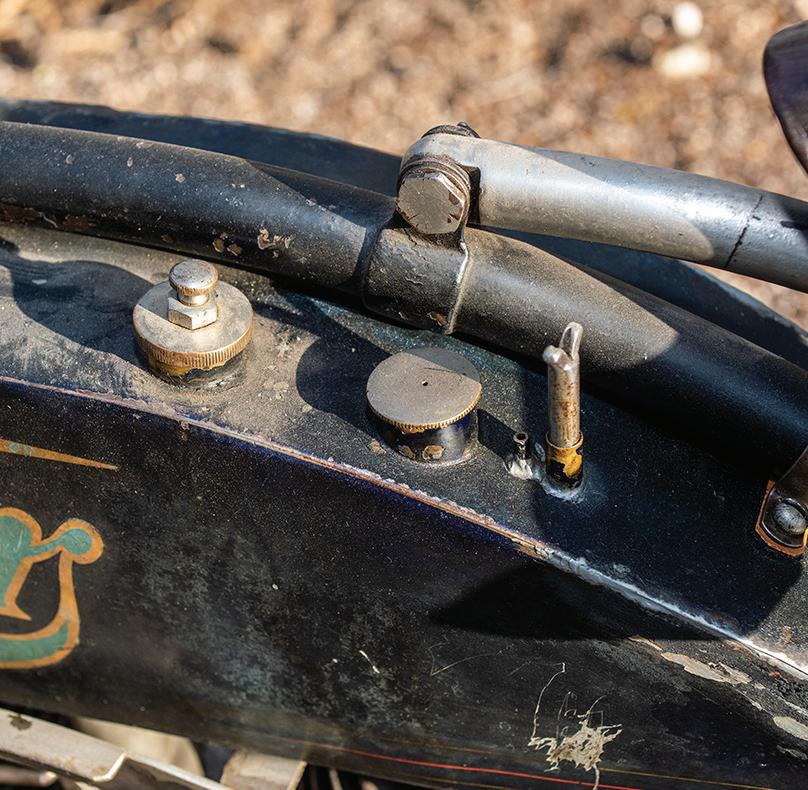
Take a trip down memory lane with the Motorcycle Classics Prewar Perfection special issue! Packed with stories about all different kinds of bikes, this collection features something old and interesting on every page. Travel to Berlin to discover the roots of the 1939 BMW R51, and learn how the 1930 Henderson KJ Streamline was used as a police transport vehicle. This is the perfect read for the history lover and motorcycle collector. This title is available at store. MotorcycleClassics.com or by calling 800-880-7567. Mention promo code: MMCPANZ5. Item #9769.

 Story by John L. Stein
Illustrations by Hector Cademartori
Story by John L. Stein
Illustrations by Hector Cademartori
SSo quiet is the Mojave at dawn, that it could be a deprivation chamber instead of a desert. The cool air is hauntingly still, and smells and tastes blissfully pure. Benevolent streaks of sunlight dart over the barren horizon, kissing your cheeks softly with the promise of a long, pleasant day.
The earth beneath is solid and secure, a bedrock of stability and assurance. And there is zero sound, truly none. At least, for the moment. Because, on just such a morning some 50 years ago, this welcoming, tranquil, Zen-like atmosphere was merely the calm before a loud and chaotic storm.


September 10, 1972. Just a year after seeing the wild desertrace start in On Any Sunday, entering the California Racing Club (CRC) European Scrambles in Adelanto, Califorinia, seemed like a logical next step for this young dirt rider. But as only a teenager, just one small ant on the 1/4-mile-wide lineup of racers, I couldn’t really be sure. I would soon find out.
On the line, all bikes were silent, as such hare-and-hound events required a “dead-engine” start. Fidgeting with fuel petcocks and gloves, helmets and goggles while waiting, riders focused on the smoldering black signal fire — essentially a giant “smoke bomb” created with a stack of burning tires, gasoline and a match — twirling into the powder-blue sky in the distance. The purpose of this acrid, dancing Satan wasn’t nefarious; it was to show where to go. In a field of some 200 rushing bikes, the dark plume was essential.
I was uncoordinated using my 1971 Ossa Pioneer’s left-side kickstarter when astride the bike, and anyway, the engine was sensitive to flooding due to its oddball twin-needle side-float IRZ carburetor — a Spanish version of the 1954 Amal Monobloc. So, while awaiting the start, I had little confidence that it would even fire. This added to my pre-race angst, as did the eerie silence enveloping the starting area. My mind was fully alert, my muscles tensed, my heart pounding. In contrast, to my left sat a veteran racer; perhaps 10 or 15 years older, he rested calmly on his machine like a battle-hardened Comanche warrior. When I’d admitted my novice status to him while lining up, he said, “Just follow me.”
The 250cc and Open race for beginners, the second of four events that day, was 45 minutes long and covered several loops of a natural-terrain course crammed with sand and rocks, hills and ravines, chaos and creosote. Unconvinced of my ability to follow a seasoned rider on a real racing machine, and with no inkling of what was to come, I waited obediently, and yet fully unprepared.
Oddly, the moment reminded me of high school, from which I’d recently graduated, sitting for a trigonometry or French test I hadn’t prepared for and didn’t understand. The thought was: Surely everyone else knows what they’re doing, and surely, I don’t. This was technically true since I’d never been in a motorcycle race before. Precisely no launch strategy, riding techniques or race tactics came to mind. I’d conducted no practice starts, no kickstart training using my left foot, no gearing or fork oil changes — nothing.
Earlier in the year, I’d bought the Ossa used out of the want ads with $750 in gas-jockey earnings simply because I liked the look of a Pioneer that a classmate had. It seemed wildly exotic to me. The sexy orange and black fiberglass bodywork included a boattail rear fender that doubled as tool storage, the big black expansion chamber had an industrial-looking heat shield and a removable “chrome pickle” silencer, and the knobbies were huge compared to my previous Honda Scrambler 90’s little tires. Further credentials included a 244cc 2-stroke engine, doublecradle frame, aluminum skid plate, and real suspension instead of pogo-sticks filled with fish oil. (Well, at least the Betor fork was good; the shocks were awful.) Unlike its Stiletto racing cousin, the Pioneer was a street-legal enduro bike. As such, in lieu of a real racing number plate, a paper pie-plate, with the number 677 inked onto it with a felt-tip marker by a lady at the sign up table, got duct-taped over the headlight.
The desert remained at peace until a huge banner, lofted on poles by volunteers standing in the near distance, whipped downward. Almost instantly, the moviegoer’s view of racing turned alarmingly real. “The next bout had all the other selfidentified Beginners (250 and Open), the biggest class of the day by visual guess, booting violently at kickstarters when the orange
banner dropped,” wrote Cycle News editor John Huetter in his race report later.
By some miracle, the Pioneer started first kick. Surprised and excited, I grabbed the steel clutch lever, stamped down the shift lever, twisted the throttle and reengaged the clutch, which spun up the Ossa’s huge brass flywheel and pushed the bike quickly ahead. Upshifting into second and then third, I was enveloped in a cauldron of commotion unlike anything I’d ever experienced. Screaming bikes and the flailing human forms atop them surrounded me like the calvary — to the left, right, ahead and behind, all funneling from the broad starting line into the narrow apex of the first turn located beyond the smoke bomb. Oh, and that guy to my left, the experienced pro? Never saw him; I think he got left behind because he was motionless when I took off. Maybe he was a pro-level bench racer instead.
In these frantic first moments of my first race, dust occluded everything. Now in fourth gear and while speeding ahead, two crashed bikes suddenly appeared out of the swirling silt, tangled on the ground — their riders nowhere to be seen. Rocks, puckerbushes and everything else filmmaker Bruce Brown narrated appeared and then flew past as in a pinball game gone wild. He was right; it was like a war, and I found no time to plan, just react. Instinct drove actions and reactions, crucial because every second at speed was filled with potential calamity such as colliding with another bike, hitting an unseen rock or bush, or spearing into a ditch. Blue jeans and work boots, a T-shirt and parka, gardening gloves and a new Bell Star (outrageous at $59.50!), offered only marginal protection in the event of a get-off.
As the laps progressed, the course proved reasonably simple to follow and this insecure youth began to discover an innate advantage: Downhills. Near the end of each lap was a steep downhill section populated by thick saltbush, rocks and scrabble, and shallow arroyos formed by the summer rains. Racing down this was like running on marbles. The Ossa’s direction was only generally controllable, and in a weird way, speed helped because with higher velocity, the motorcycle’s steering geometry and its wheels’ gyroscopic effect added stability. Oddly, this was minimally troubling to me, and I was surprised to easily pass some other riders here, while wondering what was so tough about it. Finishing felt like a victory, as did staying on course and completing all laps without suffering a breakdown, crash or injury.
Several weeks later a CRC postcard arrived, announcing that trophies were ready. My racing buddy and I drove his 1964 Oldsmobile across giant Los Angeles — another adventure for teens — to a club member’s home. The event awarded trophies to the top 40% of finishers, so there was a shiny marble, metal and plastic trophy for finishing a lowly 14th in the 250 Beginner class. I never learned how far back I was in the overall ranking, or how many riders I’d somehow managed to beat. But truthfully, that didn’t matter, because I’d learned I could survive a war. MC








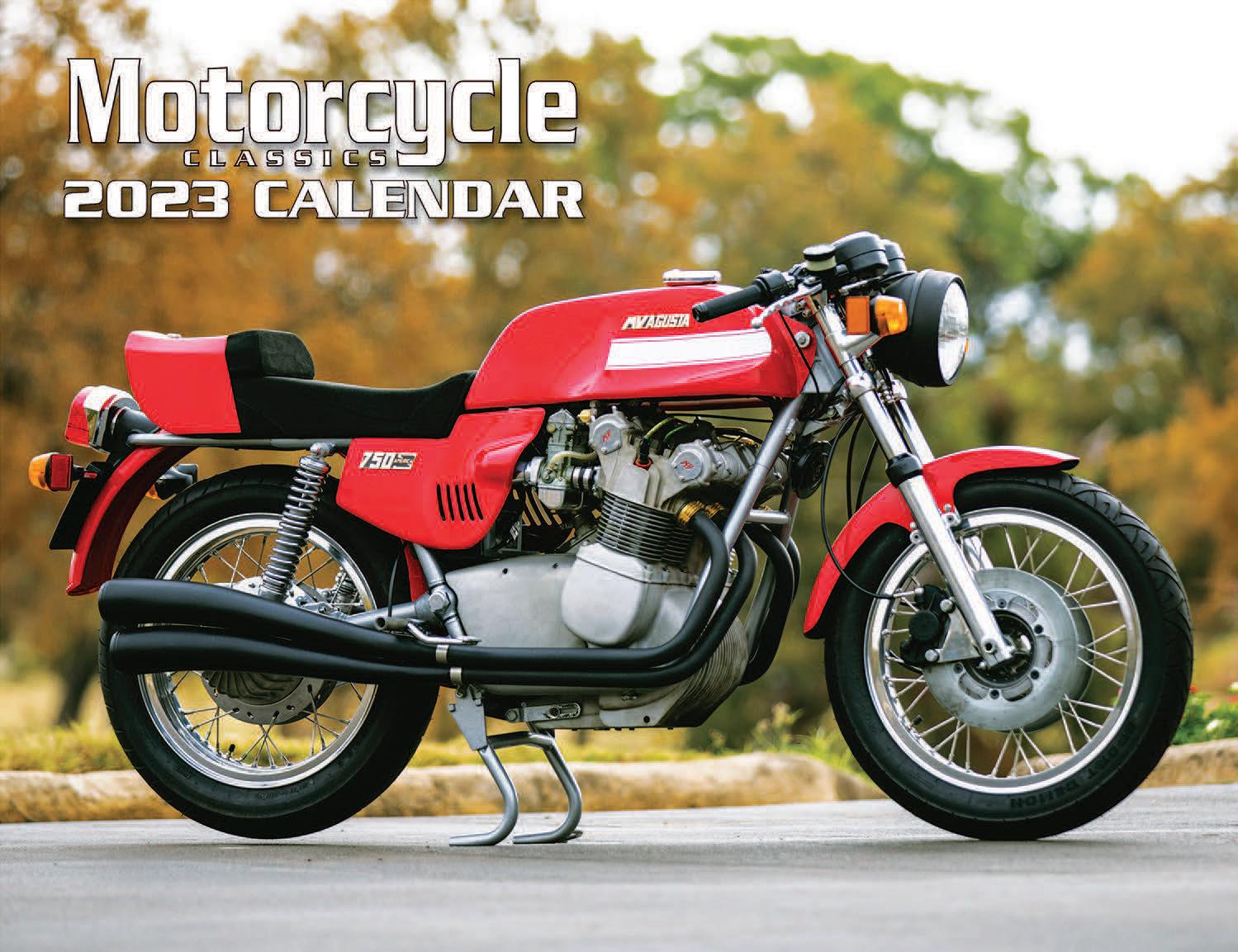






 Story by Greg Williams
Photos by Dale Berman
Story by Greg Williams
Photos by Dale Berman
EElvis’s film Roustabout was, for the most part, panned by the critical press when released in cinemas on November 10, 1964. But that doesn’t matter to motorcycle enthusiast Michael Wysocki, of Dallas, Texas.

Michael grew up listening to Elvis’s music and watching films such as Roustabout with his dad, Robert, and is still a fan. “I’ve got children now myself,” Michael explains, “and my 13-year-old daughter, Ava, is an old soul who is a classic Elvis fan. One time when we were watching Roustabout, she was commenting on his motorcycle.”
In the opening scenes of Roustabout, Elvis’s character Charlie Rogers is performing as a tea house entertainer. He heckles some college-age patrons and
gets fired for his surly attitude. In the parking lot, a fight ensues between Charlie and the college kids. Before the police arrive, Charlie’s encouraged to leave — promptly. He swings a leg over his scarlet red and chrome Honda CB77 Super Hawk equipped with a unique rear rack that holds his guitar and drum, fires it up, snicks it into gear, and departs.
Soon after, he’s run off the road by a protective dad. Elvis had been riding along — and flirting along — with the dad’s daughter. Her parents own and
operate a carnival, and Elvis finds himself working there as a roustabout while his Honda is being repaired. Notably, there’s a wall of death scene where Elvis ostensibly rides several laps, and then crashes as he comes down from vertical. While Elvis was a true motorcyclist and did most of his own riding scenes aboard the Super Hawk, he wasn’t the one riding the 175cc HarleyDavidson Scat on the wall. According to historian Corinna Mantlo, curator of film for TheVintagent.com, that was stunt-double Charles E. Thomas, who actually owned the wall of death used in Roustabout
However, it’s the Super Hawk that captured Ava’s interest — in fact, Michael says she loved the bike — and he adds, “The thought passed through my mind about looking for


Engine: 305cc air-cooled SOHC 4-stroke parallel-twin, 60mm x 54mm bore x stroke, 10.0:1 compression ratio, 28hp @ 9,000rpm
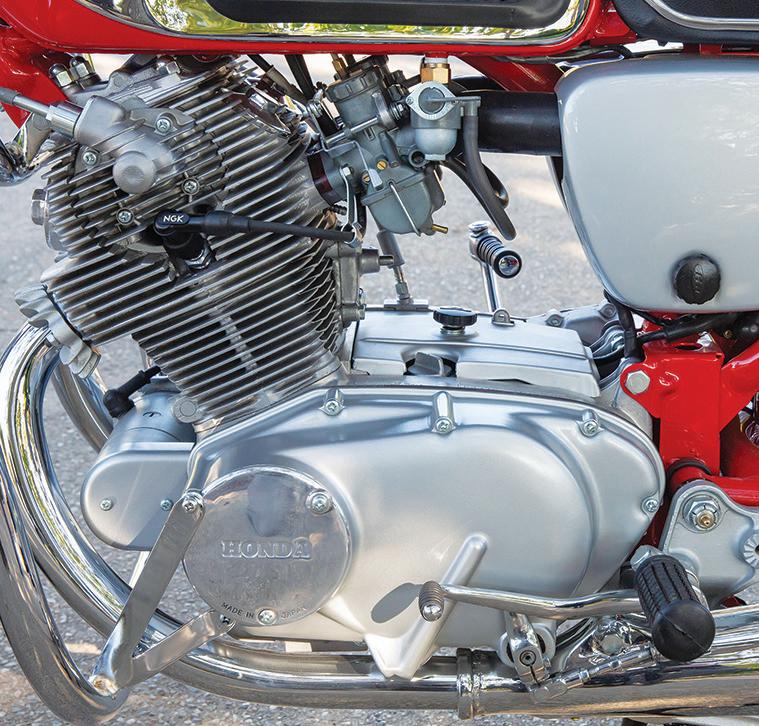
Top Speed: 104.6mph
Carburetion: 2 x 26mm Keihin
Transmission: 4-speed, chain final drive
Electrics: Charlie’s Place electronic ignition, coils, regulator/rectifier, 12v battery w/electric start
Frame/wheelbase: Tubular w/engine as stressed member/51in (1,296mm) wheelbase
Suspension: Telescopic front fork, dual shock swingarm rear
Brakes: 8in (200mm) drum front and rear
Tires: 2.75 x 18in front, 3.00 x 18in rear
Weight (dry): 351lb (159.2kg)
Seat height: 30in (762mm)
Fuel capacity: 3.6gal (13.5ltr)
one of those old Hondas and having a Roustabout tribute bike created.” Not less than two weeks later, an ad for an early Honda popped up on social media. The bike was $800, it wasn’t too far away, and Michael drove out and bought it. He then began searching for someone to build the machine. He Googled “vintage Honda restoration” and one name routinely popped up — Charlie O’Hanlon of Charlie’s Place in Glendale, California.
“I reached out to Charlie,” Michael explains, “and had a discussion with him about restoring the bike, and he agreed to take it on.” Michael had the machine trucked out to Charlie’s Place, but that’s where things went sideways.
Charlie (O’Hanlon, not Rogers) picks up the story. “Two kids show up with this really beat up red 1965 Honda

CB160, and I’m thinking, ‘He wants me to restore this?’ I wasn’t skeptical because the bike was so rough, rather I knew he had originally talked about restoring a Super Hawk — and not a CB160.
“Then, Michael contacts me and says ‘OK, this is what I’m after’ and sends me photos of Elvis on the bike in Roustabout Well, I said, a CB160 isn’t the bike we need to start with. We need a CB77.”

Introduced in 1961 the Honda CB77, or Super Hawk as it was called, was a dramatically new machine that wasn’t too expensive to buy with a $665 list price. Although relatively inexpensive, the Super Hawk was packed with features not commonly seen on machines of the era. Its 305cc inclined vertical twin engine with chain driven overhead camshaft and wet sump oiling could be revved out to 9,000rpm. Equipped with a 12-volt alternator and battery electrics, the Super Hawk also came with an electric starter. Plus, it was oiltight.
In the U.S., Honda released the Super Hawk alongside its smaller sibling, the
CB72 Hawk. The Hawk was powered by a 247cc twin-cylinder engine, but from the start it was the slightly larger Super Hawk that captured the most attention.
“Never before, in the entire history of motorcycling, has one company done so much in so little time,” Cycle World explained in a 1964 road test of the Super Hawk. “There are, naturally, excellent reasons for this progress: from top to bottom, the Honda line of motorcycles features good performance, good handling, good quality, and a high degree of technical refinements. The fastest and most refined of all Hondas is the CB77, and it is a remarkable machine in many respects.”
A tubular steel frame with a 1-1/2-inch diameter backbone used the engine as a stressed member. The chassis was stronger and lighter than many other frames in use, and it was essentially developed using lessons learned during Honda’s racing days in the 1950s. From the base of the headstock back, there’s an arrangement of smaller tubes to create something of a trellis, and that’s where the top of the engine is
bolted up. A pair of beefy pressed steel brackets are welded to the lower part of the backbone, and this holds the back of the engine in place. Another series of triangulated tubes emanating from the rear of the backbone creates the subframe to hold battery tray, toolbox, upper shock absorber mounts and the base of the dual seat.
The Super Hawk’s all-alloy powerplant makes 28 horsepower at 9,000rpm. As mentioned, lubrication is through wet sump and that oil also serves the 4-speed transmission, clutch and primary chain. A sprocket placed in the middle of the roller-bearing supported crankshaft turns the chain-driven single overhead camshaft and two Keihin 26mm carburetors meter air and fuel. Although earlier Honda twins had a 360-degree firing interval, much like many British parallel twin engines, the Super Hawk was given a 180-degree firing interval. In the simplest terms, as one of the pistons goes up, the other goes down, instead of both moving up and down at the same time.
Honda equipped the Super Hawk
with 18-inch rims front and rear and laced in hubs with lever-to-cable operated double-leading shoe 8-inch brakes at both ends. The Super Hawk had a 351-pound curb weight, and according to the August 1964 issue of Cycle magazine, racers loved the platform, which could often be pared down to close to 275 pounds. Honda offered its own performance items, and the aftermarket industry also supplied gofast equipment such as big bore piston kits. The Super Hawk was available in scarlet red, blue, white and black, and was built from 1961 to 1967, although

the bikes were still being marketed through to 1969. During the production run, 72,396 Super Hawks were sold.
And it was a 1964 Super Hawk that Charlie needed to find to help Michael recreate Elvis’s Roustabout machine.
“Because the movie came out in ’64, the bike would technically have been a 1963 model,” Charlie says. By watching the movie and freezing the picture over and over, Charlie was able to discern subtle changes on the Honda that technically weren’t available for ’63.

“Hondas are better made than any other motorcycle of that era,” Charlie explains, and continues, “Honda was innovating continuously, with changes happening on the fly because research and development was as important as the product and they kept improving the machine. You can find dealer bulletins detailing changes, and dealers were being told to upgrade bikes in their inventory with Honda’s improved parts — it happened all the time.”
One of Charlie’s customers had the ideal Super Hawk candidate. It was a ’64, it ran, and it was mostly correct but had the wrong mufflers on it. Best of all, Charlie had worked on it in the past, was familiar with it, and the bike was for sale. When Charlie asked Michael how far he wanted to go with the restoration, he was told he wanted the Super Hawk to look like brand new. So informed, Charlie embarked on performing a complete 100-point restoration, fully dismantling the Honda to the last nut and bolt and splitting the engine cases.
There was nothing technically difficult about the rebuild, and Charlie installed his full line of Charlie’s Place upgraded electrical components including electronic ignition, regulator/rectifier and high output coils. He was able to procure many of the NOS parts required, such as the correct sidestand, from a close network of sources, both in the U.S. and in Thailand.
Where he needed help was with the unique rear rack, the CP77 (police model Super Hawk) front crash guard and Honda CL72 Scrambler braced handlebar that are used on the Roustabout machine. For that, Charlie turned to engineer and tube bender Jim Lucik.


“I’m a tool and die maker,” Lucik says, adding, “I make replacement parts for Hondas such as handlebars as a side business and enjoy some of the more challenging work.” He sells his handlebars on eBay under the store name Luciks Liquidation.
Together, Jim and Charlie worked out
the correct size of the rear rack — something Charlie says looked rather crudely built on the movie bike — by scaling it off of other parts of the Honda. Then, Jim mandrel bent the tubes for both the rear rack and the crash bar and TIGwelded them all together. With the racks in Charlie’s hands, he mocked them up on the Super Hawk, made mounting brackets and welded them in place before having them chromed. Jim also supplied the Scrambler handlebars, and the results are outstanding, and testament to both Charlie’s and Jim’s skills.
During filming of the movie there would have been two Super Hawks, one that was essentially kept shiny and clean for “closeup” work, and another that was a little scruffy for the road riding scenes. In the movie, there’s a scene where Elvis’s character, Charlie, is run off the road. For just that one scene, Charlie O’Hanlon says, it’s easy to see the machine had been fitted with a Scrambler seat. Why? Absolutely no idea.
“For the whole movie,” he says, “the bike has a Super Hawk seat on it, except for the crash scene.”
Michael says the location of either Super Hawk used in Roustabout is unknown. “They are nowhere to be found, and we tried,” he says. Michael is a lawyer, and often works with a team of investigators. “I put some of my best people on it, and we couldn’t locate either one.”
That means his Roustabout re-creation is likely the closest thing to the real deal. “The work and craftsmanship and detail that Charlie and his team have put into this is incredible, down to the


minute details of the rack and poring over the bike in the movie to make sure it’s right — I don’t think anyone will put together another that’s as perfect as this one.”
Michael says he’d likely add some miles to the scarlet red Super Hawk and has offered it for permanent loan to Graceland in Memphis, Tennessee. “Not in the room where any of Elvis’s stuff is,” he explains, and adds, “but somewhere else on the property. In fact, if they accept it, I’d ride it out to them.”
And it’s a good runner. With the Super Hawk back together, Charlie says the machine fired up with no trouble whatsoever. “The coolest part was my test ride,” he says of the finished bike, which he rode on the highway near Paramount’s ranch in Hidden Valley, California where Roustabout scenes were shot with Elvis at the controls. “It runs so well, and it really just purred like a kitten. I feel like I nailed it, this thing really is like a brand new bike, and the Elvis aspect is also really cool. It was an iconic bike used in an iconic film at an iconic point in time, and it really was a fun project to do.” MC

RRoyal Enfield has launched the first spinoff models in its best-selling range of 650 twins it debuted in 2018, when it started building its first twin-cylinder motorcycles to be made in India.

wind
windscreen, LED indicators front and rear, and a larger seat with extra pillion space, plus a vestigial backrest. This compares to current U.K. pricing of £6,199 ($6,650) upwards for the Interceptor, and from £6,399 ($6,860) for the Continental GT. No U.S prices had been announced as this goes to print. Named after Royal Enfield’s first 100mph model which debuted back in 1955, global deliveries of the Super Meteors will begin in March, with a three-year unlimited mileage warranty.
Riding both new variants in Rajasthan, India’s largest, emptiest state pushed right up against the Pakistani border with miles of open desert roads — think Arizona, with a
curry for supper — confirmed their appeal. The Bosch ECUequipped fuel-injected engine produces a claimed 46.33 horsepower at 7,250rpm, while peak torque of 38.57ft/lb is delivered at 5,650rpm — 400 revs higher than on the older 650 twins.
But RE’s Chief Engineer Paolo Brovedani states there are no mechanical changes to the engine in the new models, only that the Super Meteor’s airbox and exhausts are all-new, which coupled with revised mapping for the ECU delivers a Cruiser-friendly wider spread of torque, with 80% of that peak grunt already available at just 2,500rpm. The unchanged 6-speed transmission with overdrive top gear features a slip/assist clutch, but
now with a heel-and-toe shifter as standard on both Super Meteor variants.
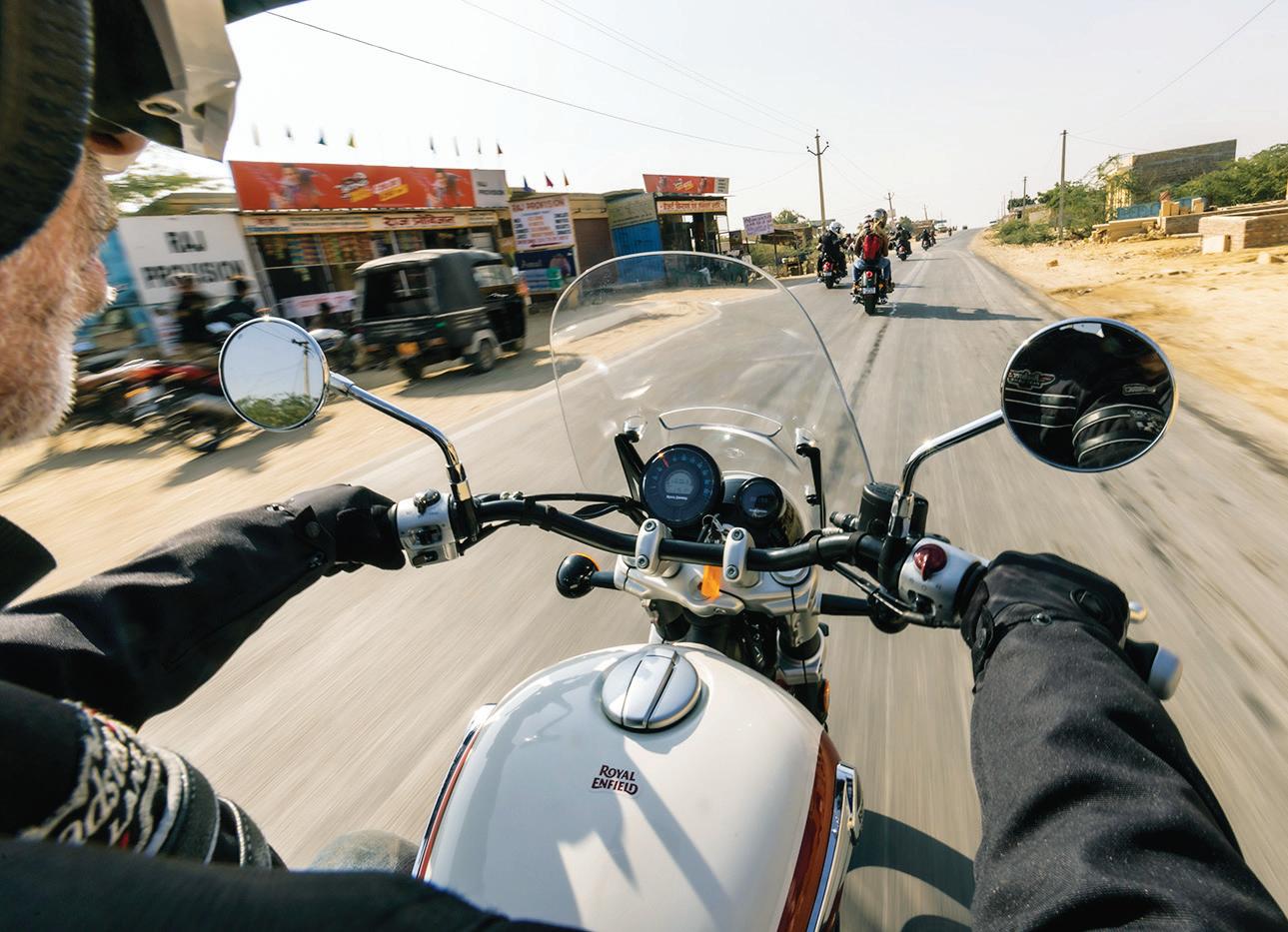
This well-proven engine is carried as a fully-stressed component in an allnew steel spine frame jointly developed by Royal Enfield’s 32,000-plus-square-feet UK Technology Centre and RE subsidiary Harris Performance, and incorporates a new cylinder head mount for additional stiffness. Showa is now the suspension supplier for Royal Enfield’s twins, and the Super Meteor comes with an upside-down fork for the first time on any RE model, a non-adjustable 1.7-inch (43mm) Big Piston item carried at a 27.6-degree rake with 4.66-inches (118.50mm)
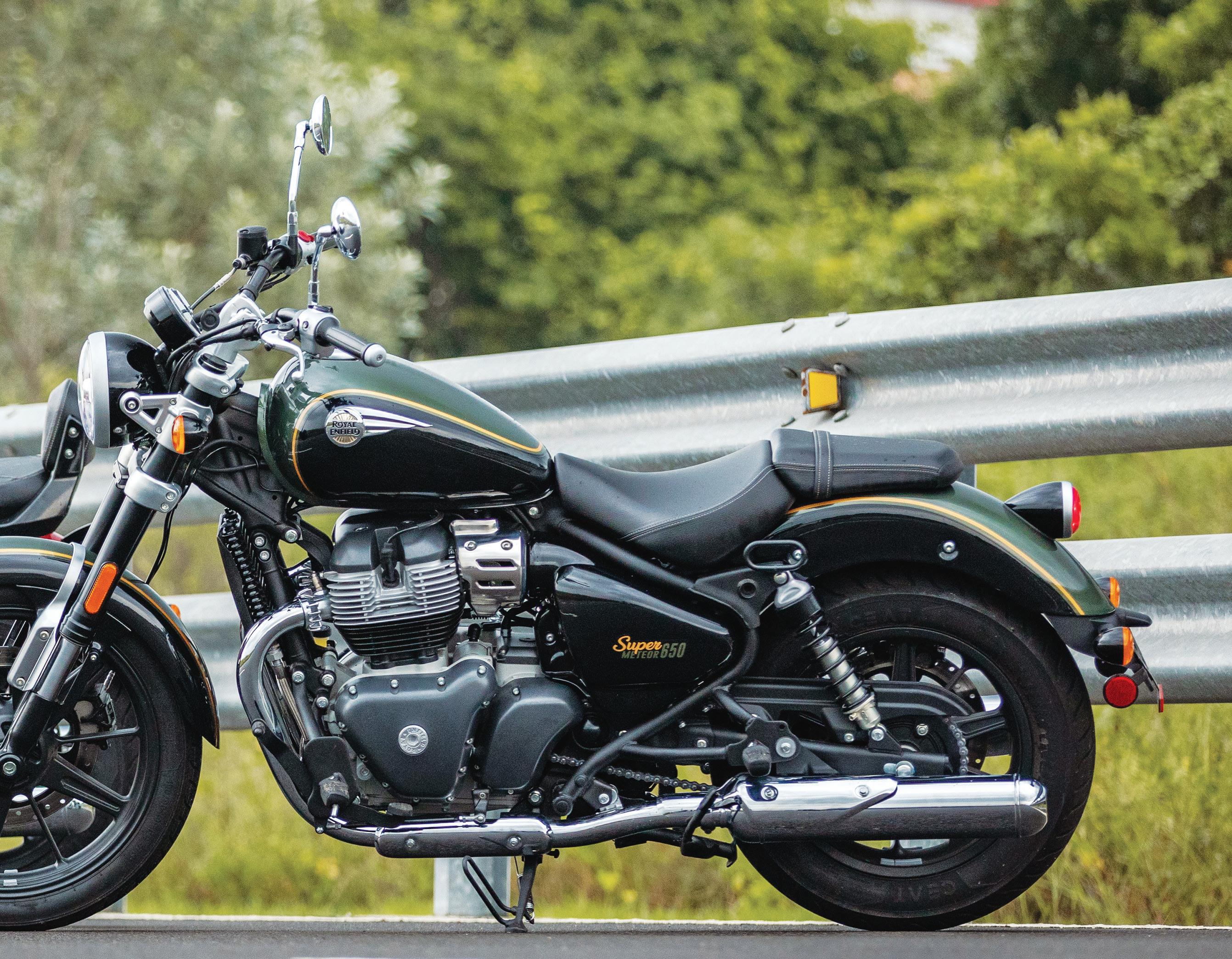
of trail, offering 4.7 inches (120mm) of wheel travel. At the rear, the extruded steel swingarm delivering a rangy 59-inch (1,500mm) wheelbase carries twin Showa shocks, with 5-step preload adjustment and 4-inches (101mm) of travel. There’s a 19-inch forged aluminum front wheel and 16-inch rear, shod

Engine: 648cc air/oil-cooled SOHC dry-sump parallel-twin 4-stroke with four valves per cylinder, 270-degree crank, gear-driven counterbalancer and central chain camshaft drive, 78mm x 67.8mm bore and stroke, 9.5:1 compression ratio, 46.33hp @ 7,250rpm (at crankshaft), 38.57ft-lb at 5,650rpm (at crankshaft)\
Fuel/ignition: Multipoint sequential Bosch electronic fuel injection with 2 x 34mm Mikuni throttle bodies
Transmission: 6-speed with gear primary drive
Chassis/wheelbase: Composite steel open cradle duplex spine frame with engine employed as fully stressed member/59in (1,500mm)
Suspension: 43mm Showa Big Piston telescopic fork with 120mm of wheel travel front, box-section steel swingarm with dual Showa shocks, providing 101mm of wheel travel with 5-stage preload adjustment rear
Weight: 530lb/241kg (Cruiser), 537lb/244kg (Tourer)
Brakes: Single 12.6in (320mm) steel disc with twin-piston floating caliper and Bosch ABS front, single 11.8in (300mm) steel disc with twin-piston floating caliper and Bosch ABS rear
Tires: 100/90 x 19in front, 150/80 x 16in rear
Seat height: 29in/740mm (Cruiser), 30in/765mm (Tourer)

Tank capacity: 4.1gal (15.7ltr)
Manufacturer: Royal Enfield Motorcycles, royalenfield.com
with Indian supplier CEAT’s new Zoom Cruz tubeless tires specially developed for the Super Meteor duo.
Braking is supplied by the same single 12.6-inch (320mm) front disc as on the earlier 650 models, but a much larger 11.8inch (300mm) rear brake disc (up from 9.4-inches/240mm), both gripped by twin-piston

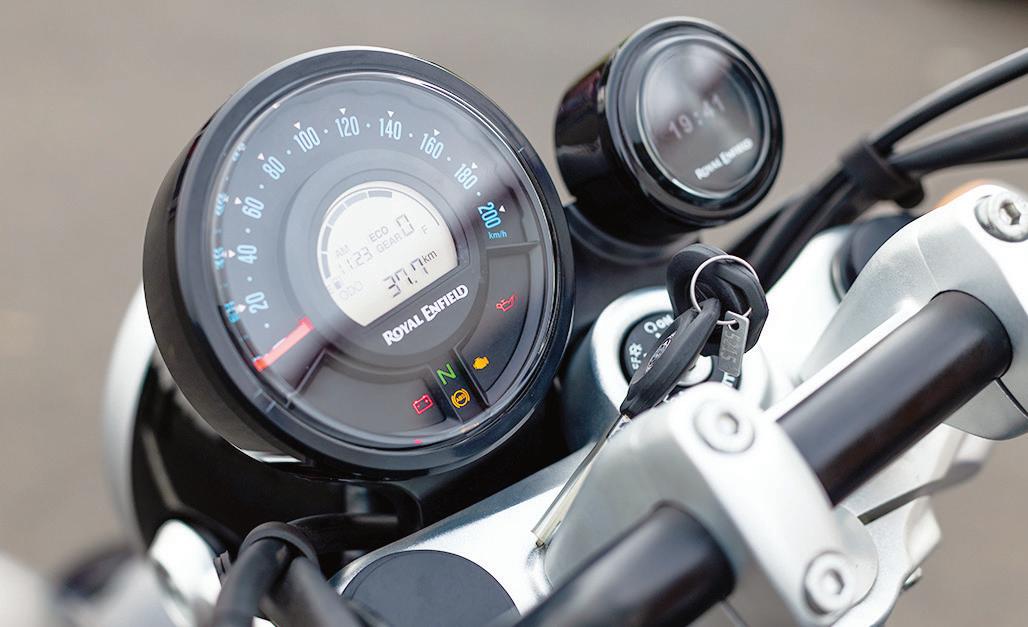 Single front disc brake could do with a partner for optimum stopping power.
The Tourer seat and backrest is passenger-friendly.
Single front disc brake could do with a partner for optimum stopping power.
The Tourer seat and backrest is passenger-friendly.
calipers from Brembo’s Indian subsidiary ByBre, with twinchannel Bosch ABS. The Cruiser model weighs a claimed 530 pounds (241kg) with oil and a 90% full 4.1-gallon (15.7-liter) fuel tank, equating to circa 507 pounds (230kg) with oil/no fuel. The Tourer scales in at 537 pounds (244kg). Both weights are quite a bit heavier than the 445 pounds (202kg) similarly quoted for the Interceptor twin with the same engine.
A 29-inch (740mm) seat height for the Cruiser ensures almost any rider can put both feet flat on the ground at rest, with forward footrests and a tall, wide touring-style handlebar featuring easy-adjust clutch and brake levers. The Tourer has a slightly higher 30-inch (765mm) seat height. The single round instrument cluster combines an analog speedo with an inset LCD panel showing gear selected, fuel level, time, odometer and twin trips, and there’s a USB socket onboard, too. Royal Enfield’s free-to-use Turn-by-Turn Tripper navigation pod developed together with Google which links to

the rider’s smartphone via Bluetooth, is included as standard for the first time on an RE twin-cylinder model.

The Cruiser bike’s riding position has the pulled-back handlebar combining with the forward-mounted footrests to deliver a reasonably relaxed albeit pretty upright stance. With the quite wide step-over and flatter-feeling seat compared to the Tourer it seems you’re perched more atop the bike than sitting in it, and passenger space is less spacious, too. The Tourer’s seat is quite different, with a notably narrower stepover which lets you tuck your knees in tighter to the tank, and a shape which has you sitting more within the bike.
The bumpy Indian highways really tested the Super Meteor’s Showa suspension, with the settings for the raked-out non-adjustable forks ensuring that even with the bike’s extra weight they didn’t bottom out under heavy downhill braking, but kept on damping out road shock from the uneven surface. The rear suspension was even better, with the super compliant Showa twin shocks’ well-chosen damping delivering a good ride
Front and rear views highlight the Super Meteor’s slim build (right).
over broken everyday road surfaces.
The Super Meteor’s 650cc twin-cylinder engine is the star of the show in terms of riding satisfaction, for this is a middleweight motorcycle that thinks big. It’s been intelligently developed to be all things to all riders, so that the less experienced can ride around town all day in fourth gear, and the hyperflexible engine will let them do so without any hiccups or transmission snatch. But at the other end of the performance scale, it was a willing companion for a rapid hustle along the wide open roads of Rajasthan, clocking sustained high speeds on a 280-mile blast from west to east across the Great Thar Desert in a fastmoving caravan of Enfield twins running in line astern at up to 100mph on roads surely built with the military in mind. The long-wheelbase Super Meteor is super-stable at high speeds,
The Super Meteor’s Cruiser version has muscular looks denoting chilled-out performance.

especially the Tourer version, which is fitted with a really effective screen which displayed no trace of a wobble round long, fast 80mph sweepers.
The Super Meteor doesn’t have the torque or power of a 900cc twin or even a 750 — but that’s OK, because the 648cc engine invites you to work hard at making it go fast, if you wish. Just make maximum use of the light action slip-assist clutch and smooth, precise gearshift to keep it revving, and you’ll be rewarded with quite impressive levels of performance. It’s a willing partner in making both new Super Meteors a ton of fun to ride either fast or slow.

The engine’s key asset is the great mapping of the Bosch ECU, especially the response from a closed throttle, which is ultrasmooth with no snatch or jerk. This made the Super Meteor an ideal ride in India, where stop/start riding in heavy traffic is a fact of everyday life. On the new RE twins you just twist and go, with that clean pickup and a totally linear build of both power and torque. The single gear-driven counterbalancer removes any trace

of vibration all the way to the hard-action 7,500rpm limiter.
The power delivery is impressive for a middleweight, coupled with the abundant torque which is ideally spread throughout the rev range, providing a surge of acceleration as soon as you twist your wrist to exit a turn. Top gear roll-on is impressive, too — running at three-quarter throttle at 75mph on a deserted Indian toll road in sixth gear still left sufficient grunt for the Super Meteor to surge forward noticeably if I cracked the throttle wide open. For a 650, this is a very freeway-friendly ride.
The operation of the single front twin-piston brake caliper and 12.6-inch (320mm) disc is just about adequate, with good feedback through the lever that’ll help you stop the ABS kicking in too often on India’s dusty road surfaces. But both Super Meteors would definitely benefit from extra bite from the front brake, making you glad you’ve got the hefty 11.8-inch (300mm) rear brake that stops the bike better than its larger front partner. Thanks to the Super Meteor’s extra weight you must use both brakes hard to stop from any speed.


Both a side stand that’s very easy to flip out while seated on the bike and an equally easy-access center stand come fitted as stock.
The satin-chrome aluminum switch cubes look stylish and substantial, despite being devoid of RBW technology’s buttons and switches owing to the absence of any electronics other than EFI and ABS on a bike with a cable throttle. The LED headlamp on both models is another first for Royal Enfield, matched to an LED rear light. Build quality is excellent with a premium feel to many components and self-evident attention to design detail, like how the oil cooler and hoses match up with the frame downtubes.
Thanks to their quite different riding positions these two new variants of the Super Meteor are sufficiently different from one another that despite sharing the same mechanical platform, they’re essentially two distinct variants — midcapacity cruisers that are enjoyable to ride thanks to a great engine, and super handling. And when you take the low price point into consideration, then most likely Royal Enfield CEO Siddhartha Lal will have yet another global hit on his hands. But there’s more to follow, with RE upper management openly stating they have a whole series of new twin-cylinder models nearing production to join this range-topping new Super Meteor duo. MC



Story by Alan Cathcart
Photos by Russ Murray
AAs the post-Covid return to something approaching normality continues to unfold, there are some events which sadly won’t be returning to brighten our lives just yet.
One of these should have taken place Down Under over January’s Australia Day weekend, but didn’t — though whether that’s because it’s gone into hibernation, or has been definitively cancelled, is still unclear. But for sure the absence of the 28th running of the Island Classic staged on the Phillip Island GP Circuit each January left a big hole in the 2023 Aussie twowheeled calendar, both for those taking part in it, and avid race fans alike from all over Australia, and much further afield, too.
Australia has staged on the Phillip Island GP
dlebar-rubbing of
on what’s best described as Period 5-Plus motorcycles producing upwards of 180 horsepower. Think Superbike power
Because over the past decade this Festival of more than 50 — yes, 50 — races staged over the three-day weekend has progressively grown into the most spectacular yet improbable no-holds, nail-biting, tire-smoking, handlebar-rubbing festival of Historic motorcycle sport to be seen anywhere in the world. That’s mainly (though not exclusively) because of the International Challenge heading the race program each year, pitting teams of riders from Australia, N.Z., the U.K. and U.S. against each other on what’s best described as Period 5-Plus motorcycles producing upwards of 180 horsepower. Think Superbike power

transmitted through 600 Supersport tire sizes. P5-Plus essentially came about because the Brits wanted to be able to run the later Yamaha FJ1100 engine introduced in 1984, one year after the official P5 cutoff date in Australia, so to accommodate them this was permitted — but only for the Island Classic.

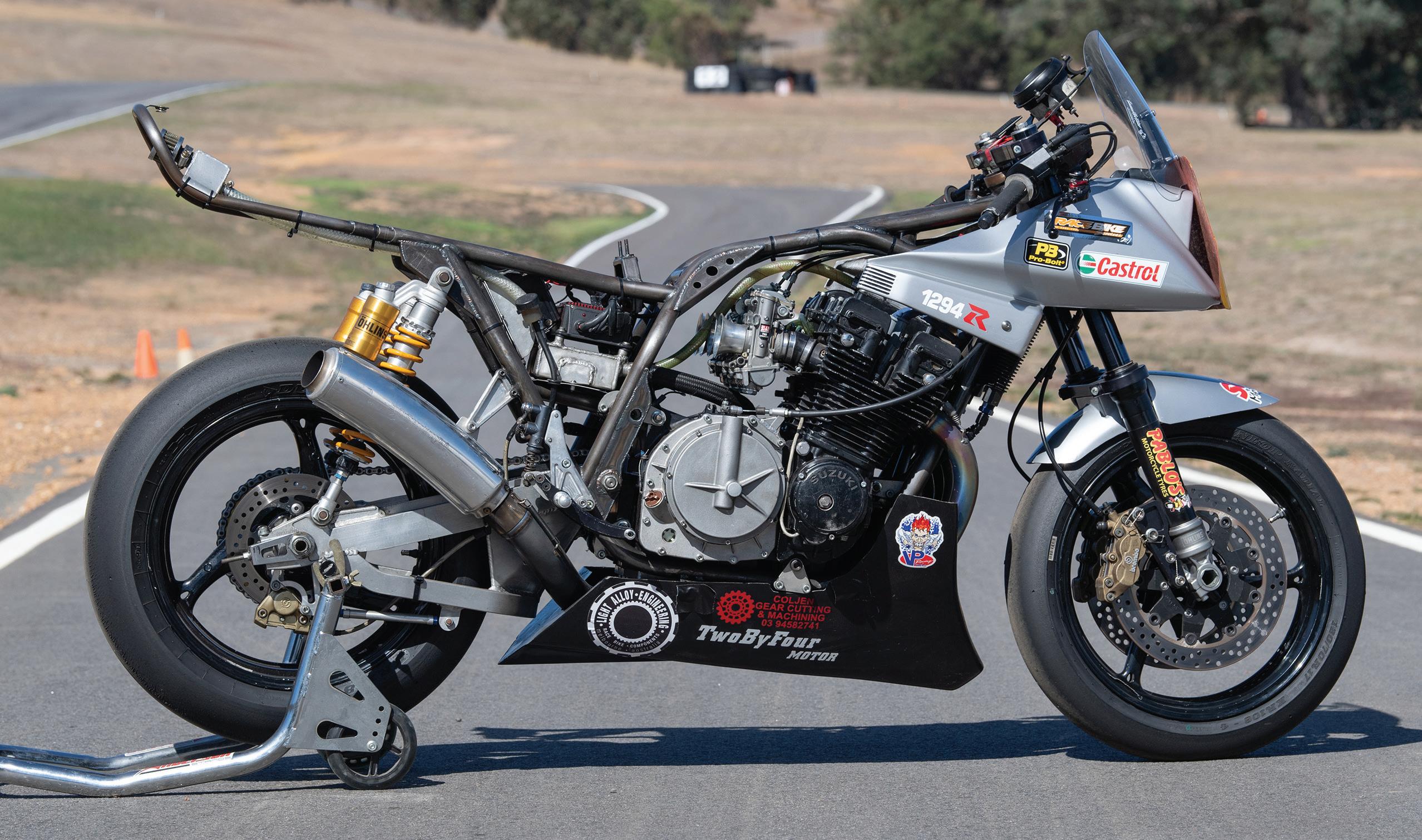

Engine: 1,294cc (1,198cc) air-cooled DOHC transverse inline 4-cylinder 4-stroke, 79mm x 66mm (75 x 66 mm), 11.2:1 compression ratio
Top speed: 171mph (Phillip Island 2020)
Output: 192hp at 9,500rpm at rear wheel (160hp at 9,500rpm)
Carburetion: Four 40mm Mikuni TMR flatslide (Four 37mm Keihin CR)
Ignition: MSD Ignition MC-4 total loss digital CDI
Gearbox: 5-speed Suzuki
Chassis/wheelbase: Motorcycle Chassisworks tubular chrome-moly steel duplex cradle frame/56.1in (1,425mm)

Suspension: 43mm Öhlins telescopic fork adjustable for rebound damping and spring preload front, Suzuki braced steel swingarm with dual fullyadjustable Öhlins shocks rear
Weight/distribution: 427lb (194kg) with oil/no fuel, split 51/49%
These Vintage Superbikes are ridden by a huge array of brave and illustrious riders including former World champions like Troy Corser, Colin Edwards, Jason Pridmore and Steve Martin, Isle of Man TT deities like John McGuiness and current 135mph-plus lap record holder Peter Hickman, plus the world’s most versatile racer Jeremy McWilliams, who’s won
Brakes: Dual 300mm NG stainless steel discs with four-piston Brembo calipers front, single 240mm Suzuki disc with two-piston Brembo caliper rear
Tires: 120/70-17 Dunlop Radial KR106 front, 200/6017 Dunlop Radial KR108 rear
more races in more different classes than anyone else ever. Other racers include a plethora of former National Superbike champions like Shawn Giles (AUS), Josh Heyes (U.S.), Jordan Szoke (CAN), Richard Scott (N.Z.) and John Reynolds (U.K.). These air-cooled, twin-shock Vintage Superbikes may look anachronistic parked in the PI pit garages, but out on track their performance in the four six-lap races staged each year has been literally astounding. Lapping in a qualifying
The unpainted chassis is a lightweight chrome-moly replica of the stock Katana frame (left). Trevor Birrell-tuned engine delivers 192hp.time for the World Superbike grid a month later is par for the course for those at the pointy end of the grid, despite those skinny tires and smaller brakes being obliged to work harder to haul down much heavier motorcycles, and the complete absence of any electronic rider aids beyond each jockey’s right hand. Nirvana for spectators, especially with the sight and sound of Beau Beaton on the Irving Vincent V-twin giving the hurry-up to the faster fours — and bloody good fun for those taking part. Historic racing’s big bike category — there’s a 1,300cc top limit to encourage tuners to go large on engine upgrades — recaptures the variety and thrills of Superbike’s early days, when Honda, Kawasaki and Suzuki grappled with each other in a titanic struggle for street bike supremacy.
As a regular attendee at this festival of nostalgia, I will admit to having one regret about the way it’s evolved, namely the admission of the XR69 Suzukis to the mix. For I know I’m not the only one who reckons this race-framed full-fairing TT1 factory racer is at odds with the ethos of Classic-era naked-as-nature highhandlebar Superbike sport — it was never for sale with lights and a horn, and it doesn’t belong if you can’t see the engine from the side out on the racetrack! Anyway, it’s not as if there isn’t a perfectly good Suzuki-built contender in keeping with the spirit of the early days of Superbike racing,
and that’s the GSX1100 Katana introduced in 1981, complete with its trademark headlamp fairing topped by a small deflector screen, but otherwise devoid of any bodywork beyond a seat and tank.
In fact, the Katana has been a staple of the International Challenge ever since top engine builder Trevor Birrell from Adelaide, and Melbourne’s Dale Gilbert, whose Motorcycle Chassisworks in Maidstone, Victoria, wraps metalwork around the ensuing mega-lumps to harness their huge power outputs and lay them to the tarmac, teamed up for the first time back in 2010 to build a bike for the Island Classic. Birrell started drag racing in 1982, earning nine Aussie championships and 17 National records between then and 2011, when the Katana’s Island Classic story really begins.

“I’d known Trevor ever since I started going to the Drags in the 1980s,” says Dale, “and he’d been doing a lot of Kawasaki and Suzuki engines for the P5 guys. In 2009, he said to me, “Do you want to go to the Island Classic?” And I said, ‘What is it?’ I’d never been, didn’t know what it was! He goes, ‘I’ve built a lot of engines for the guys, and I’d like to go and have a look.’ So we went there, and Wayne Gardner was racing there that year, so we walked around the whole track, and by the time we got near the end I said to Trev, ‘You know, we could build one of these things.’ So we started talking, and he said, ‘Well,

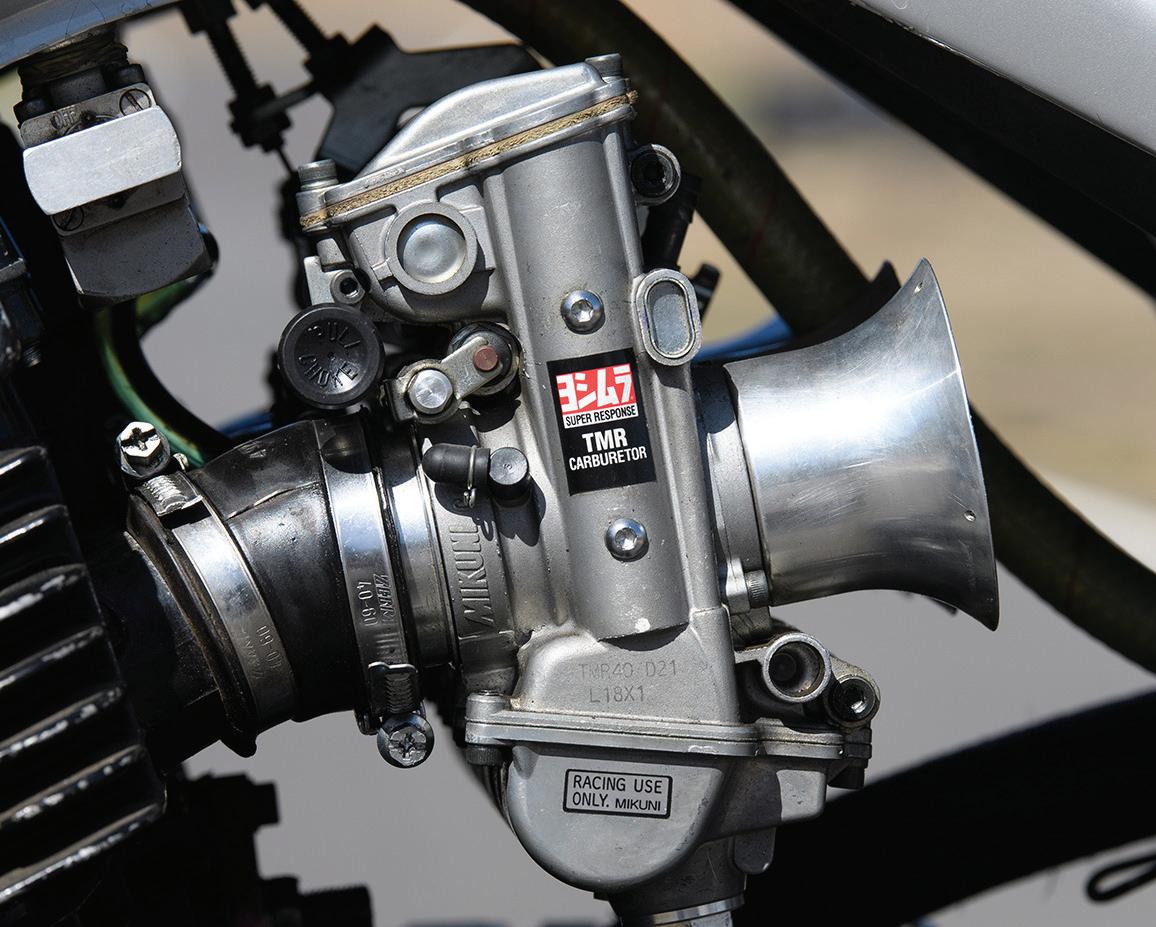
who can we get to ride it?’ And I said, ‘I don’t know, we’ll worry about that when the time comes. I just want to beat Wayne Gardner, that’s the main thing!’ And he said, ‘Yes, so do I!’
“So because we’d both of us had 20-odd years of drag racing with Suzuki GSXs we had plenty of parts, and we put together an engine out of stuff we had laying around, old pistons, whatever, and the thing made about 160 horsepower at the rear wheel. I got an old GSX frame, and braced it up, and we built the first bike, a Suzuki blue and white GSX1100. Trevor was very friendly with Peter Kerr who ran Racebike Services in Adelaide, and he was Steve Martin’s suspension guy. So he called up Steve, who’s also from Adelaide, to see if he’d ride the bike, and Steve said, ‘Yes, I’ll have a go!’ So we met him out at Mallala and straight away he was trying to turn it into a 2010 BMW S1000RR, which wasn’t going to work, especially not a twin-shocker! But then he adjusted his riding style to suit, and off we went to the Island Classic, not really knowing what to expect. Well, we took pole position and won all four races by at least five seconds, and everyone’s thinking, oh it’s a full drag engine, and waiting for it to go pop. But it wasn’t, it
The author and Shawn Giles go back 30 years, but it’s the first time Alan rode one of his bikes.
was just a normal engine, done right.”
By then the Suzuki Katana was approved for P5 racing, so the drag racing duo built the first one of those for the 2011 Island Classic, and Steve Martin won three of the four races on it. Three-time Aussie Superbike champion Shawn Giles had in the meantime been persuaded out of short-lived retirement to join in the Australia Day fun, but his debut outing on the Irving Vincent didn’t go according to plan with machine problems — so for 2012 Birrell and Gilbert built a second Katana for him, with somewhat satisfying results. Giles won his first two races ever on the bike, each time just a fraction of a second ahead of his teammate, young(er) Mr. Martin, who turned the tables on him in Race 3 — only for both to suffer misfortune and fail to score in the final race — in Shawn’s case, when the lithium ion battery failed while he was in the lead. He made up for that in 2013 with three race wins and a third to win the Island Classic overall, setting a new P5 lap record which he improved on in winning two of the three World Superbike support races a month later, leaving it at 1:36.915 — a P5 (not P5+) time that still stands today. Since then Giles has raced the bike each

 Three-time Australian Superbike champion Shawn Giles is an eight-time Island Classic racewinner on the Katana.
Three-time Australian Superbike champion Shawn Giles is an eight-time Island Classic racewinner on the Katana.
year for the Trevor Birrell Racing / D & D Industries / Light Alloy Engineering team, and to date has eight wins on the bike under his belt, with his most recent of numerous podium finishes a second place by 0.142sec in 2019 to — you guessed it, Steve Martin on the Birrell/Gilbert team’s sister bike.
After a decade of watching the B&G Katanas frequently showing the way home — often in line abreast — to the XR69 mob, the chance to finally try one out for myself came at last Easter’s Broadford Bike Bonanza when Dale Gilbert and son Riley kindly trucked the Big K up from Melbourne so Gilesy could demo it on Sunday. To be handed this P5 Uberbike for a brief getting-toknow-you introduction the next day was slightly daunting, given the supposed (by me!) unsuitability of the tight, twisty 1.34 mile long track for exploring the performance envelope of such a famous and potent motorcycle.
The 16-valve DOHC wet sump Birrell-tuned motor was “a softer spare engine we just had lying around” — as you do — but still with all the good stuff from Giles’ regular race powerplant, which uses standard crankcases like these. The engine measures 75mm x 66mm for 1,294cc (vs the stock 1,074cc Katana’s 72mm x 66mm dimensions), and has been bored and sleeved to carry forged JE pistons from Cypress, California, fitted to a stock welded and rebalanced crank and conrod assembly from a GSX1000S, a special edition Katana variant built with racing in mind. The small ends are bronze bushed to combat heat. The stock cylinder head has been CNC-ported and flowed to deliver a stronger, more aggressive punch of the kind Gilesy likes, albeit with a surprisingly modest 11.2:1 compression ratio. The oversize stainless steel valves (31mm inlets/27mm exhausts, two each per cylinder, of course), each carry dual APE springs and titanium retainers. High-lift Yoshimura cams are fitted, with four 40mm Mikuni TMR flat-slide carbs, and a titanium replica of a 4-into-1 Yoshi exhaust. Ignition also comes from America but from the opposite coast in Casselberry, Florida, an MSD MC-4 digital unit widely used in drag racing. A total loss system running off a 12-volt lead/acid
battery (weight-saving lithium batteries are a no-no after Giles’ DNF over a decade ago), the MC-4 also offers myriad variations in setup, with programmable gear-specific ignition curves, and a selection of switchable maps and rev limiters available which come into their own towards the end of a race on well-used tires, for example. In hyped-up full power mode Giles’ race engine delivers an amazing 192 horsepower to the rear wheel at 9,500rpm, transmitted via a stock 5-speed Suzuki gearbox with heavily undercut engaging dogs and a modified detent mechanism, a slipper clutch from a 2005-model GSX-R1000, and a 520 DID chain.
Dale Gilbert began drag racing in 1984, and his Motorcycle Chassisworks company has won more than 10 National titles in Australia, as well as shipped frames around the world. Having committed to the Katana for road racing, in 2011 he reverse engineered a chassis jig off a stock Suzuki frame, and has so far built another 10 lightweight copies like this one in chromemoly tubing, each with extra bracing in pursuit of stiffness, and subtly altered geometry to suit the tastes of the owner and/or rider. This frame was built in 2018, and the weight saved comes in useful, with the bike I rode scaling 427 pounds (194kg) with oil/no fuel, split 51/49%. “Those engines are a lump,” says Dale. “They’re about 210 pounds on their own, because the crank is so heavy, and that’s their weak link.” After each frame is fabricated, it’s then measured and aligned at Motorcycle Crash Repairs in Melbourne, which is owned and run by Dale’s brother, Troy Gilbert, using a Scheibner digital measurement system, and then aligned on a Globaljig frame straightener. The frames are all unpainted in order to save weight!


The stock Katana swingarm heavily braced by team sponsor Light Alloy Engineering in Melbourne delivers a 56.1-inch (1,425mm) wheelbase, with a pair of fully-adjustable Öhlins piggyback shocks. Up front is a conventional (i.e. not upside-down) 43mm Öhlins fork that’s adjustable for rebound damping and spring preload, set at a 24.2-degree rake, with 107mm of trail. After Peter Kerr who owned Racebike Services in Adelaide sadly passed away, the company’s now run by Tony Hamilton, who takes care of all the team’s suspension setup. Seventeen-inch Suzuki cast aluminum wheels are fitted at both ends — the original 1981 Katana had a 19-inch front — shod with Dunlop slicks,
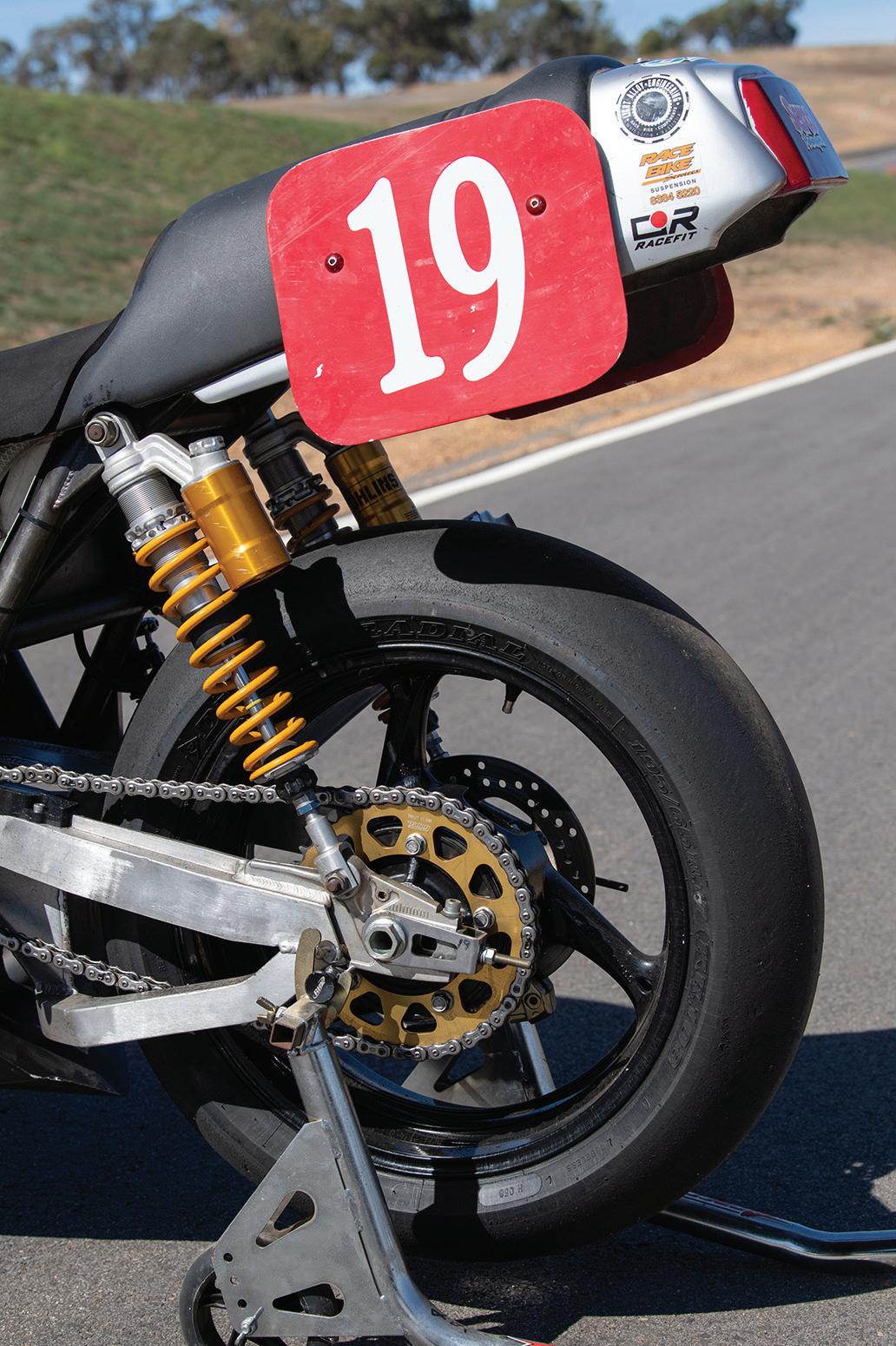
the rear a 200/60-17 squeezed onto the maximum width 5.50-inch wheel permitted under P5 (and P5+) rules. Twin 300mm NG stainless steel discs up front are gripped by four-piston Brembo calipers using Bendix carbon matrix pads, with a 240mm Suzuki rear and twin-pot Brembo caliper.
Party time, and even with the fairly long reach to the ‘bars the #99 Giles Katana feels well balanced to sit on, without too much weight on your arms or shoulders despite the quite steeply dropped chrome-moly clip-ons mounted under the triple clamps, made like all the billet parts on the bike by Dale Gilbert himself on his CNC mill. The footrests are quite high, though.
Straight away I was surprised by the unexpectedly nimble steering of the Katana, which for all its tough behavior enginewise was surprisingly sweet-steering for a 40-year old monsterbike. Flicking it through the Broadford chicane descending to the Pit Horseshoe turn was quite a bit less strenuous than I was expecting, though it did take some muscle to force it into a turn while squeezing hard on the front brake lever — it didn’t much like to be trail-braked, despite the slipper clutch. But though only 300mm in diameter the front brakes did their job pretty well at the end of the top straight from hard on in fourth gear. Using the rear brake quite hard brought a little wiggle on in a straight line, which was the only sign of instability on what was a wellmannered motorcycle.
If the Katana’s handling was unexpectedly refined, the engine was a shocker, too — but in a good way! After watching it in action so many times at the Island Classic I was expecting a somewhat brutal power delivery that I’d need to stay on top of. Wrong! Instead, the engine pulled clean and relatively hard from 4,000rpm upwards, according to the ultra-legible white-faced Auto Meter Phantom tacho, before coming on strong from exactly 6,800 revs onwards, when you do indeed need to be paying attention as the engine takes off, and everything starts happening a lot faster — a LOT faster. The massive dose of midrange torque provides thrilling acceleration and heaps of wheelies strangled
at birth by my foot on the rear brake pedal, as the tacho needle scoots towards the 9,500rpm mark where peak power is delivered, and it’s time to shift up via the wide-open powershifter that Dale forgot to tell me about, so I, ahem, didn’t use it. It’s only a oneway operation, so you still have to use the clutch when backshifting, and in fact I found the one-up race-pattern left foot gearshift really sweet and precise for clutchless upwards changes, so no harm done.
The 5-speed gearbox’s choice of ratios leaves you permanently in the fat part of the powerband if you shift gear anywhere above 9,000rpm, but if you let revs drop below 6,800rpm then you need to make sure you stand the bike up a little to use the fat part of the rear Dunlop if you cross that transition mark accelerating out of a turn, and leaned even slightly over. The Birrell-tuned engine will spin the back wheel quite readily — you just have to be careful in choosing where that can be done with some degree of safety.
Really, the B&G Katana is a chameleon of a motorcycle. It’s quite content to putter through a succession of tight infield turns, completely off the cam, just wending its way almost effortlessly through this overture to the main symphony that’s represented by either of Broadford’s decent length straights. Then when the track opens up and you can light the fuse of this maxed-out missile of a motorcycle, just hold on tight and be ready to start smiling as you do so. Bikes like this are simply too spectacular, too thrilling and too much fun to both ride and watch for them to be locked up in their sheds unused year on year. Hopefully, Phillip Island can be persuaded to run the Island Classic in 2024 — but if its management no longer considers it viable, maybe heading further west might be an option. Would the state-of-the-art, world-class motorsport facility outside Adelaide known as The Bend attract sufficient runners and adequate spectators from Eastern states and overseas to make staging the event there a serious option? Discuss.
Whatever the future of this kind of racing, top marks to Trevor Birrell and Dale Gilbert for concocting the Giles Katana. Who says drag racers can’t go road racing successfully? MC

Tuned up race-winner shows drag racers can go road racing successfully, after all.




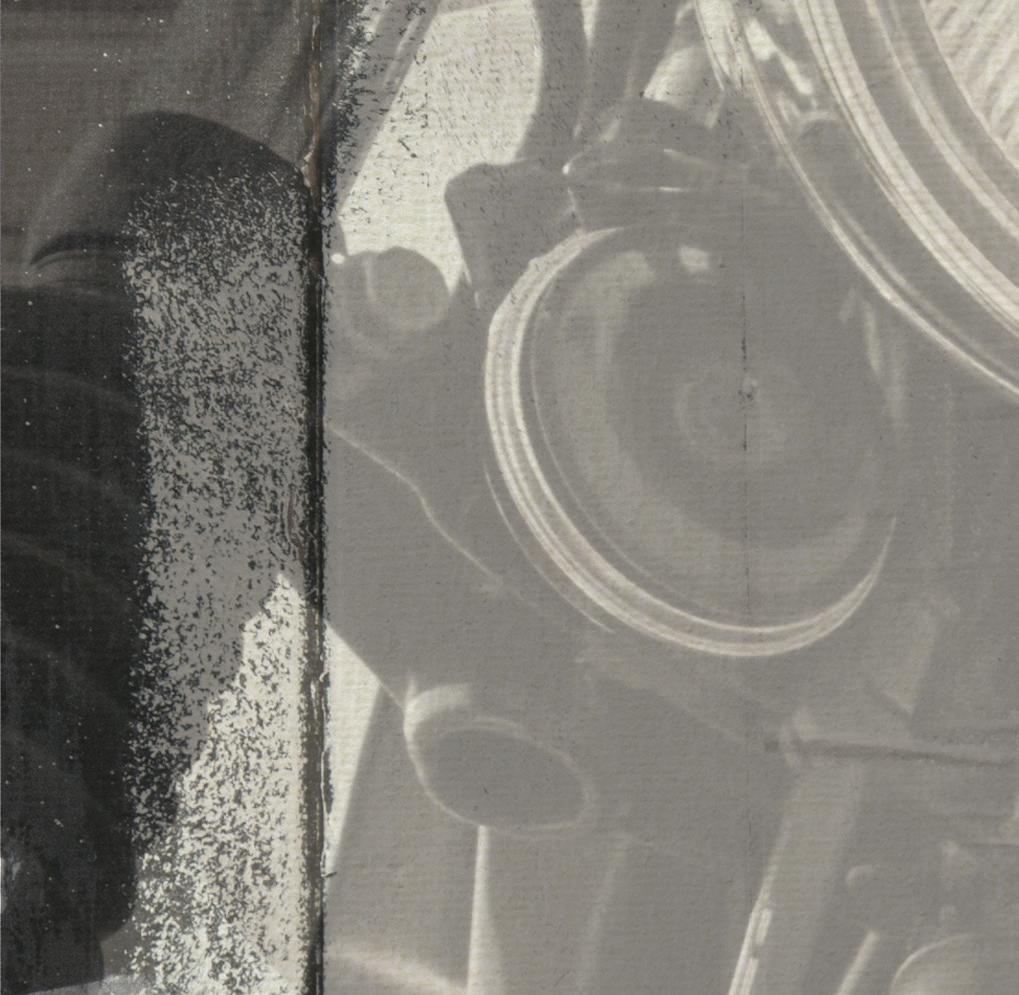

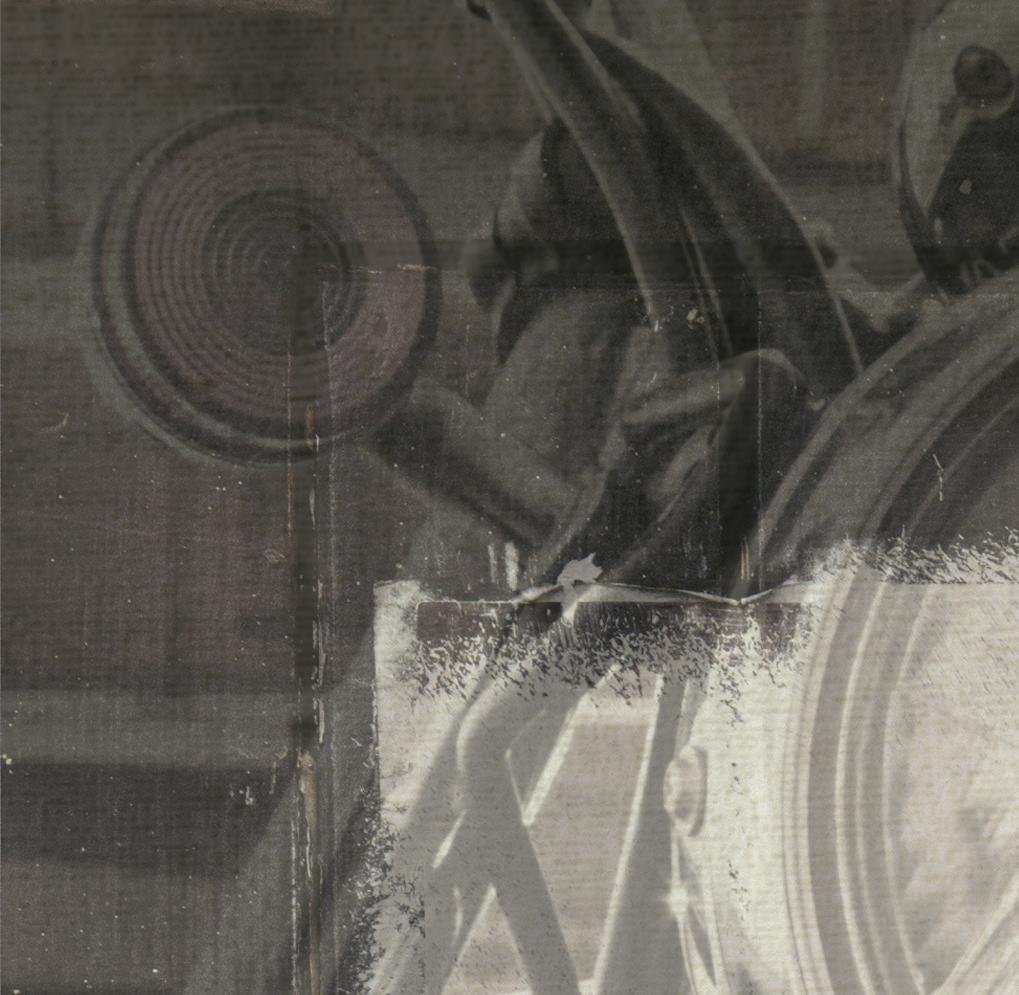
Get an inside look at the real beginning of outlaw biker culture with this “raucous and heartfelt recounting of the early days of biker clubs” (Roadbike). The story starts one weekend in 1947 at a motorcycle race in Hollister, California. A few members of one club, the no-holdsbarred ‘Boozefighters,’ got a little juiced up and took their racing to the street. Word of the fracas spread, and soon enough, Life magazine was on hand to tell the world with sensational (albeit posed) pictures of the outlaws. And then the ‘Hollister riot’ made its way into the movies, immortalized in Marlon Brando’s “The Wild One.”






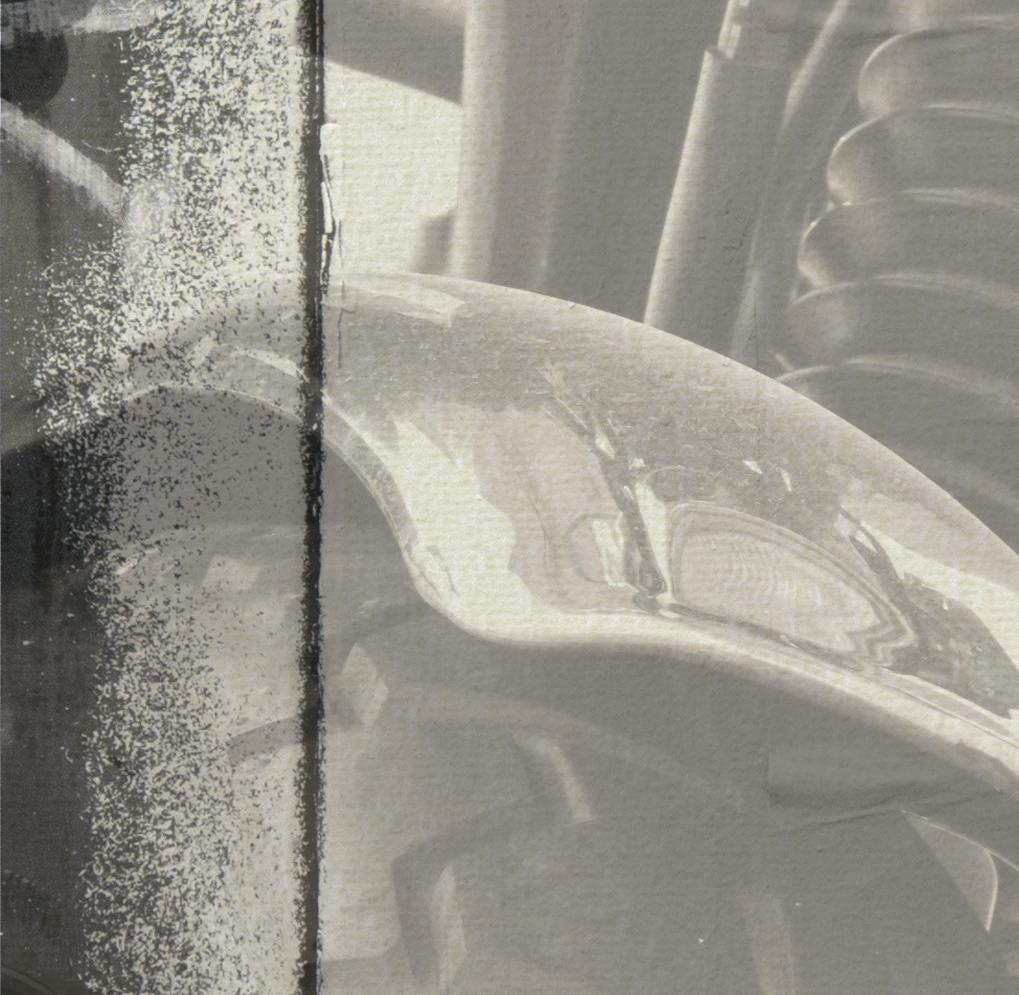
What was the reality behind the myth? Through interviews with the surviving members of the Boozefighters, current member Bill Hayes and club historian Jim “JQ” Quattlebaum take readers right into the fray for a firsthand account of what happened in Hollister and the formation of the Boozefighters, where the outlaw biker culture truly began.





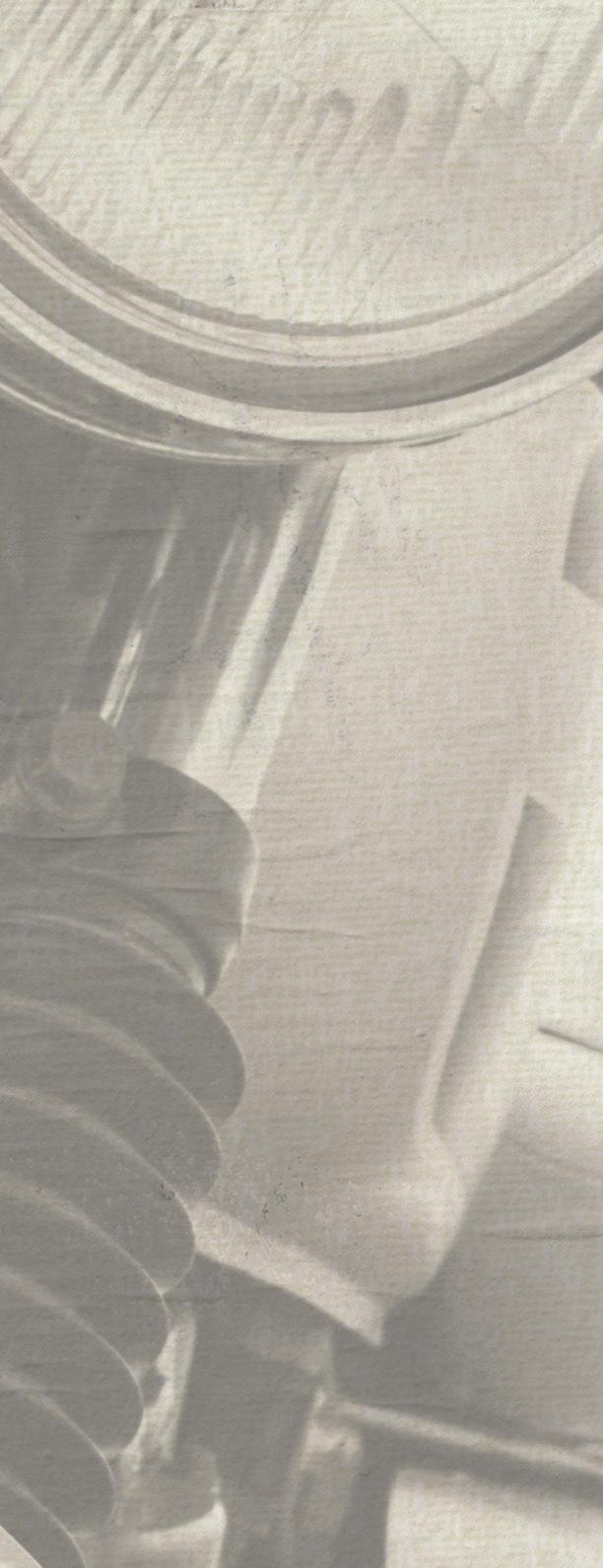
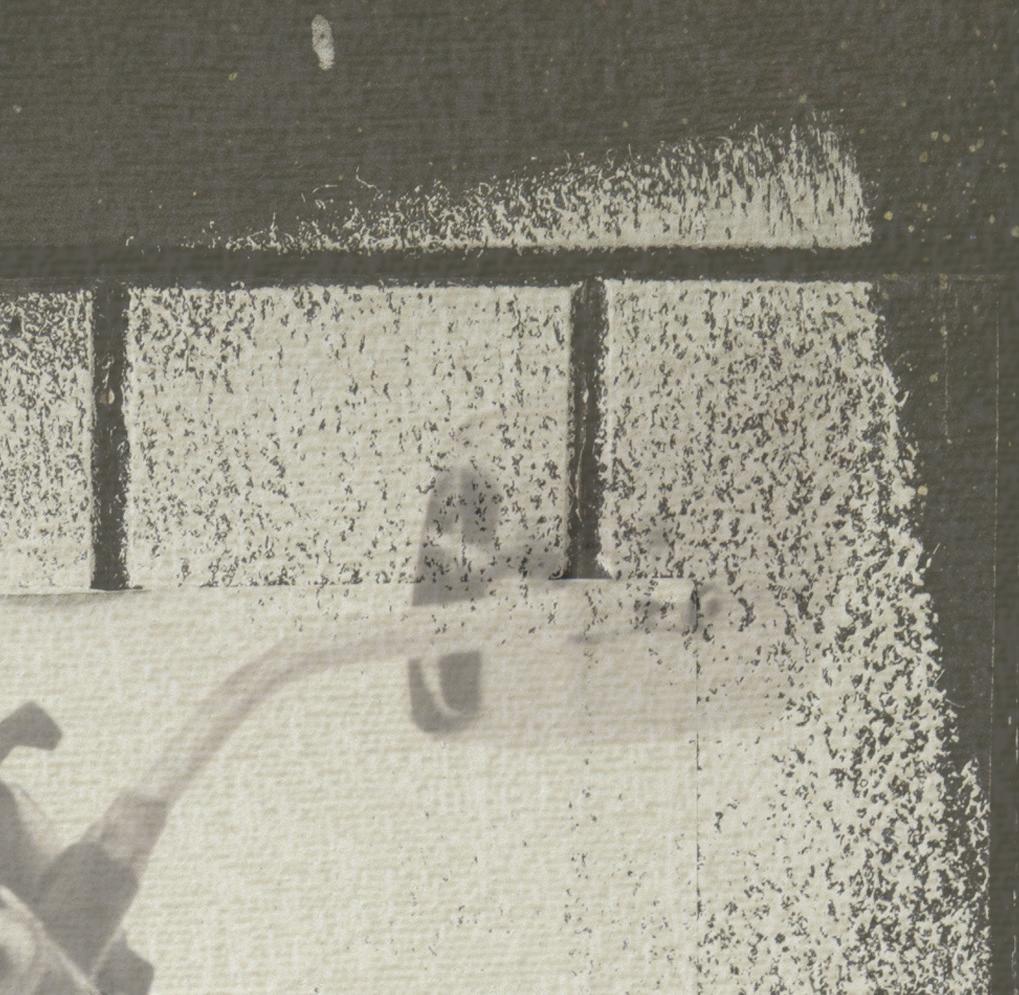
Item #11839 $24.99








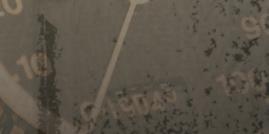













Members: $22.99











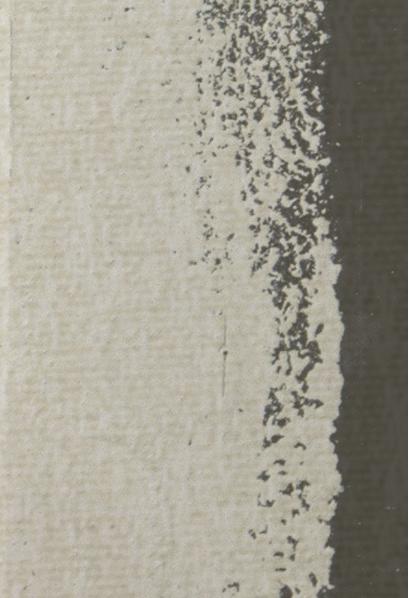



A 1958 Velocette Viper Scrambler converted to Viper Endurance

WWhen Jean-Pierre Pradères found a Velocette Viper Scrambler for sale in France, he didn’t have visions of powering through dusty deserts and banging elbows with AJS 16CS or BSA Gold Star Catalina riders. “I’m too old for that,” admits Jean-Pierre. “And I don’t ride fast enough either!” No, he had other ideas.
He wanted to convert the 350cc Scrambler into an Endurance model — a dual-purpose bike with lights and a muffler that would be the perfect tool for hacking along the forest tracks that surround his home 130 miles south of Paris. And when he decided to ride the National Rally in Ireland, he knew that the Viper Endurance would make easy work of the rain-sodden mountains of County Cork and Kerry.

Way back when
Velocette announced their first Scrambler model in November 1954. It was developed from the new MSS that had been launched the previous year. Now the alloy-engined MSS
roadster was a very nice motorcycle, but with only 23 horsepower at 5,000rpm and a top speed of 80mph, it was never going to burn up the asphalt. With a standing-quarter-mile time of 17.8 seconds, it didn’t exactly rip your arms from their sockets either. The softly tuned all-alloy 86mm x 86mm engine needed breathing on before it hit the dirt.
For starters a high-dome piston raised the compression ratio from 6.8:1 to 8.75:1 and a new cam gave much earlier valve opening and later closing, along with an extra 1mm of lift for the inlet valve. The rest of the valve gear, including the overlapping hairpin valve springs, was standard MSS. But instead of an Amal Type 276 with a 27mm choke, the Scrambler breathed through a 29mm Amal 10 TT9 carburettor, and big fat blue sparks were provided by a racing BTH magneto with manual ignition advance. With much more power available the cylinder head holding-down bolts had to be beefed up to keep everything together, but the bottom end of the engine — including the crankcase and narrow flywheel assembly with its Timken taper roller main bearings — was unchanged. All Scrambler engines were bench-tested to make sure that they delivered at least 35 horsepower at 5,700rpm before being fitted into the frame.
The dirt bike’s gearbox and clutch were the same as the roadster’s, but a 60-tooth rear wheel sprocket and a 16-tooth gearbox sprocket lowered the ratios for better acceleration, which must have sounded awesome on the straight-through pipe. Like the
As found in the U.S., the battlescarred Scrambler still had the straight-through pipe and fat knobby tires (left). Factory photo shows 1954 MSS Endurance with high, wide Western bars (below left).



MSS road bike, the Scrambler used the heavy brazed-lug cradle frame with a single downtube, but to save some weight the sidecar lugs were discarded. Dirt bike riders also got the patented Velocette adjustable rear suspension with Woodhead-Monroe shock absorbers, but while the MSS front fork was only lightly damped on the recoil, the Scrambler featured two-way damping and the hydraulics were stiffened up. A slim 2.5 gallon fuel tank, creased at the front, allowed more steering lock and the 3.00 x 21-inch front and 4.00 x 18-inch rear tires increased ground clearance by an inch.
The Scrambler might have been stripped down to the bare essentials, but that didn’t mean it was cheap — at £210 ($590) before taxes it cost nearly £30 ($84) more than its roadster brother. Like all Velocettes it was also superbly finished and the engine certainly had enough power for British events. Riders like Eric Cheney, John Draper, and the Selling brothers would all race the Scrambler, but although it was reliable it would never be a match for a Goldie. Unless, that is, you were in California.
That’s where Lou Branch, the American
distributor for Velocette, performed his magic at a shop on West Pico Boulevard in Los Angeles. He had tuned one of the old long-stroke 490cc iron-engined MSS roadsters by making his own cams and followers, fitting a 350cc MAC cylinder head to give a squish effect, and increasing the compression ratio to a stratospheric 20:1. With a 3.2mm hole drilled through the main jet and running on methanol, the Branch MSS was taken to the Rosamond Dry Lakes in California’s Mojave Desert where it flew through the electric timers at a blistering 122.07mph.
The factory-fresh MSS Scrambler was quick, but not quick enough for Branch. By the time he invited Cycle magazine’s editors to test the first one shipped to the U.S. he had already breathed on the engine. Branch also swapped the 60T rear wheel sprocket for one with 46T, and the standard 16T gearbox sprocket


for a 19T (a quick and easy job on a Velo because the clutch is inboard of the gearbox sprocket). Standard street tires replaced the factory-fitted knobbies.
Rosamond’s surface of compacted clay and silt was usually hard and smooth, but recent rain had roughed it up and turned parts to mush. Even so, the Scrambler still flashed through the electric timing device to record 15.5 seconds for the quarter-mile drag and a best two-way average of 105.26mph over the flying 1/10 mile. Those results could have been improved with a lighter rider — Cycle editor Don Brown weighed 200 pounds (91kg).
Velocette introduced the high-performance 500cc Venom and 350cc Viper road bikes in October 1955. The Venom’s 86mm x


86mm engine was based on the MSS Scrambler’s, although the compression ratio was lower at 8:1, and a split-skirt slipper piston was used instead of the solid skirt piston that needed less clearance. Instead of being based on the 350cc MAC, the Viper also used basically the same engine as the Venom and MSS, but the bore was reduced to 72mm and there was an 8.5:1 compression ratio. While the MSS used an M17/7 cam, the Venom used the same M17/8 cam as the Scrambler. Early Vipers also used the MSS cam, but after the first 260 engines they too got the M17/8 and the flywheels were also lightened. With 27 horsepower at 7,000rpm, a Viper was good for 90mph, while the Venom’s 36 horsepower at 5,700rpm pushed the top speed to 105mph.
At the same time that Velocette introduced the Venom and Viper they also launched the MSS Endurance model. This was a bike built at the request of Lou Branch especially for the American market, where long-distance endurance races like the 500-mile Jack Pine ran through the night. The Endurance used the low-compression MSS engine and roadster gear ratios, and came with a Miller dynamo and lights. A “fishtail” exhaust system made the Endurance road legal. But it was fitted with the same knobby tires, alloy fenders and small fuel tank as the Scrambler and, as a nod to its sporting pretensions, was sold with competition number plates already fitted.
Like many desert racers, McCasland preferred a fatter knobby tire up front and Branch replaced the original 21-inch rim with a 19-inch one. It seems that McCasland raced the Scrambler for four years before parking it in a corner of his garage. Fifty years later, when a French motocross enthusiast wanted to buy a couple of Gold Star Scramblers, he had to take the Viper Scrambler as part of the deal. But he wasn’t interested in Velocettes, and sold it on soon after he shipped the three bikes home.
groveclassicmotorcycles.co.uk

You could say that Jean-Pierre is interested in Velocettes, but that would be a massive understatement. He is passionate about the Hall Green singles and bought his first Viper in 1973. Fourteen years later he formed the French Velocette Owners’ Club with three friends, by which time he also owned a very nice vintage KTT. Since then he has never been without a Velo, and his current stable includes a 1960 MSS hitched to a period Watsonian GP sidecar and a very nice alloy-engined MAC. When he first saw the Viper Scrambler for sale it was priced way out of his range, but after a few months there were still no takers and the price dropped to something much more reasonable. He snapped it up.
The Viper Scrambler joined the Velocette family in February 1956 and ran a 9.3:1 compression ratio. With their small, chrome plated fuel tanks and high-level straight-through exhaust pipes the Viper and Venom Scramblers were handsome machines. But they offered more than good looks and Lou Branch’s riders Bob Beasley and Bruce Jackson were soon racking up wins. In fact, Jackson won 30 main events and had to settle for second in another 10 but he never failed to finish. Those results must have impressed racer Bob McCasland, who lived about 25 miles from the West Pico Boulevard shop and so in late 1958 he bought a Viper Scrambler.
After shaking the sand out of the large air filter, Jean-Pierre stripped the engine. “The good news was that the valves and the piston were like new, but the bad news was that it must have been run low on oil because the big end was scrap,” he says. “Fortunately I was able to buy a new flywheel assembly from Grove Classic Motorcycles. Grove is a Velo specialist, and they balanced the flywheels to match my piston.” Carefully shimmed Timken taper roller bearings ensured that the crankshaft spun smoothly in the crankcase. In spite of being abused in those desert races, the much-maligned clutch and gearbox were both in perfect condition, only needing cleaning and careful reassembly.
There are a number ways do identify a Scrambler, besides the obvious suffix S in the engine number. Besides the two-way fork

damping, the top fork yolk is dowelled to the steering column with a 3/8in screw. Both swingarms are dowelled to the swingarm shaft to prevent them twisting. With so much torque going through the 60T rear wheel sprocket, Velo decided to use a hub with six bolts to secure the combined brake drum and sprocket. The lower front fender stay is also triangulated with a steel plate to make it less likely to fracture, a modification later used on the Thruxton. “All the bolts on my Viper Endurance are the originals made by Rubery Owen,” adds Jean-Pierre with a satisfied smile that only other Velocette enthusiasts would understand.
The original fuel tank wore the scars of a desert scrambler, but rather than try to knock the dents out and sending it off to be polished and plated, Jean-Pierre obtained a 1955 style tank from a contact in America. “I think it looks better, and it holds a little more fuel. That is important for an endurance bike!” he says. The MSS Endurance used upswept Western bars, but these were too high and so Jean-Pierre fitted a pair of BSA Western bars which better suit his stature. The ball-end clutch and brake levers are original. Both wheel rims and spokes are also original — they don’t get much trouble with rust in the Californian desert — but Jean-Pierre changed the Scrambler sprocket for a Venom’s 46T at the rear, so he only needed three bolts to secure it to the hub. He fitted a 17T at the gearbox to give the best compromise between brisk acceleration and comfortable high-speed cruising. Dunlop K70 tires make more sense than knobbies.
“The forks have the two-way damping but I fitted lighter springs,” continues Jean-Pierre. “The Scrambler ones were much too hard.” Converting a Scrambler to an Endurance Viper was proving to be relatively easy — it was finding parts like the 6-inch Miller headlamp and D-shaped 90mph speedometer that was difficult, but Jean-Pierre found them both in England. He didn’t bother looking for a Miller dynamo, preferring to use a 12 volt Alton generator instead. A small sealed battery and the voltage regulator live inside the toolbox.
I’ve known Jean-Pierre for nearly 20 years and like him I’ve been a Velo enthusiast since I got my first Venom — hitched to a Steib sidecar — also way back in 1973. We’ve both heard enough about how hard it is to kickstart a Velocette. It isn’t. It’s easy. If you

Jean-Pierre got his first Velo 50 years ago. The south west of Ireland is nothing like California, but it’s perfect for riding an Endurance Viper.

can’t start one you need to man up. Or read the instruction book. Let’s ride.
We’re in the Caha Mountains, dodging suicidal sheep on singletrack roads, and I’ve swapped my Goldie for a spin on the Velo. If the engine of the Endurance Viper is looking a little oil-stained and the cycle parts are splattered with mud it’s because we’ve been riding in this part of Ireland for five days and covered more than 600 miles. Neither bike has missed a beat. And we’re having a great time.
The 350cc engine is a peach, smooth and free-revving. JeanPierre has got the gearing set up perfectly for these roads — he’s right to sacrifice speed at the top end that he’ll never use for more low-down grunt. Who wants to be doing 90mph over Priest’s Leap anyway? Of course, the Velocette clutch is two-finger light and you can select neutral from a stand-still if you forget to do it while rolling. Those wide Western bars make the handling feel even lighter than usual. Although the 7-inch front stopper has less than half the brake shoe area of the full-width hub used on a Viper roadster, it can still lock the wheel on these tracks. Can’t ask for more.

Easily capable of over 80mpg, the Viper Endurance drinks fuel like a Frenchman sipping an Irish coffee. Those grey skies mean there’s more rain on the way. Time to head for our favorite pub in Glengarriff — it’s your round, Jean-Pierre! MC
This book covers the first century of the British motorcycle industry, from its beginnings to the end of the 20th century. Divided into four chronological sections, it profiles 100 of the best-loved machines that helped shape a century of motorcycle design. Coverage includes all the famous marques such as AJS, Brough, BSA, Douglas, Greeves, Norton, Panther, Royal Enfield, Rudge, Scott, Sunbeam, Triumph, Velocette, Vincent, and Zenith. Each entry includes information about the history of the bike, with specification panels detailing years in production, engine type, bore and stroke, capacity, gearbox, brakes, transmission, power, weight, and top speed. This title is available at store.MotorcycleClassics.com or by calling 800-8807567. Mention promo code: MMCPANZ5. Item #10701.




Story and photos by Robert Smith
IIn many ways, the Italian motorcycle industry in the 1930s mirrored Britain’s bike makers of that time.
Benelli, Bianchi, Guzzi and Gilera all produced singlecylinder 4-stroke street bikes with various levels of sophistication in the 250 and 500cc classes. But the aftermath of World War II dramatically altered the Italian motorcycle market. Required were miserly, small capacity basic transportation bikes like mopeds and scooters. And while Guzzi and Gilera continued to build prestigious 500cc and 250cc 4-stroke singles into the 1950s (such as the Falcone and Airone from Guzzi, and the Saturno and Nettuno from Gilera), sales in those classes were slow.
Companies new to motorcycle production proliferated: Aermacchi, Innocenti, Agusta, Piaggio, Laverda, Ducati, Parilla, Rumi and more. Motorcycle makers with a background in larger capacity machines struggled. One of the more agile of the heritage manufacturers was Gilera.

Giuseppe Gilera founded his motorcycle company in 1909 at the age of 22 after apprenticing at Bianchi. After World War I, Gilera opened a new factory at Arcore near the Monza circuit, and the company quickly became not only one of Italy’s largest motorcycle manufacturers but was also successful on the racetrack. In the 1930s, the company’s volume production had been based around a range
Gilera knew that 4-stroke motorcycles were considered superior to 2-strokes in the minds of the cognoscenti, and so they were able to command a higher price — though they were typically more expensive to
produce.
So, forsaking the 2-stroke route adopted by many other early post-World War II makers, Gilera tasked Ing. Piero Remor with designing an entry-level 125cc 4-stroke. But it wasn’t long before Gilera and Remor clashed over the design. Remor proposed a modern OHV 4-stroke engine, while Gilera demurred, favoring a traditional side-valve design. The patron prevailed — though one outcome of their spat was that in 1949 Remor abandoned the Arcore company in favor of an appointment at MV Agusta. (Read sidebar “Cuckoo in the Nest.”)
ers, Gilera tasked Ing. Piero Remor with But
Thus, at the 1948 Milan motorcycle show, Gilera presented an uninspiring side-valve 125cc 4-stroke with a meager 3.5 horsepower giving a top speed of around 45mph. Despite lackluster performance, it gained kudos for miserly fuel consumption.
But the production motorcycle eventually announced at the 1949 Milan show was a 125cc OHV 4-stroke with 4.7 horsepower and a top speed of 50mph — though it carried over some of the features of the flathead version, housing the camshaft and side-by-side pushrods in
over some of the features of the flathead version, housing the camshaft and side-by-side pushrods in

the front of the engine. In spite of its modest performance, the 125 was a sales success, at least partly because of its frugal 95mpg. Production could not keep pace with demand.
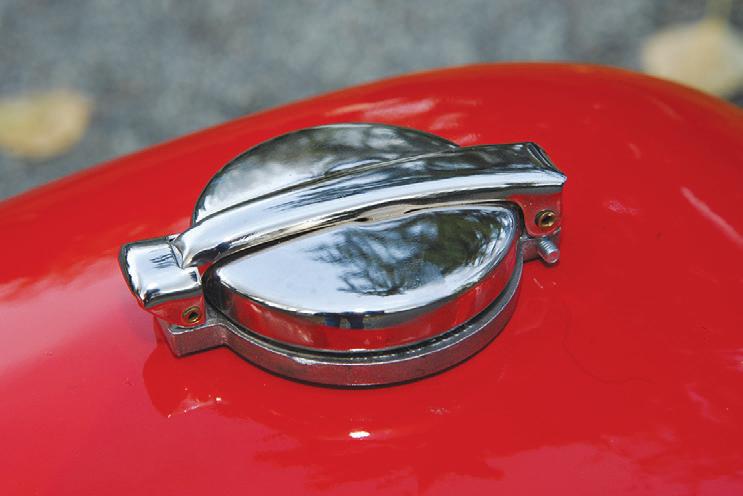
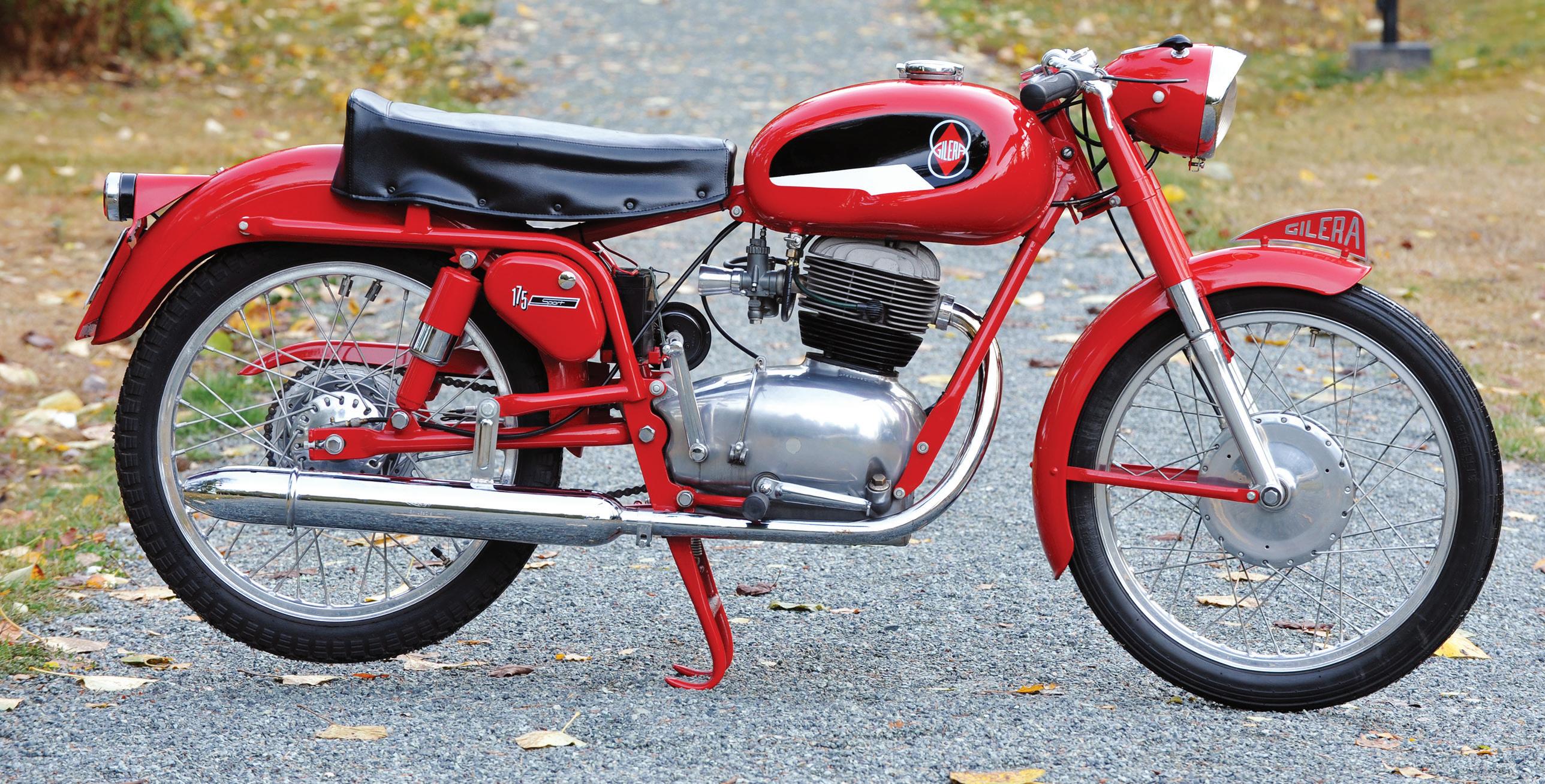

Engine: 173cc air-cooled OHV 4-stroke single cylinder, 60mm x 61mm bore and stroke, 7.25:1 compression ratio, 9.1hp @ 6,500rpm
Top speed: 72mph
Carburetion: Single Dell’Orto 22mm
Transmission: 4-speed
Electrics: 6v battery and coil
Frame: Steel tube, open cradle with dual downtubes
Suspension: Telescopic fork front, swingarm with dual shocks rear

Brakes: 6in SLS drums front and rear
Tires: 2.5 x 19in front, 2.75 x 19in rear
Weight (dry): 220lb (100kg)
Number built: 10,500 (approx.)
It wasn’t long before a revised 125 was announced, with friction dampers working on the swingarm rear suspension and front-end “parallelogram” girder forks — though production still lagged behind demand. This issue was addressed in early 1951 with the installation of an assembly line at Arcore with an output of up to 1,000 machines per month. Introduced at that time were two new models: the Turismo and Sport. The Turismo featured increased oil capacity in the wet sump and a switch from roller big-ends to plain bearings, while the Sport added greater fuel capacity to 13 liters (3.43 gallons) and increased power to 7 horsepower, giving it a top speed of more than 55mph — without using any more fuel, it was reported.
Italy’s vehicle excise system of the time allowed motorcycles of up to 125cc to escape registration and therefore taxation. This advantage evaporated in 1952 when registration was introduced for 125cc machines, and new rules prohibited them from using the autostrada.
Instantly, the go-to engine size became 150cc. Before the switch, Gilera is reported to have built 25,000 of its various 125cc machines. The new 150 used the same 54mm stroke as the 125, but with bore increased to 60mm. The 150 was initially available in Tourismo and Sport, each using different front suspension. The Tourismo had the familiar parallelogram girder type, while the Sport introduced a telescopic fork. Both were initially sold with a 3-speed gearbox, though the 150 Sport gained an extra cog in 1953. In the same year, Gilera made available a limited-edition sporting model called the Dimostrazione featuring a bum-stop dual seat, tachometer, “cocktail-shaker” muffler and Monza-style filler cap. 1955 saw the introduction of the Gran Turismo; the Super Sport and Rossa Super followed in 1957. Production of the 150 ceased in 1960 after around 96,000 had been built.
 Finned alloy rocker cover, “Monza” gas cap, “Ace” bars and velocity stack all say Sport.
Finned alloy rocker cover, “Monza” gas cap, “Ace” bars and velocity stack all say Sport.
In 1956, Gilera introduced a 61mm-stroke version of the 150 engine giving 172.5cc. The G175 as it was known was joined by a Gran Turismo and Extra competition model at the end of the year when it was renamed Normale. The Extra incorporated features of the Gilera B300 (a 300cc twin that was essentially two 150s side by side) including its chain-driven primary. For 1957, the Sport was introduced in Gran Turismo engine tune, while the Extra became the Rossa Extra.


Production of the 175 continued into 1960 by which time around 10,500 units had been produced. A revised engine with the contact breaker moved to the left side primary case arrived in 1961 and introduced the Giubileo (Jubilee) model, though it’s unclear
which jubilee it was intended to celebrate. Production of the new 175 lasted until 1969.
Langley, British Columbia’s Jim Bush bought his Gilera 175 Sport at auction in Las Vegas in January 2019. And though he’s delighted with the bike, it did require some fairly intensive work to get it back on the road. The description noted that “this example being offered has been restored and remains in good condition though after dry storage will require the usual safety checks before running again.”
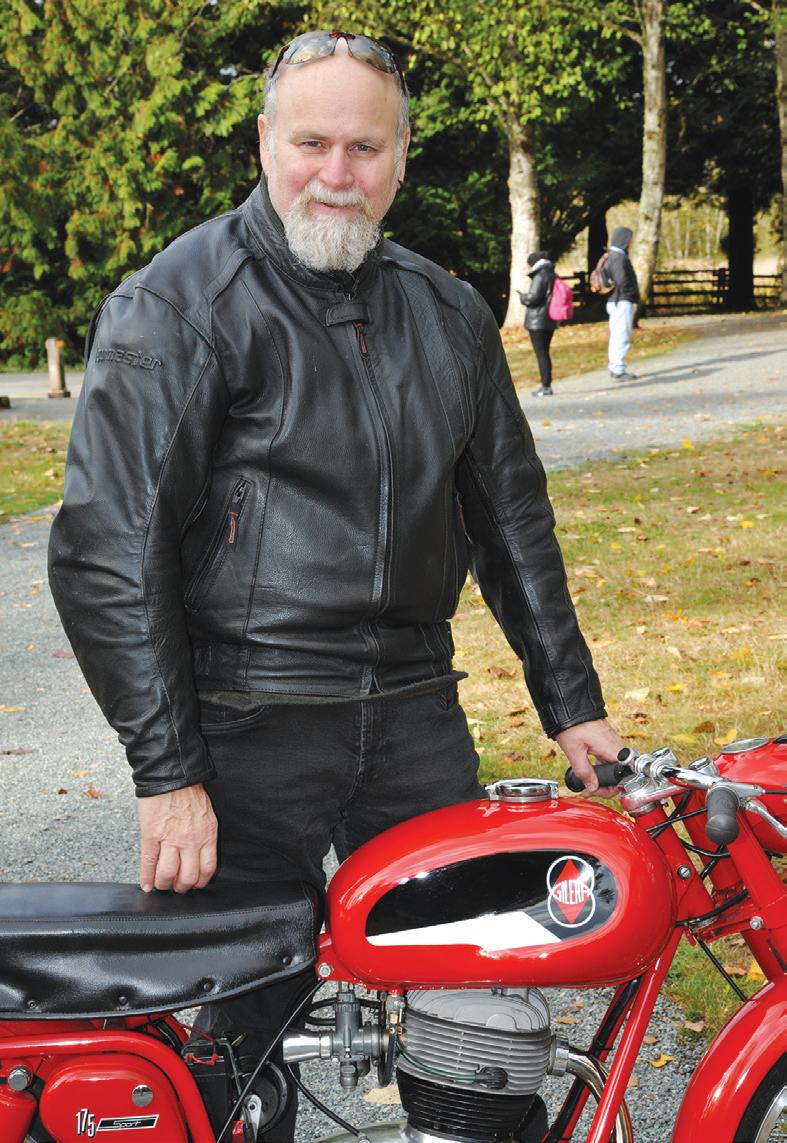
“That implied that it was a running bike” says Bush, which proved not to be the case.

“The ignition points had been improperly installed with a direct short; the head gasket was

engineering and





are all “just right.”
blown; and the sump plug had a hole in it, meaning when topped up with engine oil, it would exit to the ground!” Neither has Bush yet succeeded in getting the lights to work.
“The restoration appears to be of the highest level of cosmetic finishing,” he notes. “Externally it is a stunning restoration, correct in every detail. What lies under the shiny covers is an engine that was put back in just as it was prior to restoration. There was no effort to restore the engine, evidenced when I pulled the head to replace the blown head gasket and discovered many years of carbon build up.”
Bush checked the piston, rings and cylinder bore. “Everything looked good and was showing a certain amount of mileage,” says Bush.
The engine’s condition was inconsistent with what happened next: “I was barreling along at full throttle on a quiet back road at around 60mph and it felt like it seized, with the engine suddenly quitting,” says Bush.
Bush pulled the clutch and coasted to a stop.
When Ing. Remor joined MV Agusta from Gilera in late 1949 he could point to an impressive and relevant resume. In 1923, he and Carlo Giannini designed a 4-cylinder, air-cooled SOHC motorcycle engine, with the camshaft driven by a train of gears between the middle cylinders. Giannini and Remor recruited Count Giovanni Bonmartini to their project, producing a complete motorcycle called the GRB. By 1928, and with partial liquid cooling around the exhaust valves, their engine was producing 28 horsepower at 6,000rpm.
Though well ahead of its time, the GRB failed to find a market, and in 1930 the company folded, with Giannini joining Bonmartini’s Compagnia Nazionale Aeronautica. CNA retained the rights
to the OHC engine. Around 1934, Bonmartini hired Remor together with racer/engineer Piero Taruffi to further develop the GRB engine. Remor added a second camshaft, full liquid cooling and supercharging.
With 86 horsepower at 9,000rpm, the Rondine (swallow) was a revelation. It beat the Moto Guzzi and Norton factory machines on its first outing at the Tripoli Autodrome in 1935, finishing first and second. Then in 1936, Count Bonmartini sold his company to engineering conglomerate Società Italiana Caproni: the new owners weren’t interested in racing.
Gilera jumped at the chance to acquire the Rondine, while also recruiting Taruffi (and later, Remor). The Rondine gained swinging arm rear suspension, and with
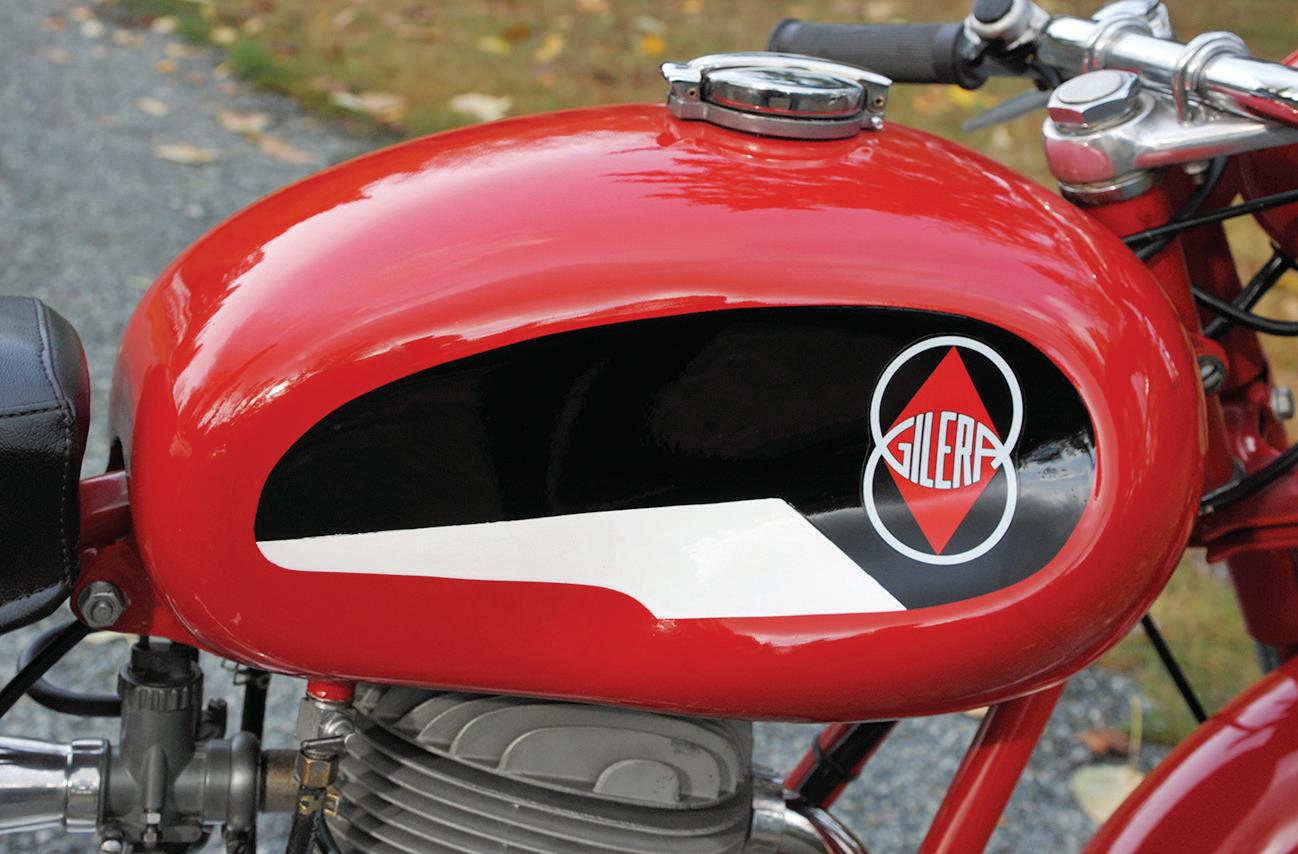
further engine development, Taruffi took to the strip and the track, setting a world record flying kilometer speed of 170mph (272kph), and a one hour average speed of 127mph (205kph).
But perhaps the Rondine’s greatest achievement was winning the European Championship for Teodoro “Dorino” Serafini in 1939 after an epic tussle with Walter Rusk on the “blower” AJS V4 in the Ulster Grand Prix.
With supercharging banned after 1945, Remor redesigned the Rondine with a new wet-sump engine, which fitted into a pressed-steel frame with torsion-bar rear suspension via a swinging arm, and girder front fork. Though factory rider Nello Pagani described the machine as “unrideable” when it debuted in 1948, it


After a quick check over, the engine restarted and ran with no sign of mechanical damage, “no smoke or rattles, it ran just fine,” Bush says. When the same thing happened three more times in the next few days, Bush began to suspect a simpler issue.
“I discovered that the ignition key had ejected itself out of the ON position due to the high-speed vibrations, and only needed to be gently pushed back in to keep it running. The years have not been kind to the brass contacts that keep the key in its place!”
Riding the 175cc Gilera is really a different experience than
was good enough for Pagani and Arcisco Artesiani to finish second and third in the 1949 world championship behind Les Graham on the AJS E90S “Porcupine.”
At the end of 1949 Count Domenico Agusta lured Remor, Artesiani and chief mechanic Arturo Magni away from Gilera to his new Meccanica Verghere motorcycle factory. Remor produced a new 500 4-cylinder motorcycle with shaft final drive from a gearbox laid out longitudinally behind the engine and driven by bevel gears. Torsion bar springing was used front and rear, with a girder-style front fork, while the rear was controlled by a pair of swingarms. With Taruffi in charge of development at Gilera, the Four was fitted with new cylinder heads and bigger carburetors for
a full-size motorcycle, says Bush. The limited power means speed preservation and anticipation are the keys. “Compared to my other small tiddler, a 125cc MV Agusta of the same era, the 175cc Gilera is a capable ride. It is easy to maintain 40 to 50mph without too much fuss and it will take on a hill enthusiastically. The low handlebars and sprung seat make for a comfortable ride. The 4-speed gearbox selects easily, and the brakes are very good. Not to mention, whenever you park it, there are always conversations struck up with admirers! Not many people know what to think of it, but they all are taken aback by its stunning good looks.” MC
the 1950 season, rewarding factory rider Umberto Masetti with a world championship. The Four’s frame and suspension were revised, and larger brakes added for 1951. But neither Italian factory team could “approach” Geoff Duke, who took the 1951 championship for Norton. Then, in a move that shocked the British public, Duke defected to Gilera.
Not to be outdone, in 1951 MV Agusta hired 1949 500cc world champion Les Graham. The 1952 MV Four now featured chain final drive with telescopic fork front and swingarm rear suspension. And while the bike was almost right, MV lost its top rider when Graham was killed in a crash at the 1953 Senior TT, and Gilera’s Masetti took the world title. For the next three years, Duke dominated on the Gilera, taking the 1953-55 world championships. But

in late 1955, Count Domenico countered, signing 21-year-old Figlio del Vento (Son of the Wind), John Surtees. The result was MV’s first world championship in the senior class, after Duke was sidelined by the FIM for supporting a riders’ strike.
With Norton pulling out of racing in 1956, and Duke absent through injury in 1957, Gilera’s parting shot in 500cc racing yielded a world championship for Libero Liberati. Then, at the end of the 1957 season, Gilera, Moto Guzzi and FB Mondial all closed their race departments. That gave MV the pick of the best riders of the next two decades: Surtees, Hailwood, Agostini, Hocking and Read, racking up 17 consecutive 500cc world titles.
Whether MV would have been as dominant had Gilera stayed in the championship makes for interesting speculation. — RS






TThe virus lay dormant for 30 years. Then, in 2002, an eBay auction for a Bultaco Metralla appeared.
Specifically, the auction was for a Mk2 250cc Metralla, this one in European spec and located in Ontario, Canada. In a moment of weakness I bought it sight unseen, from another country, over a thousand miles away. It was then the Bultaco virus arose and seized control. There appears to be no cure.


Back to the start, the initial exposure. My first Bultaco, an Alpina, was purchased new at Sleger-Forbes in Hanover, New Jersey, and it served well as an enduro and trail bike for several years. Its subsequent history deserves a moto-biography of its own. In any event, life interfered with work, a dalliance with older Porsches, a bit of vintage racing (Google Turner sports cars), a move to Florida, more work, and finally retirement and
my self-gifted gold watch, the Metralla. Since then a dozen and a half Bultacos have arrived at MotoEuro Garage, and very few have left. Clearly the Bultaco virus is a real thing. Background covered, this article is to introduce a few lesser known models of the brand.
Many otherwise well-informed enthusiasts will be surprised to know that, in its 25 years, Bultaco built more than 200 models and variants. A few of the more unusual models (see Motorcycle Classics January/February 2023 issue for one) have found their way to my garage.
Let’s first start with my Model 23T. Yes, there are a few situations where Bultaco added a suffix to define a sub-model. In this case, it designates the El Tigre as a version of the M23 Metralla Mk2. There are two versions of the story behind this model; I tend to believe this one. The Japanese were building street scramblers that were selling like hotcakes. Bultaco made pure street models and dirt bikes, and they needed a
competitor for this market. The El Tigre was a bit of a parts bin special. Though basically a Metralla, the tank was from an earlier Matador, the frame was modified, alloy Sherpa fenders were added, and a new exhaust designed. Presto! Instant scrambler. In truth it, like Honda’s CL250/305, was really a gussied up street bike, albeit a stylish one.
This one came to me fully restored from my friend Bill Hawes. I caught Bill in a moment of weakness and he has lamented it ever since. Bill did a great job on this bike and it received a Senior First award from the AMCA, scoring more than 99 points. These El Tigres are exceedingly rare and becoming quite valuable.
Next, we move on to the Pursang. Actually, two of them, the first and one of the last. The first, initially released in 1964, is generally referred to, somewhat controversially, as the Bultaco Metisse. In fact it originated from a failed partnership with the Rickman Brothers, which may or may not have involved litigation, depending on who is telling the tale. In any event, the frame is a copy of the Rickman but in plain steel rather than chromoly. Bultaco never called it a Pursang, though the factory parts manual refers to it as such, and its replacement
was called a Pursang Mk2. In any event, the Model 11 (every Bultaco has a model number that corresponds to its design number and is the first two or three digits of the VIN) was Bultaco’s first true motocross model. Sort of. There were actually two versions, as the TT used a 19-inch front wheel and had a couple of ponies more than the 21-inch shod motocrosser. The Metisse/Pursang was unique among Bultaco motocrossers in having a double downtube frame and center exhaust port. My TT example arrived pretty nicely restored, with a fresh Lynn Mobley engine, but wearing an incorrect and damaged green paint job, along with some fender issues and needing a lot of detail finishing. The correct color turned out to be Ford



Springtime Yellow, a far more mellow color than used by later models. It really is a classic looking motorcycle.
Another Pursang is the M170, a Mk9, one of the later long-travel models of the late 1970s. While 250cc Mk9s were quite popular in period, there were far fewer M170 versions. These were 200cc bikes built for a short-lived U.S.-only class mainly popular in the East. What adds to their appeal is the very attractive graphics unique to this model.

Mine came by way of a trade with a friend who wanted my 360 Frontera, a bike I was frankly too wimpy to fire up. I figured a 200 would be far easier to


“The Mk9 was a one-owner, heavily weathered example that required a full restoration.”The author’s M170 Pursang as found (top). The same Pursang after a sympathetic restoration (above left and right).
required a full restoration. As with most of my projects, it took about a year to complete. There can’t be too many of these around anymore.


Another rare model is my M08, a first series Metralla also known as Metralla 62, named for the year of its introduction. In truth, a lot of these were built and they were very popular in Europe, the sport bikes of the era. A 200cc motorcycle capable of over 90mph was pretty heady stuff in the early 1960s. The Metralla reportedly had the legs over the contemporary 200cc Italian products and won many races. But in the U.S. at the time, there were few dealers, and most were competition oriented. Plus, this was not a beginner’s bike and the price point of the Metralla was significantly above



that of its mass produced competitors.
I recall a Peter Egan column years ago wherein he asked a well-known collector which of his many bikes was his favorite to ride. He pointed to a wellused little bike in the corner, a Metralla 62. He opined that Bultaco’s later, faster Mk2 had somehow lost the essence of a light, tossable corner carver and no other bike came close.



This one came from Seville by way of California. Purchased by a U.S. airman, it remained in his ownership until he passed. His widow entrusted it to a neighbor from whom I purchased the sad rusty relic after nearly fifty years of disuse. It received a VERY comprehensive restoration in which I managed to keep most all of the original parts, down to the fasteners. There are small but significant differences between domestic and U.S. export versions that needed to be kept as delivered. To honor that provenance, I retained the initial

A Factory specification sheet for the Mk 9 Matador (right). The Matador after completing a sympathetic restoration (at bottom).
Spanish registration. I’m quite proud of how this long, difficult restoration came out, especially as an amateur working in a home garage.
The Matador Mk9
The final example for this exercise is the Matador Mk9. In the mid-1970s, Bultaco recognized their enduro line was at a crossroads. What should be the follow on to the seminal Matador SD? At the time the SD (M107) was the pinnacle of the enduro line. But it was not street legal. The Japanese had divided their lines between streetable dirt bikes and serious competition models; i.e., Yamaha DT vs. YZ, Honda XL vs. MT, etc. The Spanish answer for serious enduro work would be the Frontera, available as a 250 and a 360. Meanwhile, the Matador would be the street bike. The M140 Mk9 was developed from the ground up for the task. It featured a 350cc engine, steel fuel tank, full road equipment, battery operated lights, a large comfy seat for two, a carrier rack and more. Unfortunately, the Mk9 and its near-identical successor met with limited sales success in the U.S., largely due to the ubiquity of large Japanese brand dealers as compared to the generally small, enthusiast-run Bultaco shops. The final straw was the EPA coming down hard on 2-strokes essentially ending the importation of Spanish street bikes.


I found this Mk9 in York, Pennsylvania, on Craigslist. Relatively lightly used, it was available at a bargain price due to an engine that would not fire. It was such a good deal I blasted up there from Florida on Easter Sunday to pick it up. On the way home I dropped it off with a friend who had a vintage motorcycle hobby business and asked him to take a look at it. Thirty minutes later at home he sent me a video of it running sweetly. The ignition side of the engine had been filled with hard packed sand, once removed it fired right up. Too nice to restore, it was dismantled, detailed and reassembled with new replacements for the usual wear components. I left it stock, with the exception of replacing the clunky DOT-style controls with earlier Bultaco units.
So there you have it, a few of the lesser known Bultaco models. One thing that keeps me interested in the brand is that as a small company from an agricultural country, Bultaco fought well above its weight class, building so many varied and interesting models. Frequently, research yields tales that go well beyond the bike itself, to the heart of the brand, the sport and the industry. MC
Alan Singer is an octogenarian old fart who continues to play with Bultacos in his home-based MotoEuro Garage in Jacksonville, Florida. Some of his builds have won awards and been seen in magazines. His pals remain unimpressed (still).
My oldest brother, Rob, lives in Vermont. Lush forests and picture-postcard dairy farms blanket the Green Mountain State, a mostly rural region favored by close proximity to major metropolitan and cultural centers like Montreal, Boston and New York City. Yet despite its obvious attributes, the state’s population growth rate stays quite low. My brother chalks it up to the area’s long, cold winters, which, he opines, naturally limit Vermont’s population, separating the wheat from the chaff, so to speak, as not everyone can abide the discomfort. Likewise, old bikes — with often sketchy ergonomics, sometimes indifferent mechanicals and questionable reliability — demand a unique mix of perseverance and a sort of defiant irrationality that combines to keep the herd of active riders in check. You don’t just fire up a 50-year-old anything and putter off without first tending to myriad checks to ensure said 50-yearold is actually in the mood to putter off. Or even start, for that matter.
You can’t own a vintage bike if you’re not willing or able to keep a step ahead of its repair and maintenance curve. That’s easier said than done if you’re lacking specific knowledge about whatever it is that needs doing. You might be willing, but the able bit becomes a bit harder. Although it’s true that many people actually pay other people to keep their machine(s) going, I’m not one of those people. I’ve never considered myself a masochist, but I consider old bike mechanizing, which can and often does involve a fair bit of banging one’s head against the wall, part of the fun of old bike ownership.
I used to favor British bikes, Nortons in particular, but the last few years have seen me trend German and Italian, with a pair each; two BMWs, along with a Laverda RGS and more recently a Ducati Paso. When it comes to working on them, finding info on the BMWs, especially the older of the two, my 1973 R75/5, is easy. Aftermarket manuals are still plentiful, and there are gigabytes of YouTube videos detailing one repair or another. And while the pool of info is shallower for the newer of the two, my 1995 K75, it’s almost inconsequential, because the K75 doesn’t
appear to require much beyond oil changes and tires. Funny that; the K75’s userfriendliness is a virtue to most, but I’ve nicknamed it “The Appliance” owing to its overall blandness. I don’t argue that it’s a good bike. It is in fact a very good bike. It’s just that it’s not the kind of machine that inspires ambitious ownership.
The two Italians inspire — and demand — a bit more engagement. Over a roughly four-year span starting in 1982, Laverda manufactured an estimated 2,500 RGS models, with perhaps 10 percent, some 250, making their way to the States. Hardly big numbers. I have two (my daily rider and a second still in process), which means I have almost 1 percent of the total U.S. inventory. Unless you’re heading to a vintage Italian bike gathering, chances are you’ll never see yourself coming or going when you ride a Laverda. The same applies to my 1988 Paso. Although production was higher at just under 4,900 in three years of production, only half of those came to the U.S. My white “Limited” is one of only 50 made. With those small numbers, you’d be forgiven for thinking that finding technical and maintenance information would be challenging. It’s not. Compared to the 1983 Kawasaki GPz 750 I once owned, a bike built in the thousands and based on mechanicals built in the tens of thousands, finding solace in repair is actually quite easy. And counter
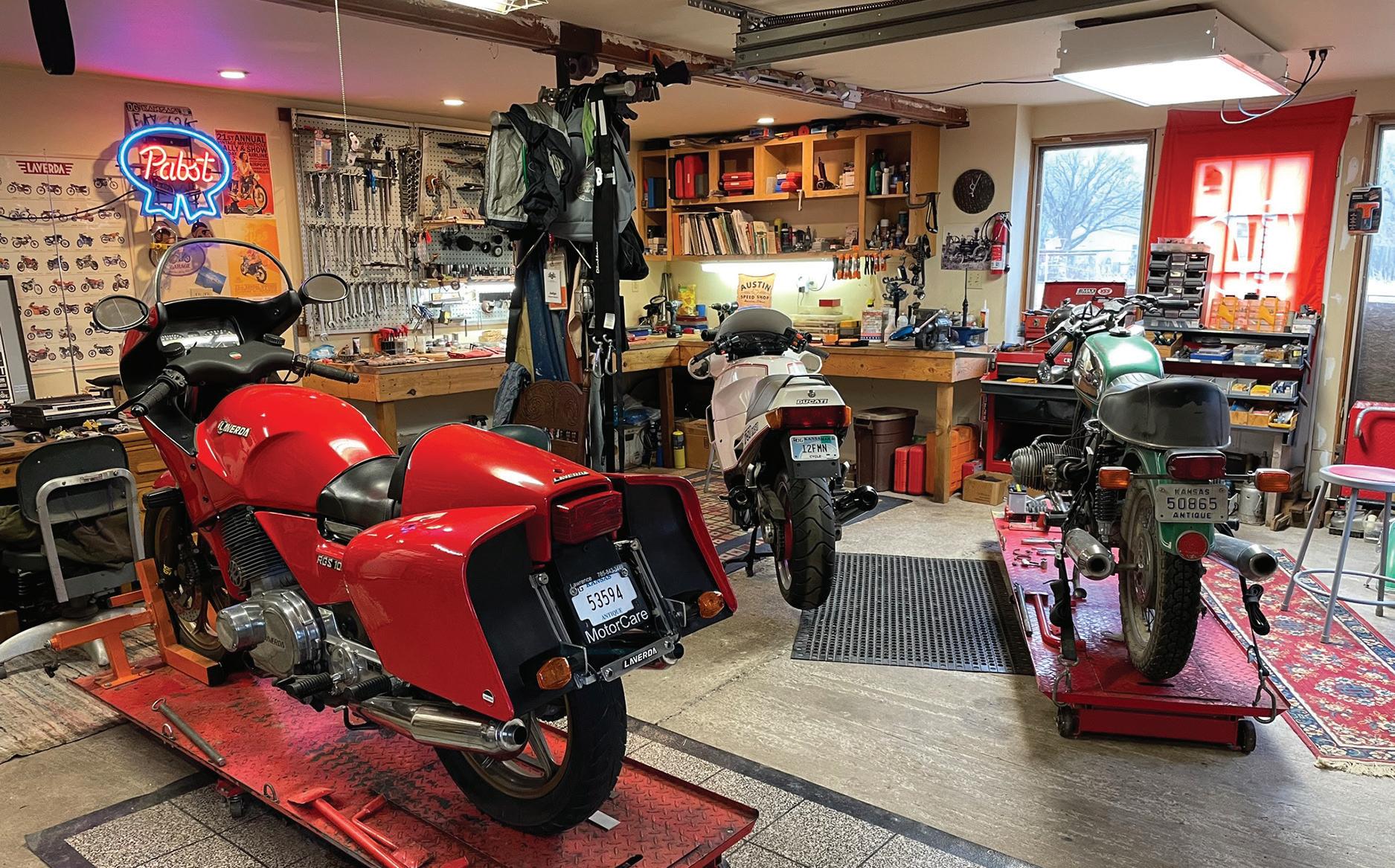
to what you might expect, parts for my Laverda are not only still available, but compared to the GPz easier to find and cheaper.
Motorcycles such as Laverda and Ducati inspire an ardent audience of owners and, importantly, vendors who support the brand. The quantity and quality of information owners actively share to keep their machines running is disproportionate to their collective size. Bikes like these, designed by enthusiasts for enthusiasts, were built to satisfy the fringes of motorcycling culture, not the mainstream, a fickle body if ever there was one.
There is something indefinable about the allure of certain motorcycles. Mass produced motorcycles like Honda’s justifiably heralded CB750 Four and CB350 Twin, with 800,000-plus examples built between them over a 10-year period, reshaped motorcycling, changing it from an activity of the few to a leisure pastime for the masses. Small-caliber manufacturers such as Laverda and Ducati drew core enthusiasts to motorcycling not just as a leisure pastime, but as a central point of engagement and passion. And it is that engagement and passion that ultimately decides and drives our ability to suss out the information we need to keep our bikes on the road for years to come. Ride Safe.
— Richard Backus/Founding EditorBringing you the most brilliant, unusual, and popular motorcycles ever made … delivered on a flash drive that contains more than 3,700 articles and plugs into the USB port on your favorite device. Whether you’re interested in a particular manufacturer or repairing a specific part, use our search function to bring up 18 years of Motorcycle Classics’ relevant content! For collectors and enthusiasts, dreamers and restorers, newcomers and lifelong gearheads, we have you well covered. Also included on the USB drive are 119 articles in PDF format, written by longtime Motorcycle Classics contributors Alan Cathcart and Phillip Tooth.
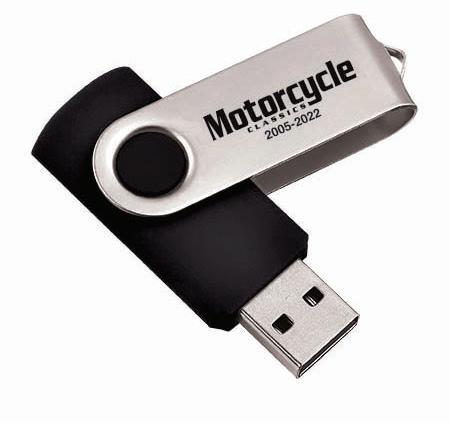



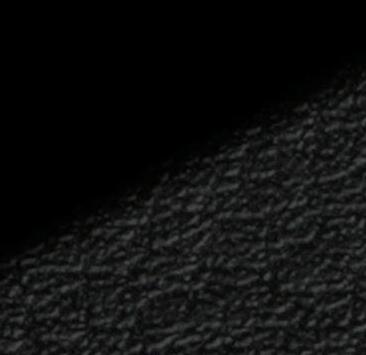











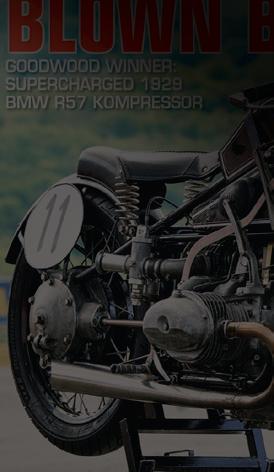

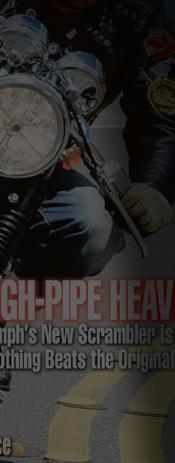





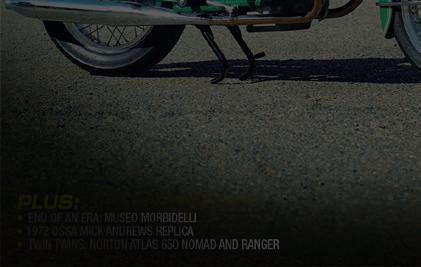


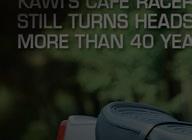
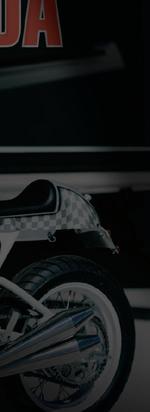
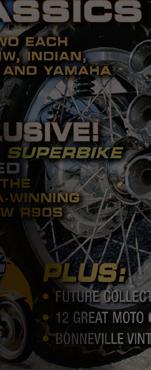
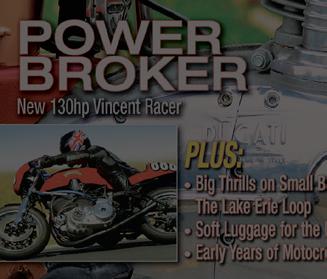
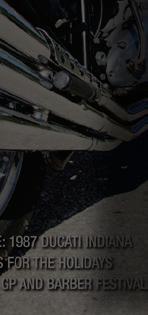




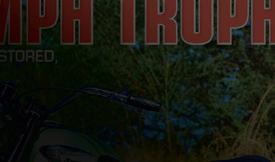








$
















































All events subject to change. Please check event websites for updated information.
The third annual Possum Vintage Motorcycle Gathering, a swap meet and show for all makes of vintage bikes, will be held again at the Sevier County fairgrounds in Sevierville, Tennessee. Bikes and parts at least 25 years or older are welcome. On site camping is available with numerous hotels and restaurants nearby along with some of the best motorcycling roads in the Smokies. Twenty-five awards will be presented at the Concours d’Possum bike show on Saturday the 13th. Vintage bicycles along with hit-andmiss engines will also be on display. Visit Facebook at “The Possum Motorcycle Gathering” or contact Patrick at pdeason@outlook.com
May 6 — The Quail Motorcycle Gathering. Carmel, CA. bit.ly/quail22
May 18-20 — 2023
VJMC National Rally. Lakepoint State Park, Eufaula, Alabama. vjmc.org
June 16-17 — Fort Sutter AMCA National Motorcycle Show and Swap Meet. Dixon, CA. fortsutteramca.org
June 16-18 — 49th
Head to the 54th Annual Hanford Cycle Swap and bike show, May 19-20, at the Kings Fairground in Hanford, California. Enjoy the classic motorcycle show with awards in a dozenplus categories, more than 150 vendors, a parts exchange and sale corral, RV hookups, food and more. On the web at hanfordcycleswap.com
Head to Heartland Motorsports Park in Topeka, Kansas, for a full weekend of AHRMA racing, Friday, May 26 through Sunday, May 28. There will be road racing, flat track and more. For updates and more, visit ahrma.org
Attend the 31st Annual British & Classic Motorcycle Show and Swap Meet put on by the Massachusetts British Iron Association at the Singletary Rod & Gun Club in Oxford, Massachusetts. For more info, visit massbia.com/events.html
Visit the Friends of Steve McQueen car and motorcycle show in support of Boys Republic, a private, nonprofit school dedicated to troubled teens, in Chino Hills, California. A welcome party takes place on Friday, June 2, followed by a commemorative dinner on Saturday, June 3, with the car and motorcycle show on Sunday, June 4. On the web at stevemcqueencarshow.com
Head to Road America in Elkhart Lake, Wisconsin, for the MotoAmerica Superbike Series & Vintage Motofest. Superbikes races are returning to America’s National Park of Speed on June 2-4, 2023. Attend the practice and qualifying racing on Friday, and experience all-day racing on Saturday and Sunday with eight classes of motorcycle road racing, including the Mini Cup Presented by Motul series. A highlight of the MotoAmerica Superbike weekend is Road America’s Vintage MotoFest on Saturday, June 3. Regarded as the premier Wisconsin ride-in vintage motorcycle show and party featuring an eclectic mix of Euro, Japanese and American vintage motorcycles, all makes and models are welcome! Enter your motorcycle upon arrival Saturday morning between 9-11 a.m. Bike show classes include: Café racer, rat bike, scooter, chopper, race/sport bike, military bike, stock/restored, fan’s choice, and judge’s choice. In addition to the ride-in-show and competition, enjoy stunt shows, premium motorcycle vendors from throughout the country and live music. On the web at roadamerica.com
May 20-21 — OVM
May Ride, Show and Swap Meet. Corvallis, OR. oregonvintage.org
May 21 — Jeff Williams
Motorcycle Swap Meet. Kansas City, MO. jwswapmeet.com
June 9-10 — AMCA Viking Chapter Annual Meet. St. Paul, MN. vikingmc.org
June 9-10 — 37th British in the Blue Ridge Rally, hosted by the Greater Atlanta British Motorcycle Association, Hiawassee, GA. gabma.us

Annual Canadian Vintage Motorcycle Group Paris National Rally. Paris, Ontario, Canada. cvmg.ca
June 23-25 — 11th
Annual AHRMA Vintage Motorcycle Festival & Swap Meet. New Jersey Motorsports Park. Millville, NJ. njmp.com
June 23-25 — Motoblot Urban Motorcycle & Hot Rod Street Rally. Chicago, IL. motoblot.com
June 23-25 — 29th
Annual Triumph National Rally. Oley, PA. triumphnationalrally.com















The Franklin Auto Museum has been called Tucson’s best kept secret. I believe it; I have been to Tucson many times and the museum was news to me. So was the Franklin automobile. I had never heard of either.


Industrialist Herbert H. Franklin owned a die casting company in Syracuse, New York, at the turn of the last century, and in 1901 he entered what promised to be a growing industry: automobile manufacturing. Between 1902 and 1934, Franklin made 153,000 cars (production ended as a result of the Great Depression). Franklin started with a small 4-cylinder car, but ultimately became a maker of large luxury automobiles, competing with Cadillac and other high-end marques. A new Ford Model A in those days was $600; a typical Franklin cost $3,000 with some selling for as much as $6,500. Franklin automobiles had air-cooled engines and an ingenious heat management approach. Franklins incorporated a scirocco (a cyclonic fan) just behind the grill, and a mechanical thermostat adjusted the grill louvers to control airflow and engine cooling. The sciroccos were sized to the engines (larger engines had larger sciroccos) with
airflow and consequent cooling capacity matched to engine speed and output. The first Franklins featured 4-cylinder engines; later models had 199-cubic-inch 6-cylinder engines followed by 398-cubic-inch V-12 engines (the V-12 engines used two banks of the 6-cylinder engine sharing a common crankshaft). Imagine that: An air-cooled, 398-cubic-inch V-12! Franklins first had shrouded vertical cooling fins around each cylinder; later models used horizontal cooling fins.
Thomas Hubbard, a successful Tucson engineer and businessman, overcame childhood respiratory ailments by moving to Arizona from New York to live with his aunt in the 1930s. After World War II, the New York Hubbard family moved to Arizona and purchased the estate that now houses the Franklin Auto Museum. The Hubbards were Franklin aficionados; they loved their Franklins and continued to drive them even after Franklin went out of business. Tom Hubbard bought his first Franklin (the first of many) in 1953. He started the Franklin Service Company in 1966 to focus on restoring Franklins. The Franklin Auto Museum has an impressive collection of 21 automobiles. All are in
magnificent condition (including a few that are in unrestored, original condition, and one with only 3,000 miles). Approximately 3,700 Franklins survive. The lone motorcycle in the Franklin Auto Museum is an original, unrestored 1913 Thor (see Page 18).
The Franklin Auto Museum is almost hidden in northeast Tucson’s Richland Heights area. The automobiles are displayed in four buildings and the grounds are well within the Tucson city limits, but when the ranch was built in 1925 the estate was far from what was then Tucson. The roads in the Richland Heights area remain unpaved by choice (they are easily navigated with any motorcycle or car, and it is only a mile from paved Prince Road to the museum entrance). The area around the Franklin Auto Museum is desert scrub and it is not likely you would stumble onto this best kept Tucson secret by accident. The museum is well worth a visit, and the two curators (Bourke and Anthony) love sharing their encyclopedic Franklin knowledge. I give the place two thumbs up, and that is only because I don’t have three thumbs. It is that good.
— Joe Berk
What: The Franklin Auto Museum, 1405 East Kleindale Road, Tucson, Arizona 85719, (520) 326-8038. Open Wednesday through Saturday, 10 a.m. to 4 p.m., from mid-October to Memorial Day. Admission is $12, with discounts available for senior citizens and students.






How to Get There: Take Interstate 10 to Tucson, then Prince Road east for 3.5 miles, and then a right turn on Vine. Although the address is East Kleindale, the museum entrance is on Vine.
Best Kept Secrets: The museum itself, its magnificent 1913 Thor motorcycle, and the Franklin air-cooled engine approach. Don’t Miss: Visiting this hidden gem. It is one of the most interesting museums we have ever encountered.
Avoid: Not engaging either of the curators (Bourke and Anthony greatly add to what you will experience here), and backing into a cactus while taking photos (don’t ask how I know).
More Info: bit.ly/franklinauto


More Photos: bit.ly/franklinautostory

Lois Pryce was working at the BBC in London, firmly set on the career track. Her days in a cubicle were numbered, and it wasn’t long before she was back on her bike and looking for adventure. Armed only with the Spanish words for “caution” and “cheese,” Lois set off to conquer America–both Americas, actually.

Starting in Alaska and working her way down the Pacific Coast, she rode through snow, desert, and everything in between to reach the southernmost tip of Argentina. Lois tackled every type of fellow biker imaginable and endured everything the continents could throw at her with quick thinking and a vibrant sense of humor.
Item #11338 $19.95
Member price: $17.96
To order, call 800-880-7567 or visit Store.MotorcycleClassics.com














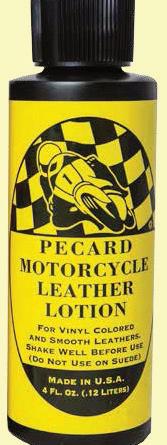

Mention promo code MMCPANZ2



Leather Care Co.




Neutral colored conditioner to preserve and protect oil tanned leather. May darken lighter colored leather a shade or two.








Black tinted conditioner to help cover minor scratches, abrasions, and help restore faded color of black oil tanned leather.




Motorcycle Classics continues to celebrate the 1970s with an exciting second volume of Street Bikes of ’70s.
Motorcycle Classics continues to celebrate the an exciting second volume of Street Bikes of ’70s great and classic motorcycles were designed and the ’70s, and Motorcycle Classics has put together 96-page special edition featuring articles that decade and what it brought to the motorcycle

e Honda CB550K, Ducati 750 Sport, Yamaha RD400, and many others are all covered in this glossypage, full-color guide. Whether you’re just discovering these bikes or have been riding them since they rst came on the market, you’re sure to enjoy this special edition.
Item #9840 $6.99 Members: $5.59











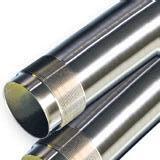


Promo code: MMCPALZ3










Item #9840 $6.99
Members: $5.99































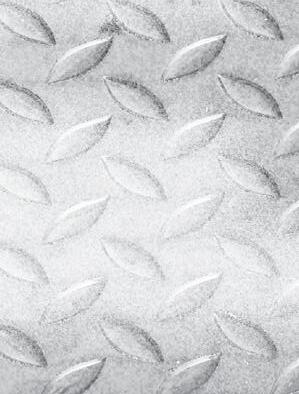









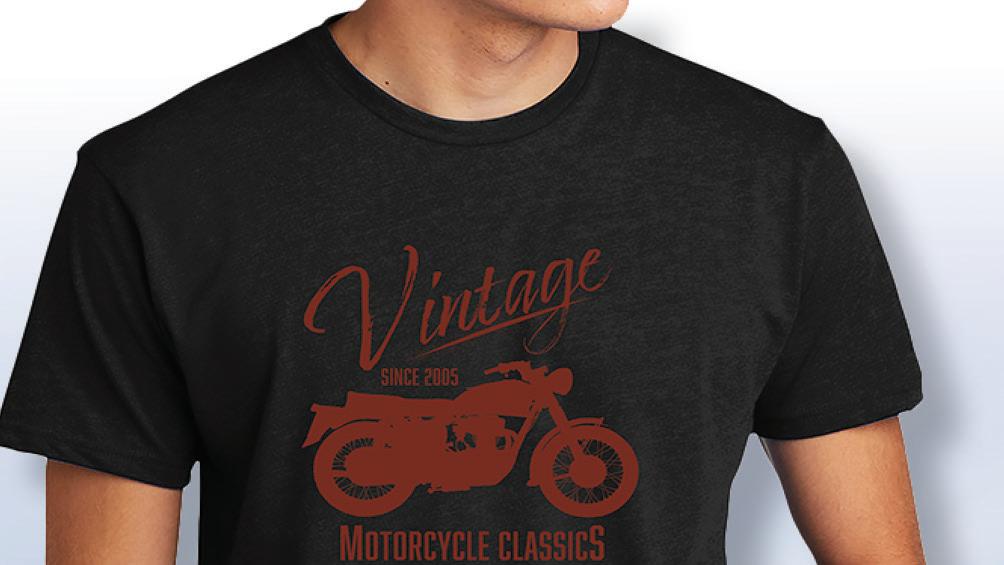





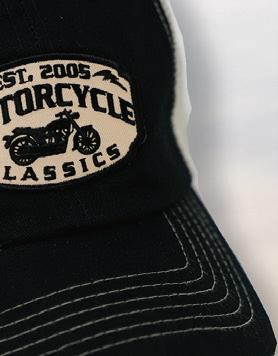




























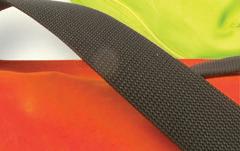
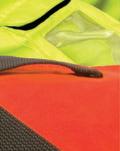












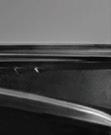






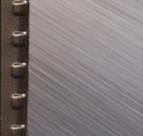










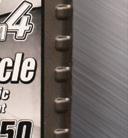

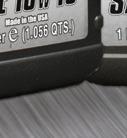


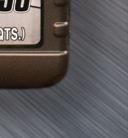








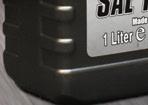
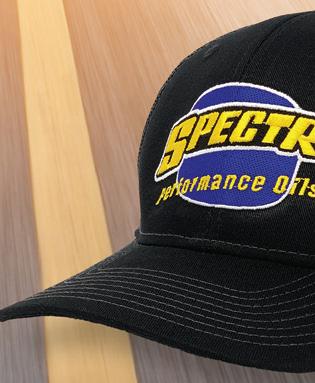







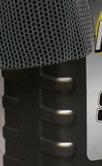







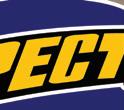






MAKE YOUR OWN HISTORY. BOOK YOUR CUSTOM TOUR

SHOW UP AND RIDE!
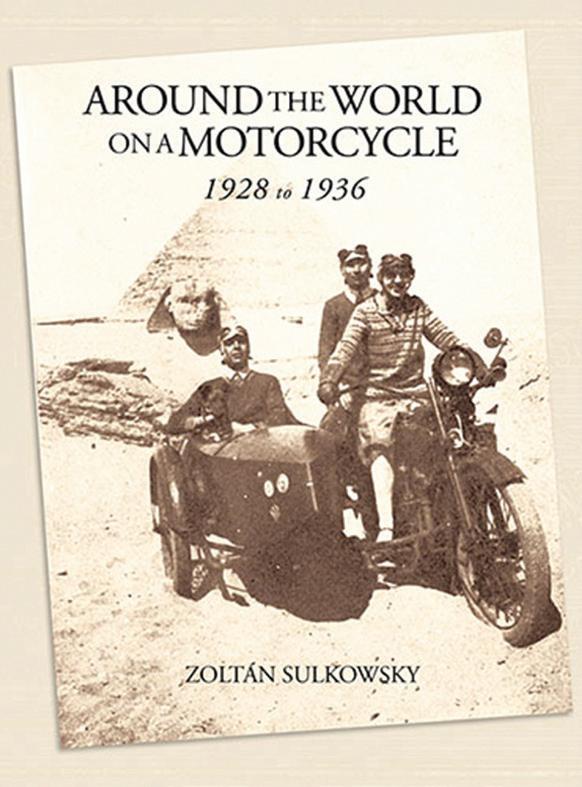
80% of bikes are misaligned by using swing arm marks, sprocket aligners or string. Use ProAligner to align your wheels directly with CMM-certified accuracy for precise handling.
Belgium, WI 262-483-5399


$19.95 US plus S&H. www.ProAligner.com Adaptive_Mount_MCC_12th_Kickstd_REV3KLM.indd 1 daptive_Mount_MCC_12th_Kickstd_REV3KLM.indd 1/13/15 8:32 AM


80% of bikes are misaligned by using swing arm marks, sprocket aligners or string. Use ProAligner to align your wheels directly with CMM-certified accuracy for precise handling. www.ProAligner.com

$19.95 US plus S&H.
www.tracksidecycles.com


Established in 1976
Polishing, Zinc Plating,










Chrome finishes

224-321-4912 TRACKSIDE CYCLES

$740!
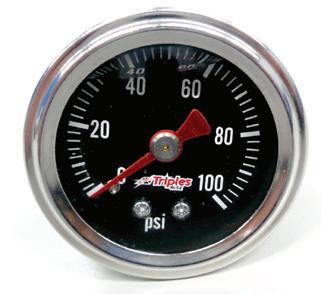


















“ We bought 4 full truckloads of new original parts from the closed warehouse in Duarte CA. Everything from Bantam to Rocket III ” - Car l
“ We bought 4 full truckloads of new original parts from the closed warehouse in Duarte CA. Everything from Bantam to Rocket III ” - Car l

















(314) 427-1204
(314) 427-1204






The Motorcycle People - Since 1962
The Motorcycle People - Since 1962
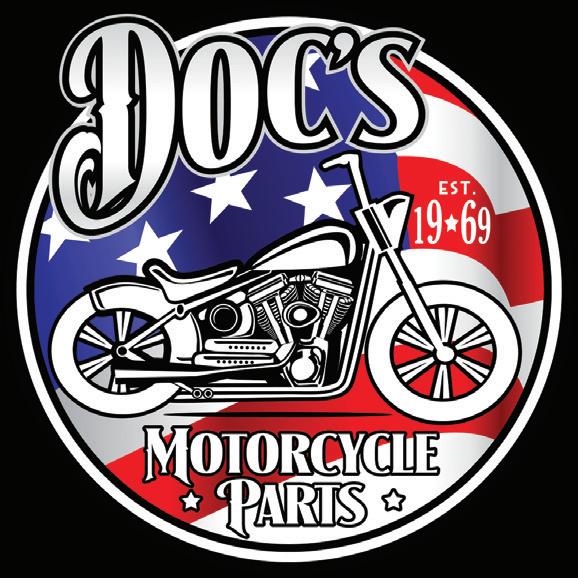







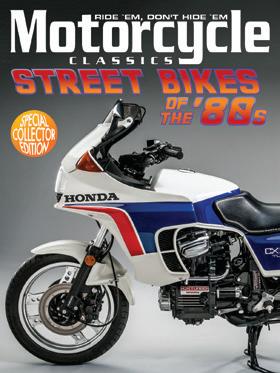
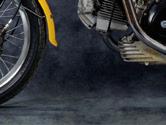






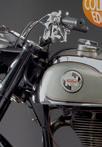
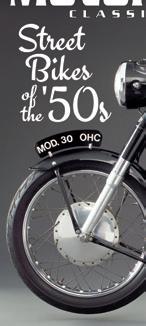


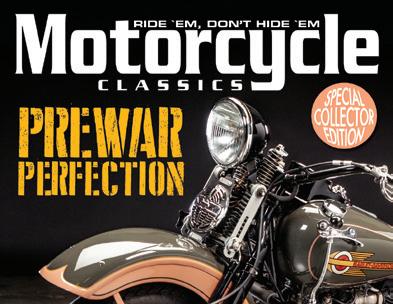
St. Charles Rock Road, St. Ann, MO 63074
St. Charles Rock Road, St. Ann, MO 63074








The 19th edition of the Comprehensive Vintage Motorcycle Price Guide contains over 160,000 prices for over 105 different motorcycle marques in six different conditions. Through hundreds of hours of research and data entry, formed by the opinions and data gathered by more than 450 worldwide dealers, auctioneers, collectors, and experts in the vintage field, this is the most accurate price guide available. It also contains more data than any other, as all major marques (and many lesser-known marques) are included.

#11828 $20.95 Members: $18.86









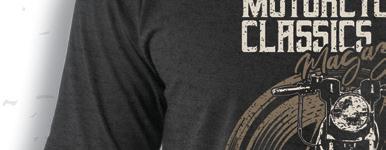



This Motorcycle Classics T-shirt will quickly become an old favorite! Made of super-soft material, this shirt is perfect for wearing on your rides or when you’re working on your bike. Emblazoned with an outline of a Norton Commando and our slogan, “Ride 'Em, Don’t Hide 'Em,” this shirt announces to everyone your love of motorcycles and Motorcycle Classics! #10693-10698 $15.00-17.00 Members: $12.75/13.60/14.45
THE ESSENTIAL BUYER'S GUIDE: TRIUMPH TRIDENT & BSA ROCKET III 1968-1976
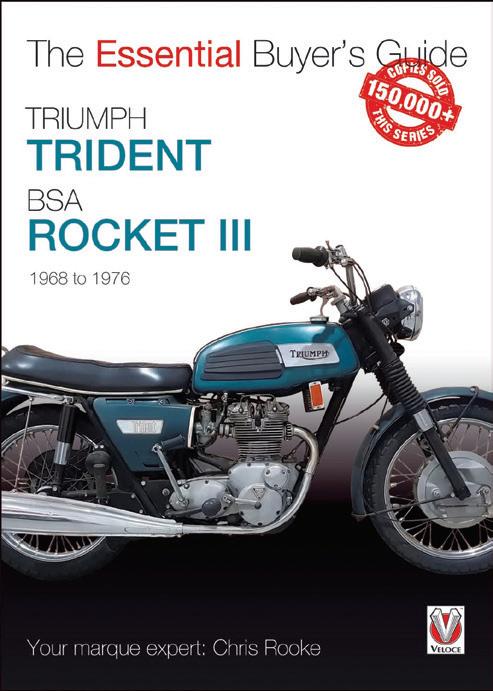
Having Triumph Trident & BSA Rocket III in your pocket is just like having a motorcycle marque expert by your side when you're shopping for one of these classic Triumph motorcycles. Benefit from Chris Rooke's years of experience with Triples, learn how to spot a bad bike quickly, and how to assess a promising one like a professional mechanic. Packed with good advice - from the difference between models and which is the right one for you - this is the complete guide to choosing, assessing and buying the Triumph Trident or BSA Rocket III of your dreams! #10834 $25.00 Members: $21.99
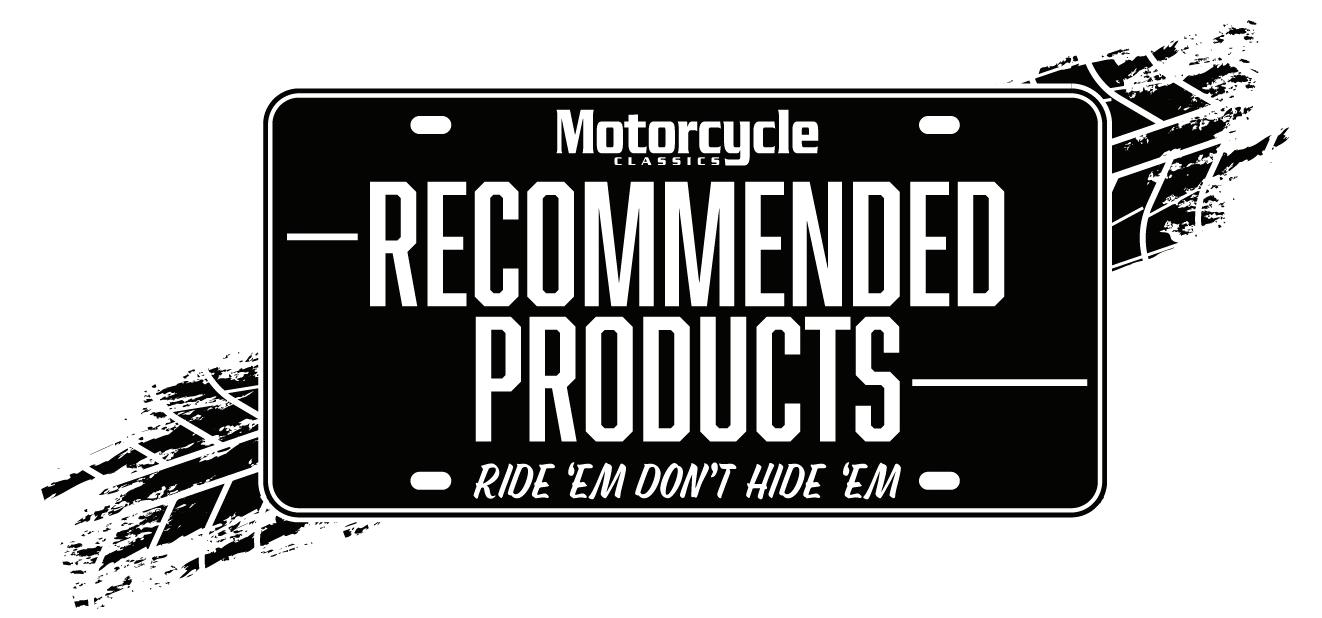
This book will guide you through every stage of classic motorcycle restoration. From sourcing a bike to outlining each of the techniques, tips, and tricks used by experts, this guide will save you time and money and - best of all - show you that you don't need expert knowledge or a fully-fitted workshop to restore your dream bike. Packed full of photographs and with detailed instructions, this book is the perfect companion for any classic motorcycle restorer.
#11901 $49.95 Members: $42.46





Vintage Collection Series: Four-Stroke Motorcycles contains repair and maintenance information for most single and multi-cylinder motorcycles with engine displacement of more than 85 cc and covers models produced in the early 1960s through the mid-1970s.
#10926 $39.95 Members: $34.99






Classic British Motorcycles tells the story of small British pioneering firms, whose engineers – (many self-taught) were fired by racing ambition, commercial rivalry, patriotic duty and, above all, a passion for innovation. Superbly illustrated with more than 150 color pictures, many previously unpublished. This is a captivating and highly informative account of the men, machines, race meetings and world events that shaped the development of the motorcycle from its bicycle origins that you don't want to miss!
#7758 $32.00 Members: $27.99










A complete workshop guide to restoring and maintaining your classic British motorcycle. Covering the principles of restoration and maintenance, and therefore applicable across all post-war classic British marques, this book covers everything from general maintenance procedures to full engine strips and rebuilds.


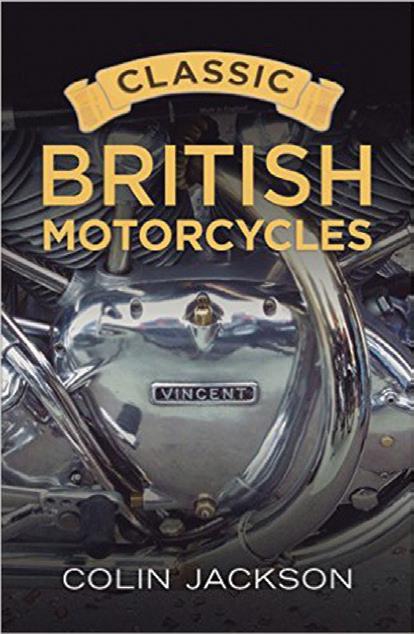
#10893 $59.95 Members: $49.99








This book is written by respected motorcycle expert Ian Falloon and offers enthusiasts a thorough review of Guzzi’s storied 100-year history via all of its production models. This new edition of The Complete Book of Moto Guzzi includes a 100th anniversary introduction, new photography, and additional pages to cover the newest models from 2018 to 2020. All of Moto Guzzi’s production models are covered in detail, including the groundbreaking Falcone, the V-8 Grand Prix racers, the V7 Sport, and more!
#10547 $60.00 Members: $54.00




Phil Aynsley has been a fan of Ducati since he bought his first motorbike, a 250 Desmo, in 1972. Aynsley’s love for Ducati’s is matched only by his passion for photography. “Ever since buying my first in 1972 I’ve been taking photos of them. How could you not?” After 30 years he hasn’t tired of his beloved Ducati’s and is revered by the motorcycle industry as one of the best photographers in the business. Ducati lovers will relish Volume 2 with its expanded section on Road and Race bikes and a raft of new photos not previously released. It’s a must-have for any Ducatisti!
#11380 $55.00 Members: $49.99



In Shifting Gears at 50, author Philip Buonpastore emphasizes what older riders should be aware of and which factors can affect their rides. Split into two parts, the book first covers safety advice to consider and precautions to take while on your ride, followed by unique photographs and insights from five of the author’s favorite long distance tours around the country.


#9356 $24.95 Members: $21.21
MV AUGUSTA SINCE 1945: BIRTH, DEATH AND RESURRECTION
Alongside an accomplished list of racing bikes, MV produced a wide range of street models, including the exotic four-cylinder bikes based on the Grand Prix racers of the 1950s and early 1960s. After closing in 1977, MV Agusta was resurrected in 1997 and released the Massimo Tamburinidesigned four-cylinder F4, which was followed up in 2012 by the three-cylinder F3. This book, by famed author Ian Falloon, tells the full tale of this iconic brand and the rocky path it took to legendary status.

#11906 $130.00 Members: $110.50


This unique book examines the re-invention and rise of Triumph Motorcycles, providing an exclusive look into this legendary company. Author David Clarke takes you through the story of building the new Triumph factory, the design, development, and manufacturing of the new range of bikes, stories from members of the original design team, the Speed Triple Challenge, and more.
#11900 $39.95 Members: $33.96
Obsessions Die Hard is the story of Ed Culberson’s determination to fulfill his dream. As a teenager he was fascinated with the Pan-American Highway System that runs the length of North and South America, and in his early forties, he acquired another passion—motorcycling. It was only natural that he would merge the two. A story of one man’s struggle with his own obsession, this is an amazing tale of human endurance and perseverance.

#11101 $26.95 Members: $23.99
MOTOCROSS: THE GOLDEN ERA


SINCE






The Complete Book of BMW Motorcycles offers a thorough year-by-year guide to every production machine ever built by Germany’s leading motorcycle manufacturer. From the first model, the 1923 R32 that launched BMW's motorcycle dynasty, to the latest (and fastest) superbike, the S1000RR, this book captures nearly a century of motorcycling excellence in a combination of historic and contemporary photos. Plus, technical specs are provided for each model.
#10308 $55.00 Members: $48.99
Motocross: The Golden Era is a heartfelt tribute to a magical time. It’s a look back at a moment in history between 1970 and 1986 when motocross came of age. Old four-strokes were suddenly overshadowed by a new breed of specialized two-strokes that would change the sport forever. The sport suddenly exploded in America, and a massive new market was born. It was also a time of experimentation, with radical new ideas being tried daily.
#11892 $199.99 Members: $149.99

















Relive the turbulent story that is the Triumph Trident and BSA Rocket 3. Seemingly cut straight from a Hollywood script, this book drops you into the 1960’s when BSA/Triumph learned that Honda was set to launch a 750cc motorcycle that would certainly outclass its 650cc twins. From there you will ride along and witness the highs and lows that BSA/Triumph experience as they fight to survive and outlast the competition. From a factory race team to bike launches and updates, this book tells the whole story of the Triumph Trident and BSA Rocket 3. #11903 $36.99 Members: $31.44

This is a comprehensive, visual history of the motorcycles from Britain that were bred in the US and Canada.
Triumph Motorcycles in America is packed with thorough, entertaining text, plus hundreds of historical images, most of them in color and never before published. This incredible volume of history and culture was written by awardwinning professional journalist and lifelong Triumph fanatic Lindsay Brooke, with a foreword by America’s favorite “Triumph guy,” Peter Egan.
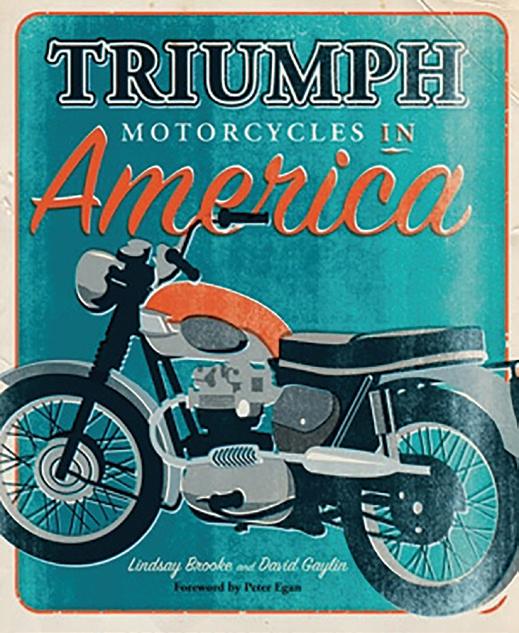
#8708 $60.00 Members: $51.00




In his previous book, Jupiter’s Travels, Ted Simon tells the story of his four-year ride around the world. At age 69, out of shape, barely able to do one push-up, or lift his bike, he says: “Why not do it again?” And, unbelievably he does. Simon's journey through 59,000 miles and 5 continents will inspire riders to defy their years and hold on to their dreams.

#10729 $24.99 Members: $21.99








Triumph Motorcycle Restoration Pre-Unit takes a thorough look at what is required to restore a Triumph 650cc Twin built before 1963. This book is based on two, complete, start-to-finish assemblies, which are documented with hundreds of color photographs. Copy includes all necessary details including torque specifications. Also shown is the complete assembly and overhaul of both the 650cc engine and the four-speed transmission. Altogether, this book offers 144 pages and more than 450 photos explaining how to buy, build and restore a Triumph 650cc twin manufactured before 1963.

#6117 $29.95 Members: $24.99


Vintage Dirt Bikes is for those who are looking to purchase and restore once forgotten dirt bikes. Readers will learn the relative cost to acquire, value when finished, and which makes offer the most fun for the money. Also, learn what to look for when checking the condition of items such as paint, suspension, frame and engine. A general section shares where to buy classic bikes, get parts, who to call for help, and which parts of the restoration should be farmed out to experts.

#7524 $32.95 Members: $27.99









Historic Motorcycles 1885-1985 provides the reader with stunning fullcolor photographs of more than 100 of the world’s most beautiful and rare motorcycles. Author Richard Renstrom spent more than 50 years accumulating this library of photos of vintage motorcycles from 12 countries. Each photograph is accompanied by a detailed historical essay documenting the origin of each motorcycle as well as the technical specifications that make each machine a true original.

#8079 $40.00 Members: $34.00








Whether considering an oceanto-ocean cross-country journey, a vacation ride through the Canadian Rockies, a full-length tour of the Blue Ridge Parkway, or an ambitious Four-Corners ride,
Through North America provides the "big-idea" guidance every rider needs to plan fun-filled motorcycle tours throughout the continental United States and Canada.

#10368 $32.99 Members: $27.99









With more than 200 photographs, this book describes the origins of the Royal Enfield Company and the pre-war Bullets from 1932 and the relaunch of the Bullet in 1949. Derivative models and those built for competition and road are covered as well as specials such as diesels, V-twins, Egli, and bigbore Bullets. The development story behind the lean-burn, electric-start, and 5-speed updates is also discussed. Finally, the evolution beyond the Bullet is covered, including the Continental GT and Himalayan 650 twins.
#11902 $36.99 Members: $31.44



Even the most hands-on of classic bike enthusiasts will often shy away from working on their bike's electrical system, believing they have neither the skill nor the knowledge for such work. Dr. James Smith explains in Classic Motorcycle Electrics Manual that this need not be the case. Starting with basic electrical theory, the book demonstrates a wealth of electrical tips and techniques, providing a progressive and detailed guide to tasks ranging from simple repairs and upgrades to completely rewiring a classic motorcycle.
#11904 $50.00 Members: $42.50

Get an inside look at the man behind Triumph in Edward Turner!

Although seen by many as an irascible man who ran a very tight ship, it is an inescapable fact that Triumph was a highly profitable, industry pushing company. Inside you'll learn all about his life and how he was able to write history with his one-of-a-kind motorcycles.
#10650 $40.00 Members: $34.00


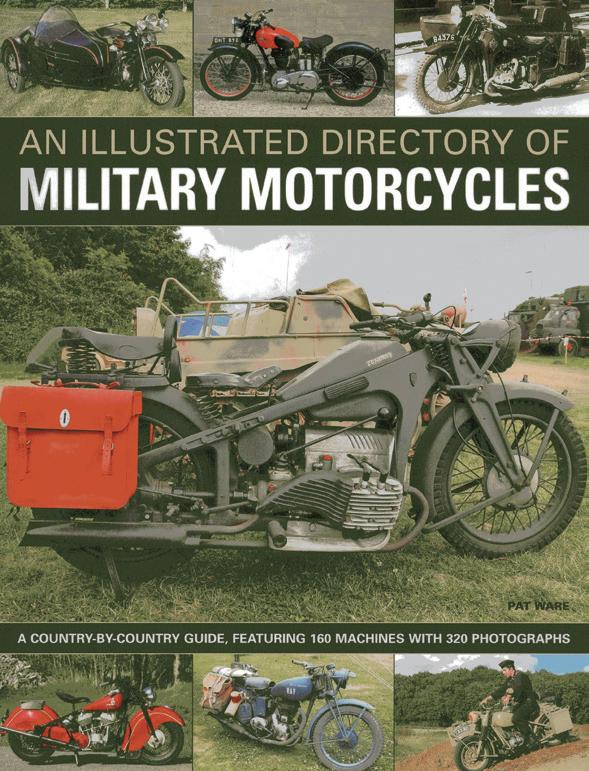






This book focuses on 160 of the most important military motorcycles to ever exist, showing the incredible diversity of the types. Detailed specifications include country of origin, type, manufacturer, production date, engine, transmission, suspension, brakes, dimensions, and performance. With over 320 rare and previously unseen photographs, this highly illustrated reference book provides enthusiasts and historians with key information about these diverse and multi-tasking machines.

#11905 $17.99 Members: $15.29

As comedian Steve Martin would say during his stand-up skits, “Hey, let’s get small …” In this case we’re going to shrink into the world of Pocketbike racing, a form of powersport (treating the term loosely here) competition that originated in Asia in the 1970s. The sport was especially popular in Japan, and by 1982 there were more than 100 mini-size race tracks scattered about the island nation. About that same time, Pocketbike racing reached America. It gained a foothold in Southern California when the United States Pocket Bike Association formed in Gardena. Most of the first races were run at a small serpentine race course built for junior-size Malibu Grand Prix race cars adjacent to Ascot Raceway. (MGP was a business that rented the cars to customers for beatthe-clock timed solo laps).
Standing about knee high to most adults, a typical Pocketbike looked for all the world like a mini road racer. The frame had no suspension other than the cute little air-filled donut tires connecting the bike to the pavement. Engines were single-cylinder 2-strokes, usually displacing less than 50cc and good for about 1.5 to several horsepower. No need for shifting gears, either. The direct-drive centrifugal clutch allowed for twist-and-go riding, making the bikes especially popular among youths. In fact, racing was intended for children of all ages, and as you might guess Peter Pan adults (read: dads) often joined the action, too (for safety’s sake, classes were
segregated to the respective age groups). And speaking of Peter Pan adults, as Sport Editor for Cycle Guide magazine at the time, I was invited to sample a Pocketbike for a magazine “Track Test” article. My mount was a Dandy MR30, a thundering beast powered by a vicious 2-stroke engine that belched 1.98 horsepower, translating to a top speed of 35 OMG mph.
Odds favored me crashing the bike, which I did — its short wheelbase and twitchy steering behavior amplified the affects of its 155-pound payload; that combination superseded my reaction time when a minor bump in the track’s otherwise smooth pavement prompted a low-speed wobble. As my body slowly settled into, as I reported, “ground, sky, ground, sky, ground sky” acrobatics, I couldn’t help but laugh at the chain of events.
Elsewhere in that same CG issue I reported on Pocketbike Racing. My narrative included mention of a youngster named Ricky Goujon who stated that he hoped his Pocketbike experience would one day lead to real road racing. The 14-year-old said he wanted to race a Yamaha TZ125 because, as he stated, “It’s the next obvious step.”
I don’t know if young Goujon ever made it that far. I hope that he did. If you know of him or any former Pocketbike racer who made it to the big-time, please let us know. It would be a fitting legacy to what otherwise might be considered a minor blip in our Moto-History. — Dain Gingerelli
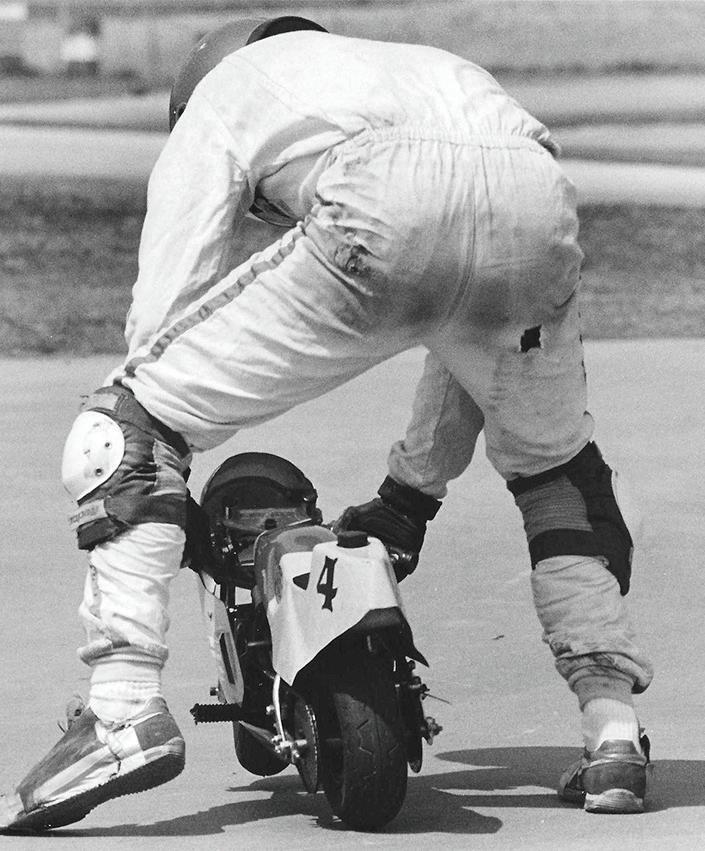













Discover more • COMFORTABLE: Seamless and customizable linings. OEKO-TEX 100 certified.
• SMART: Pre-wired for plug-and-play comm system featuring MESH 2.0
